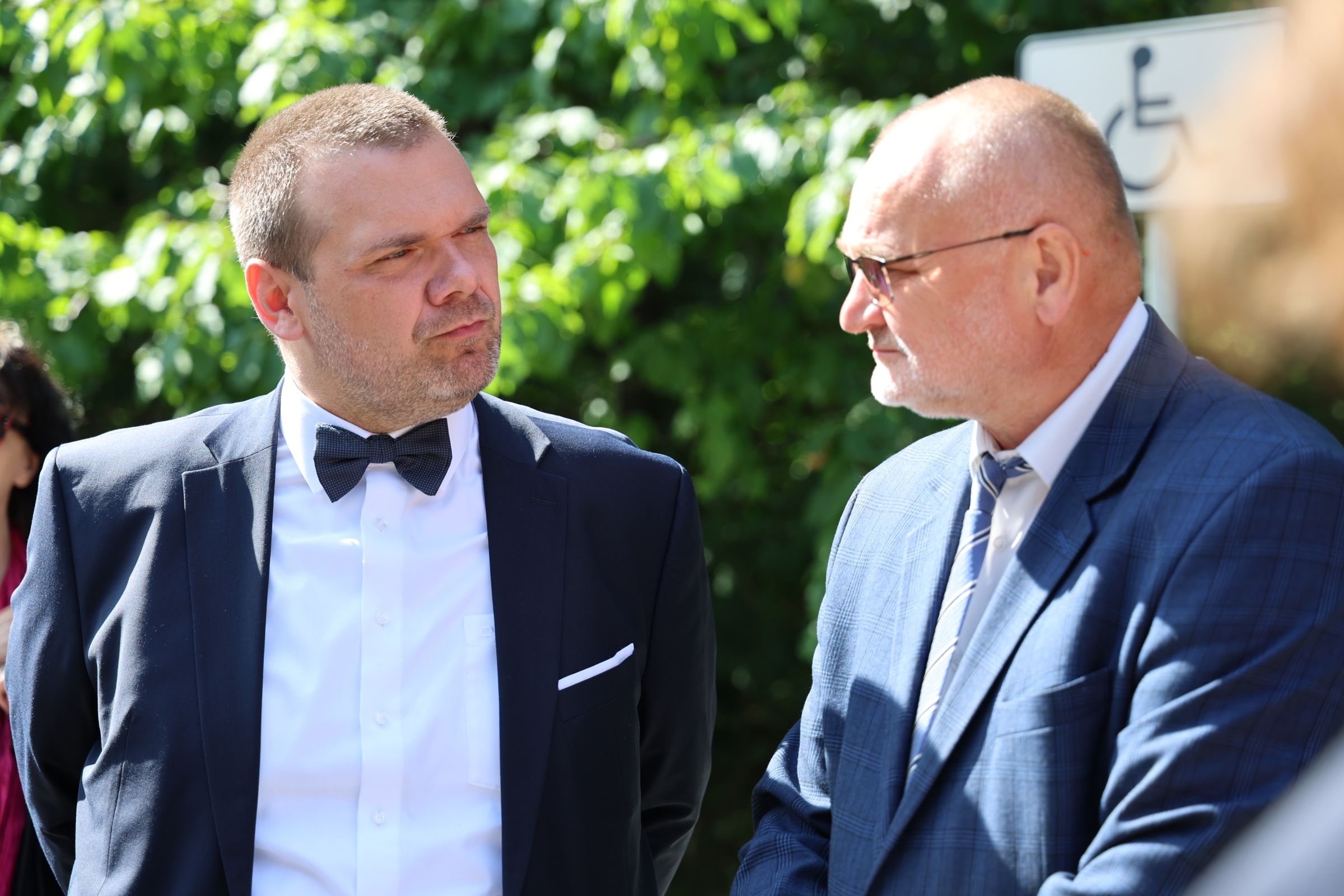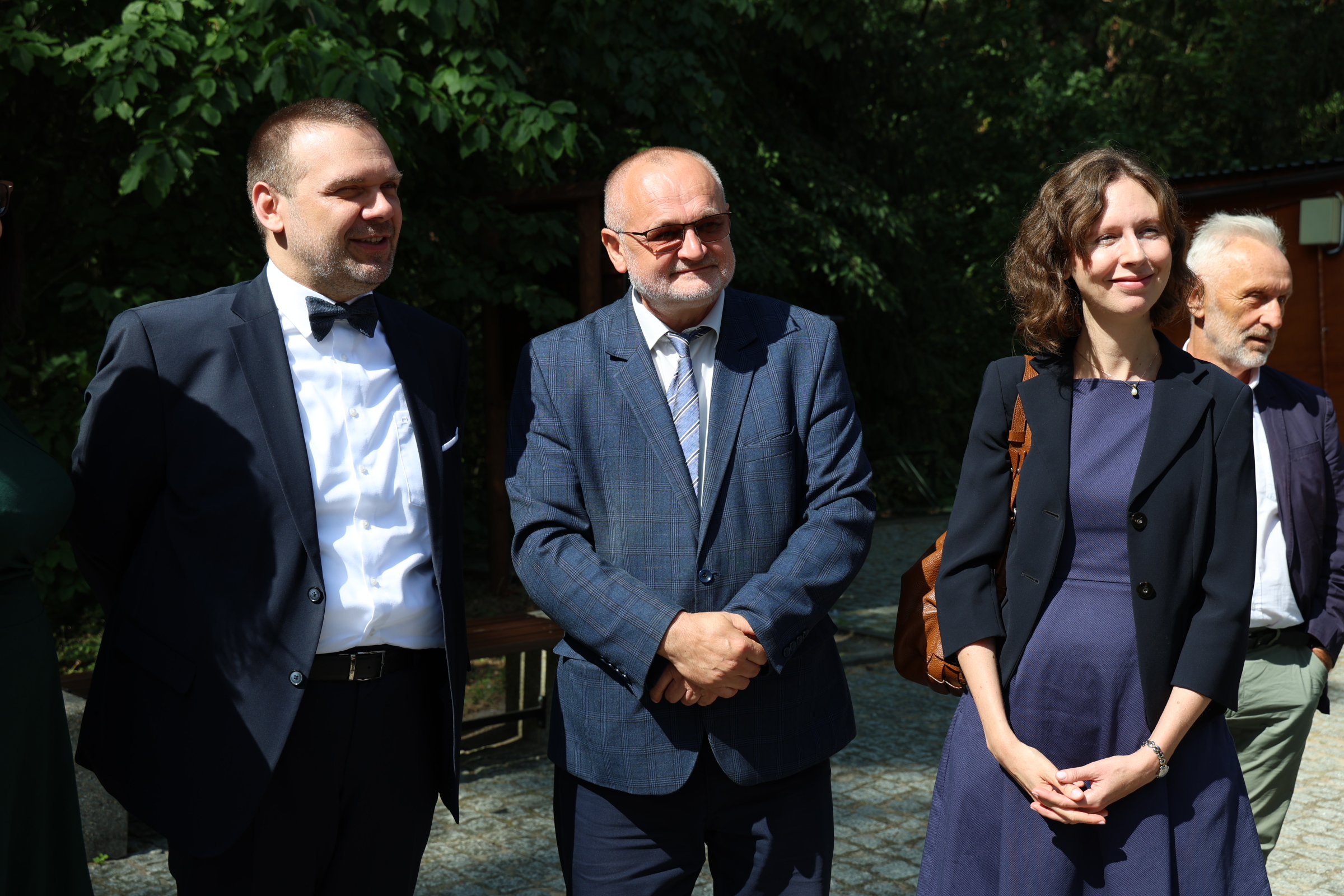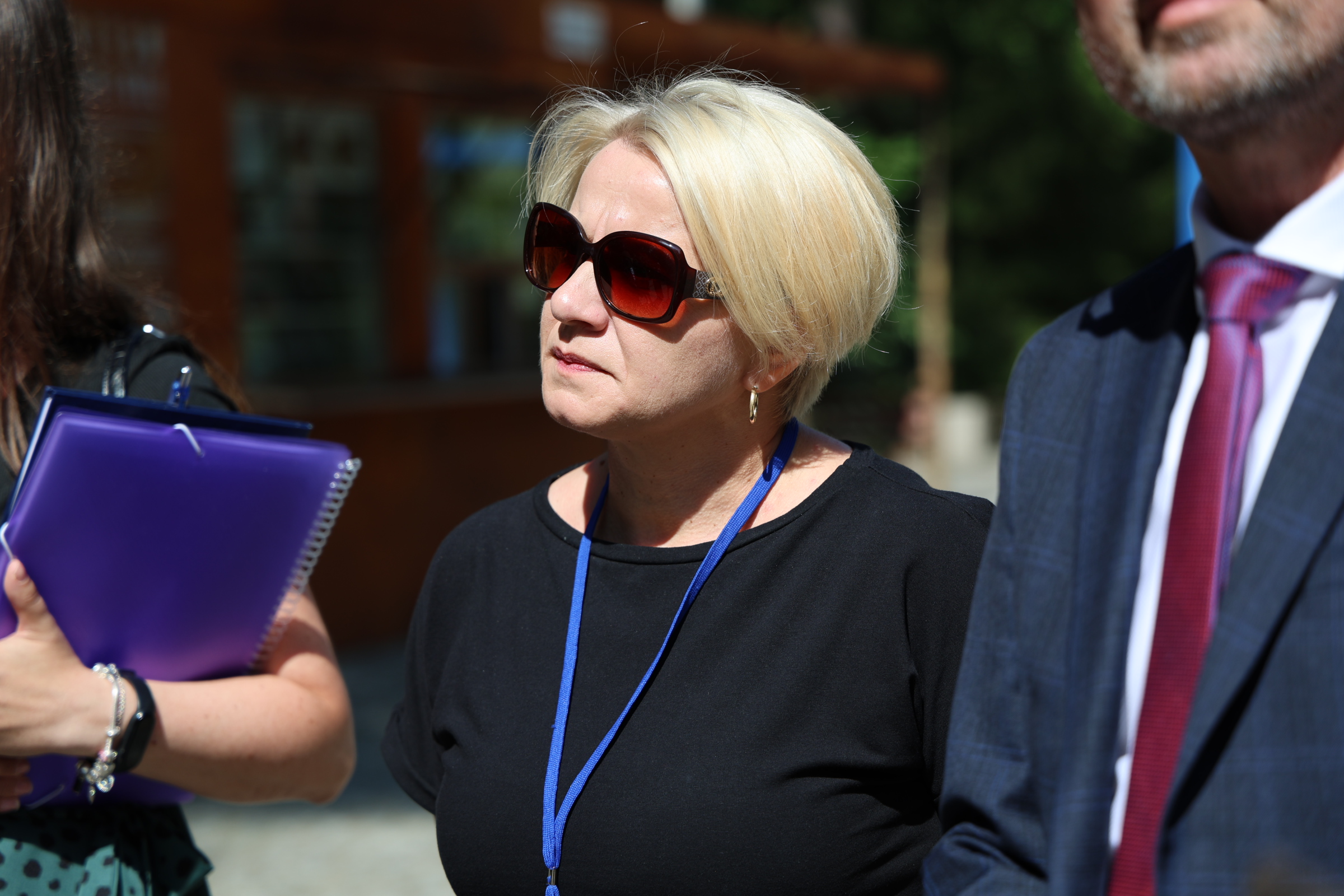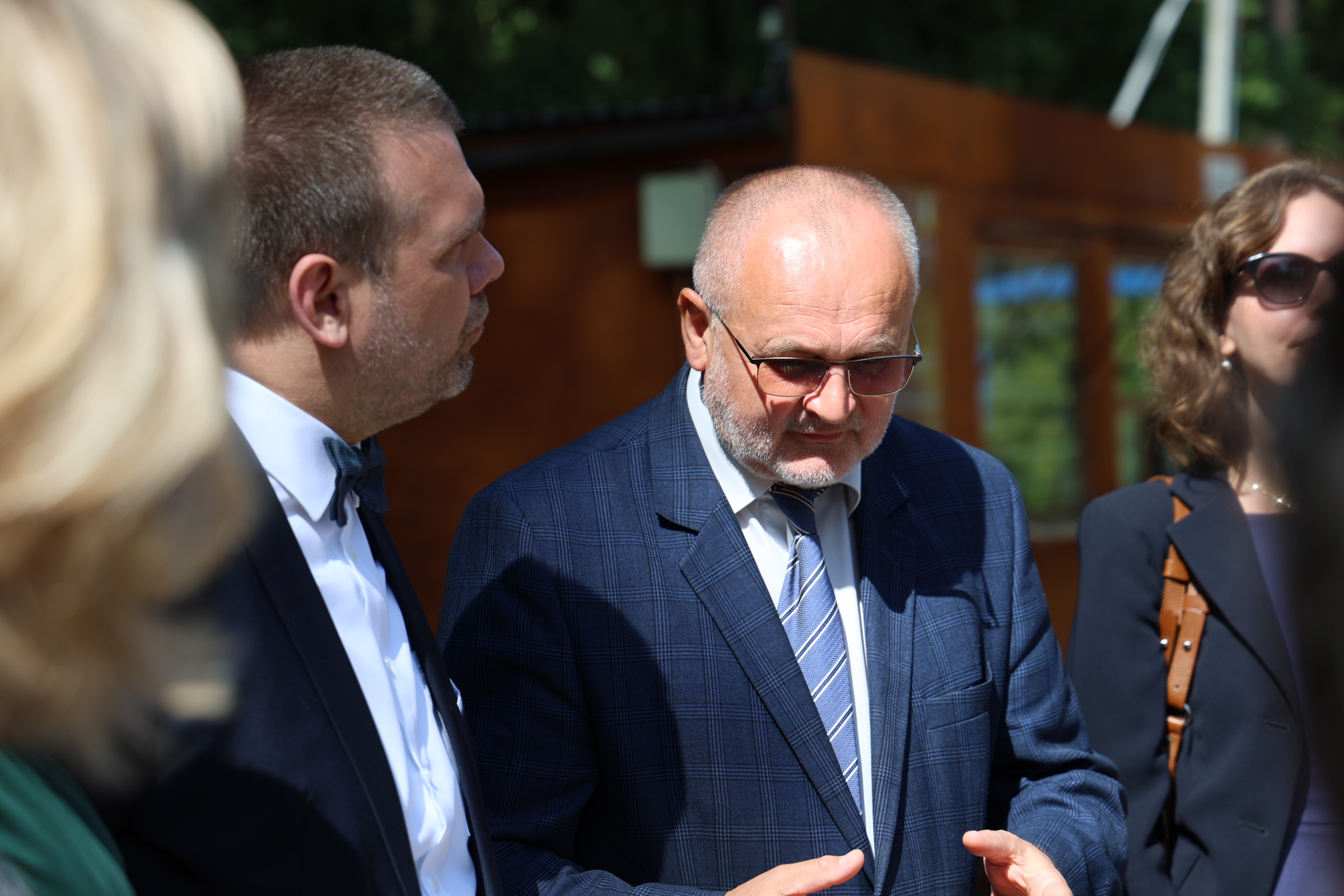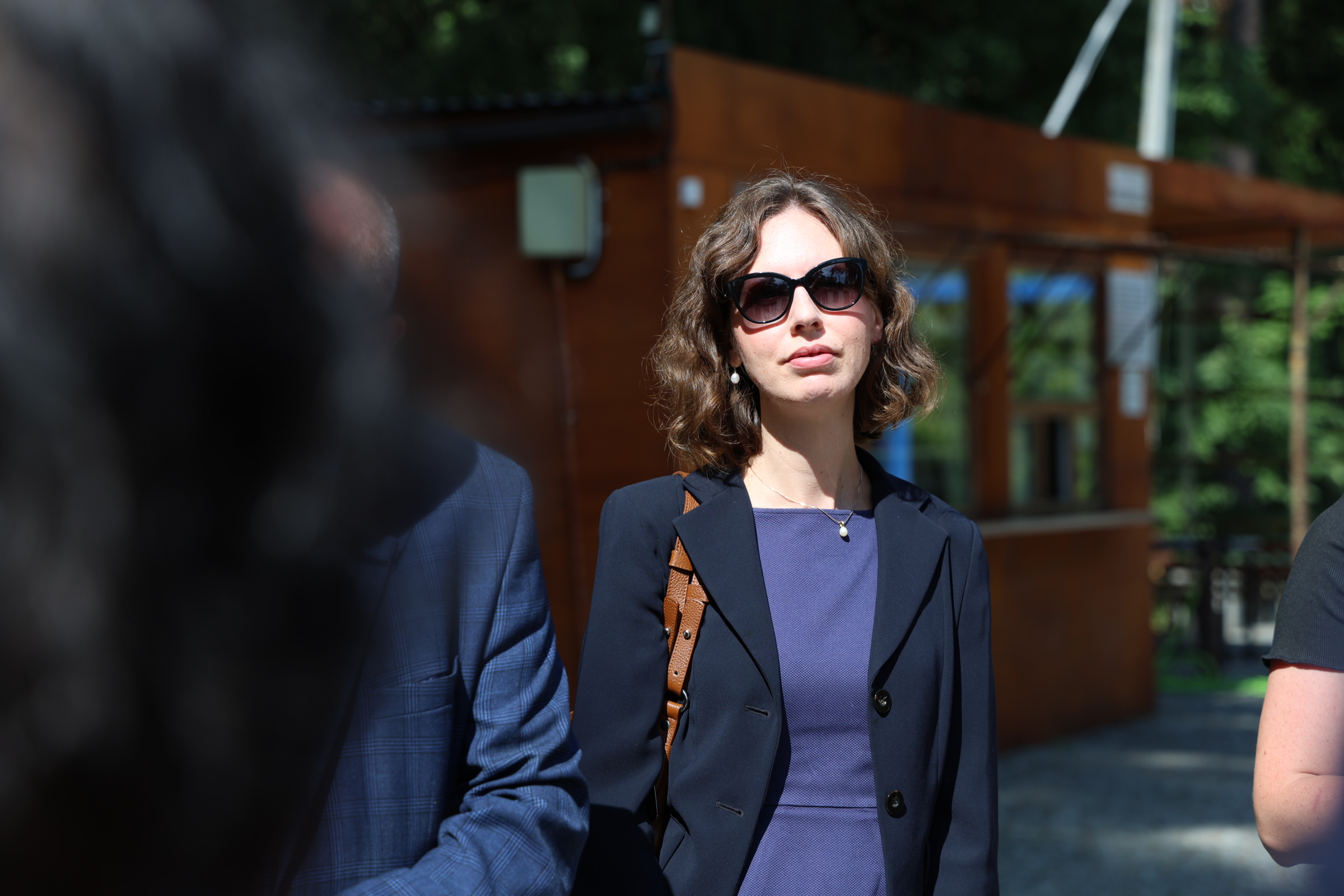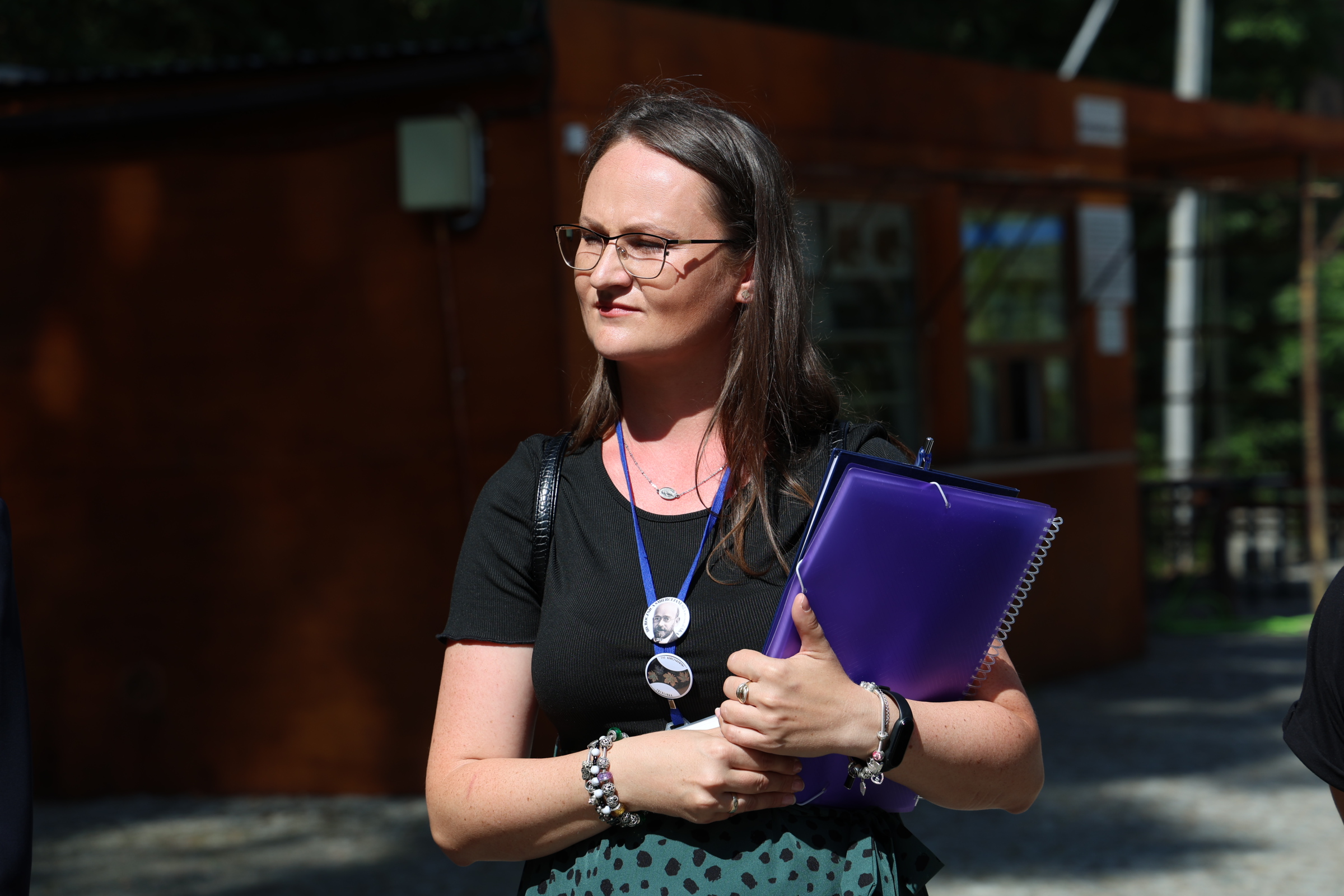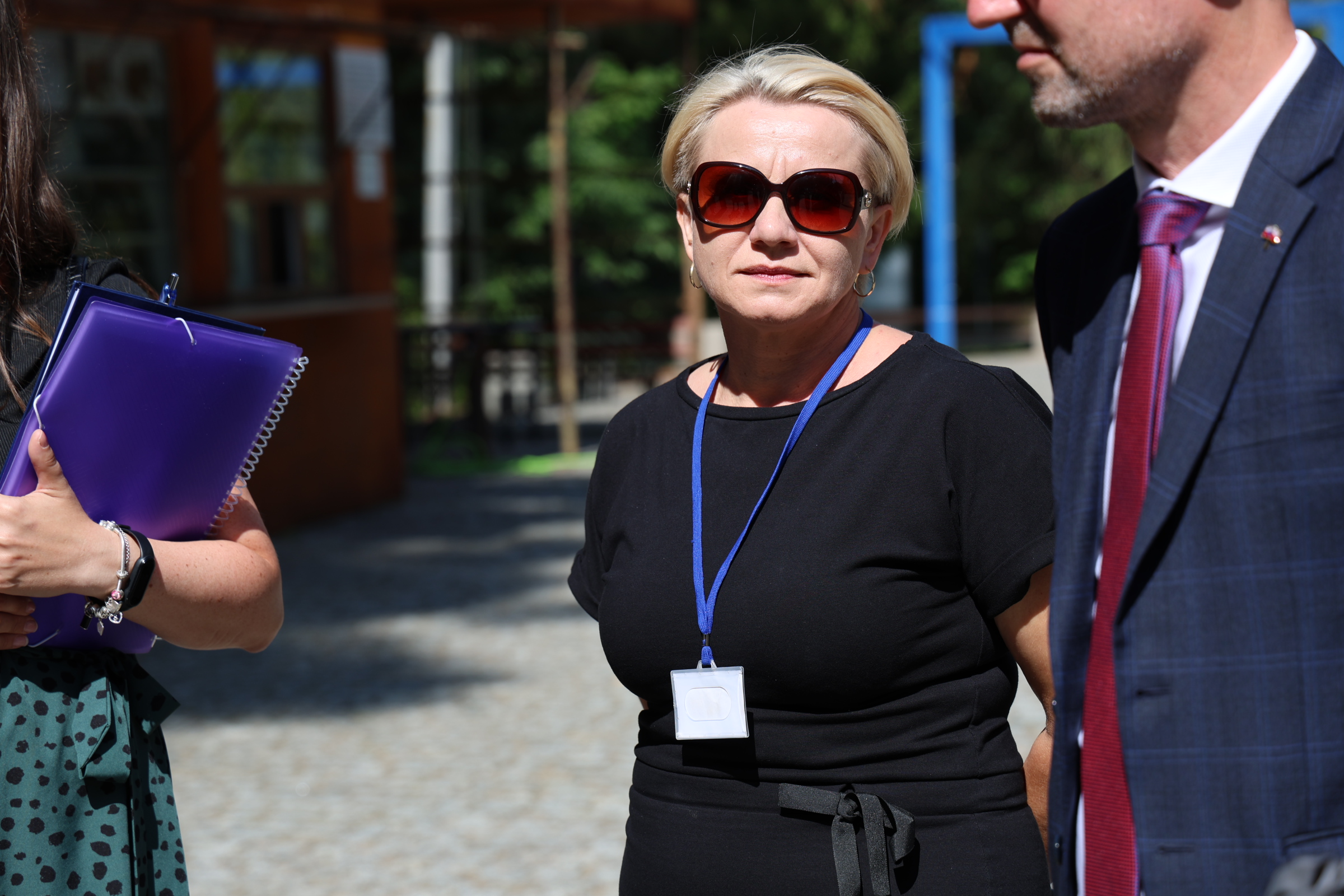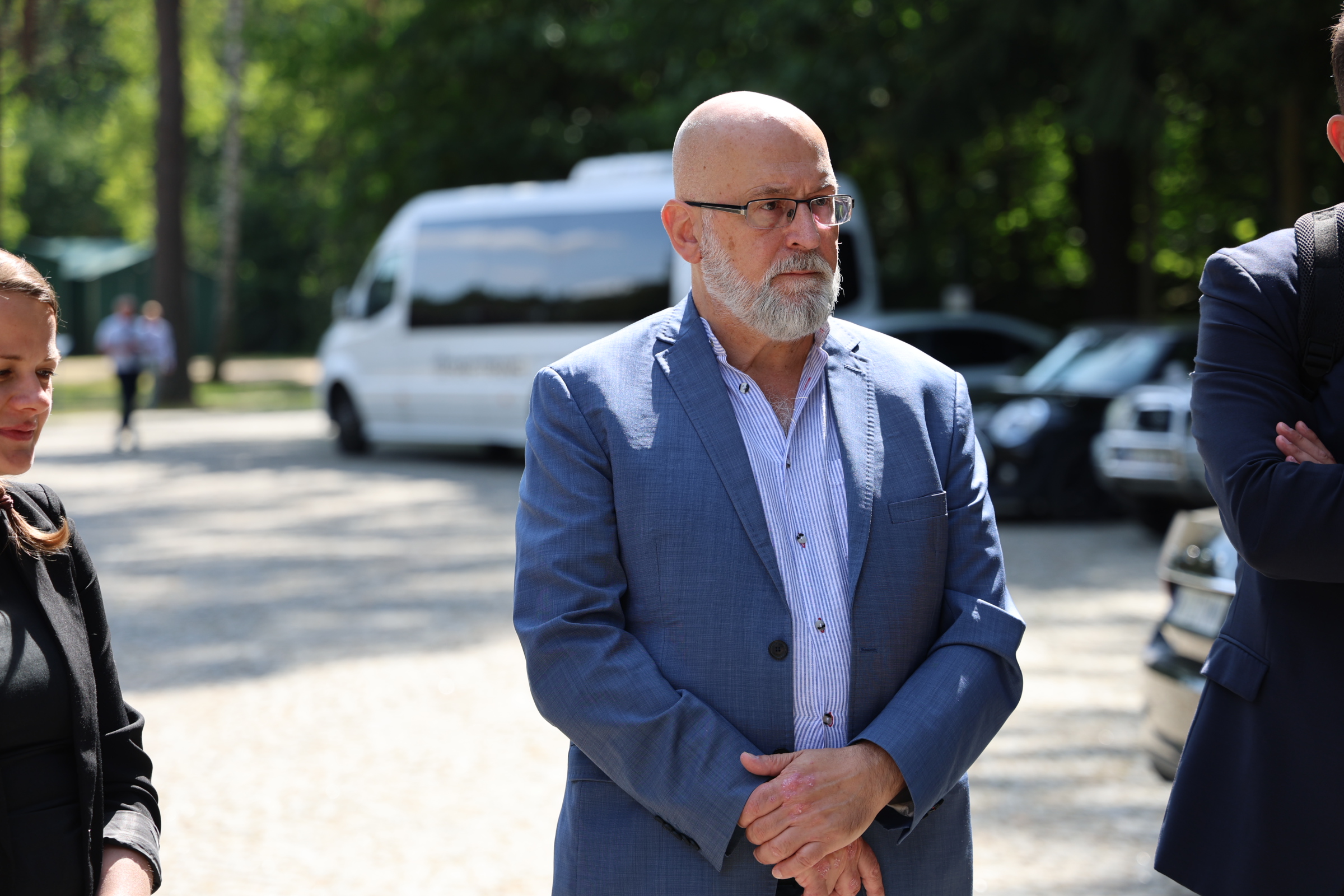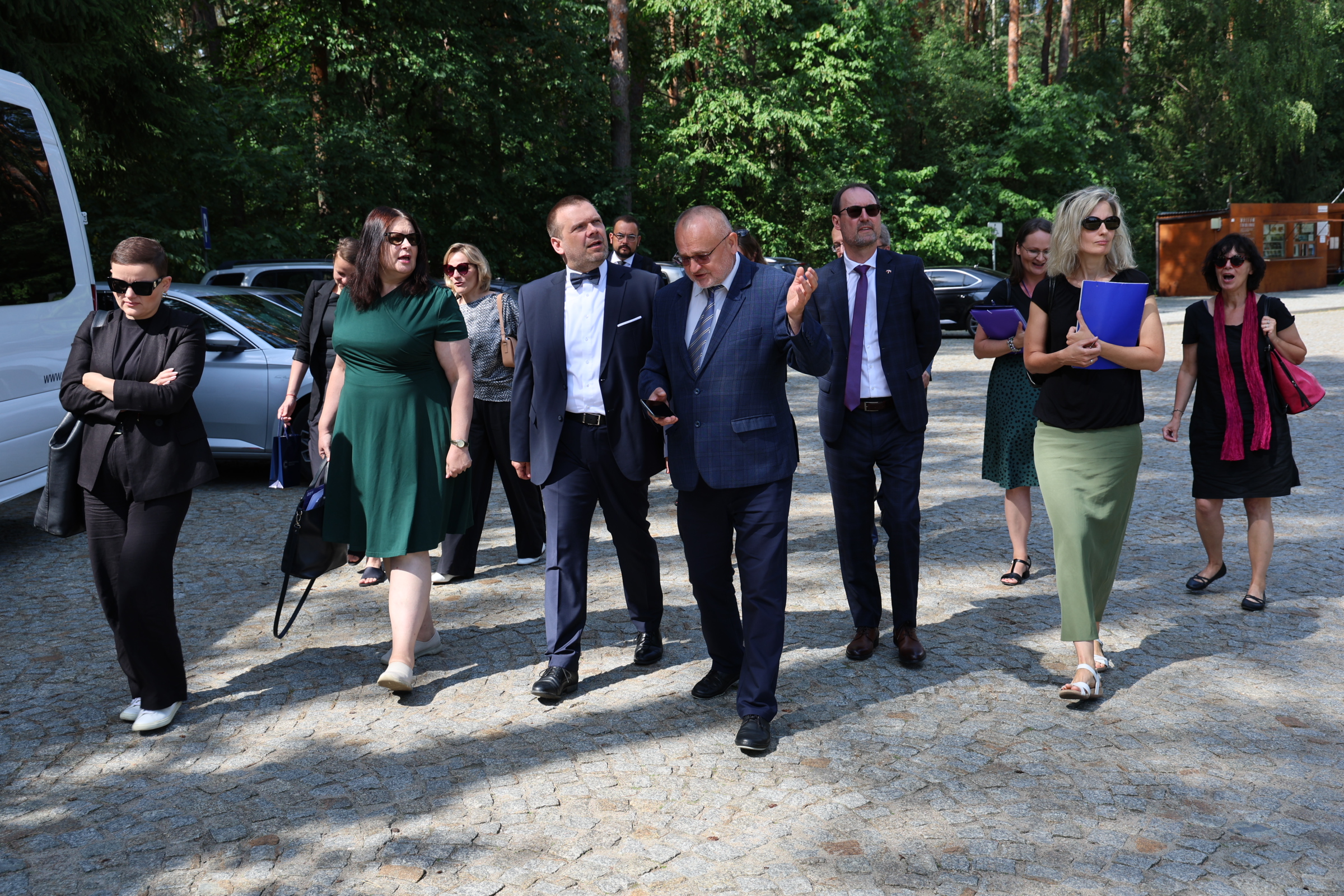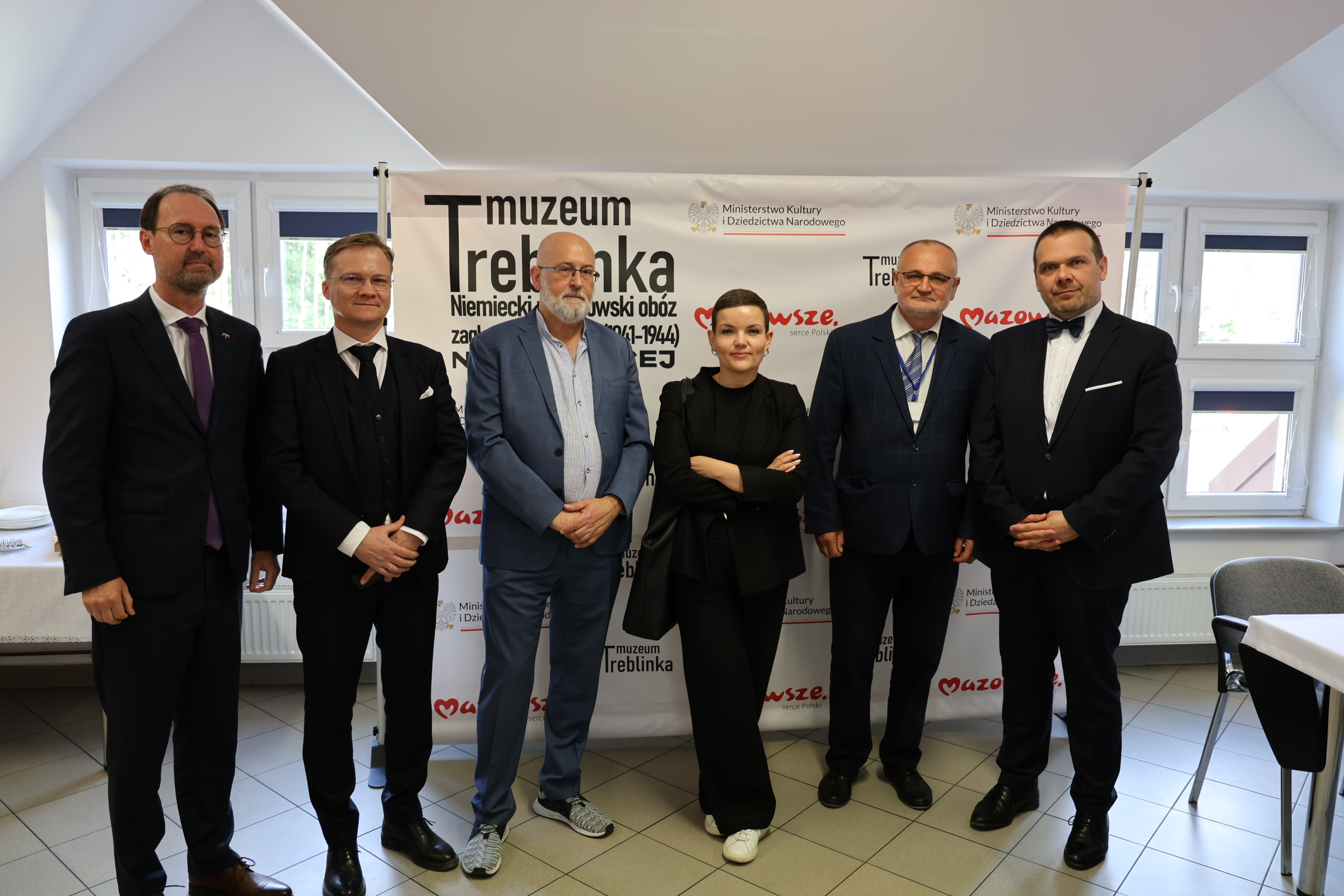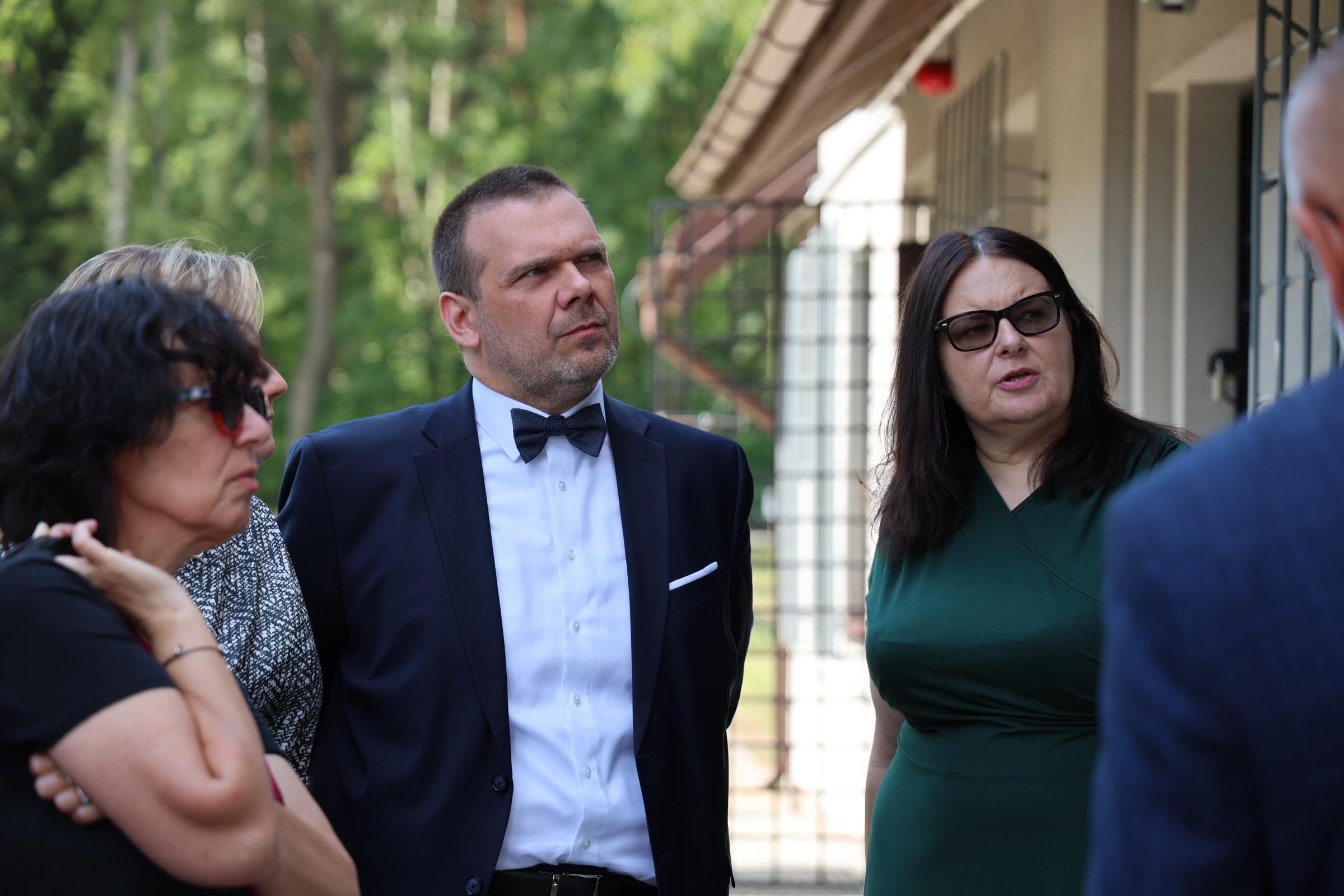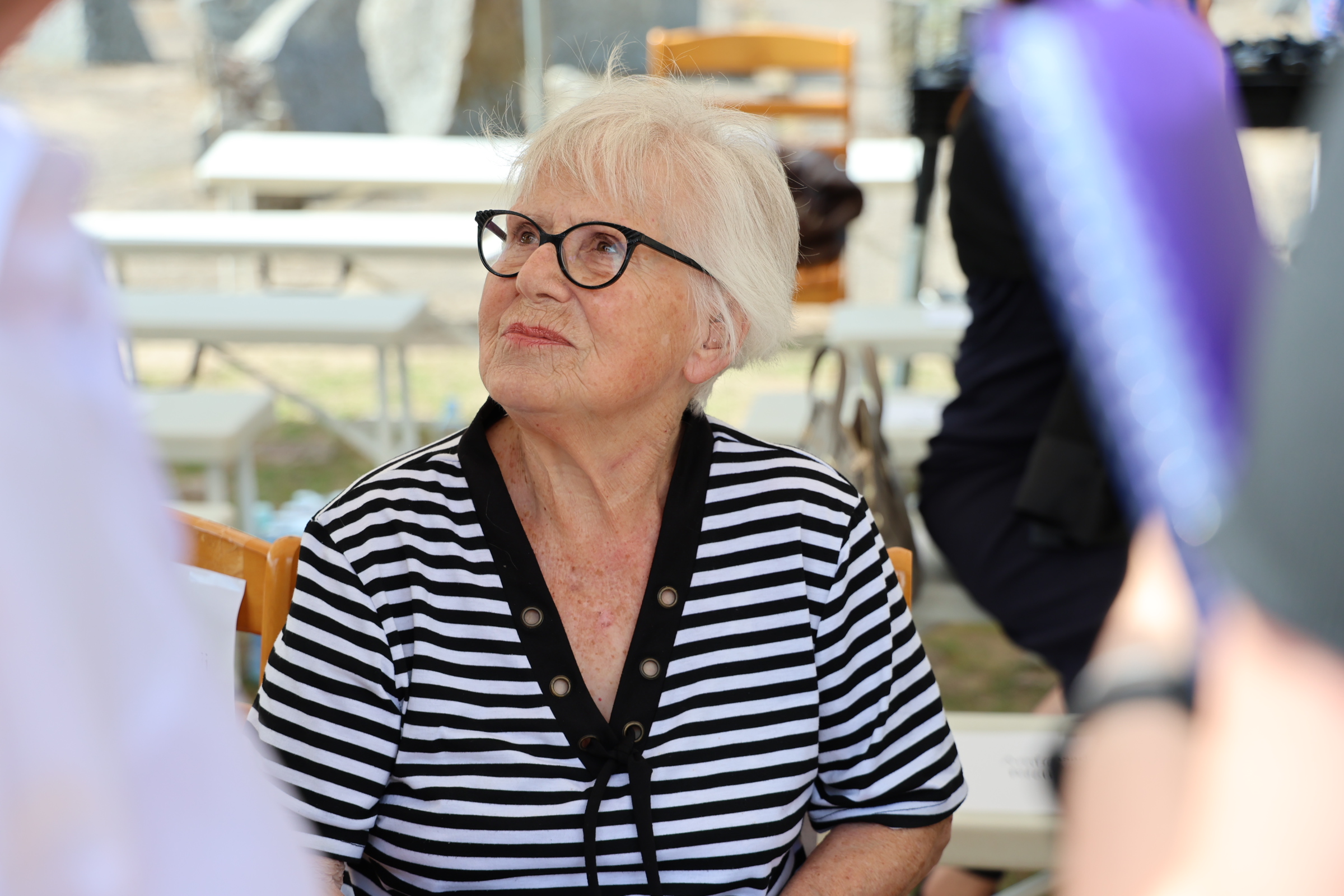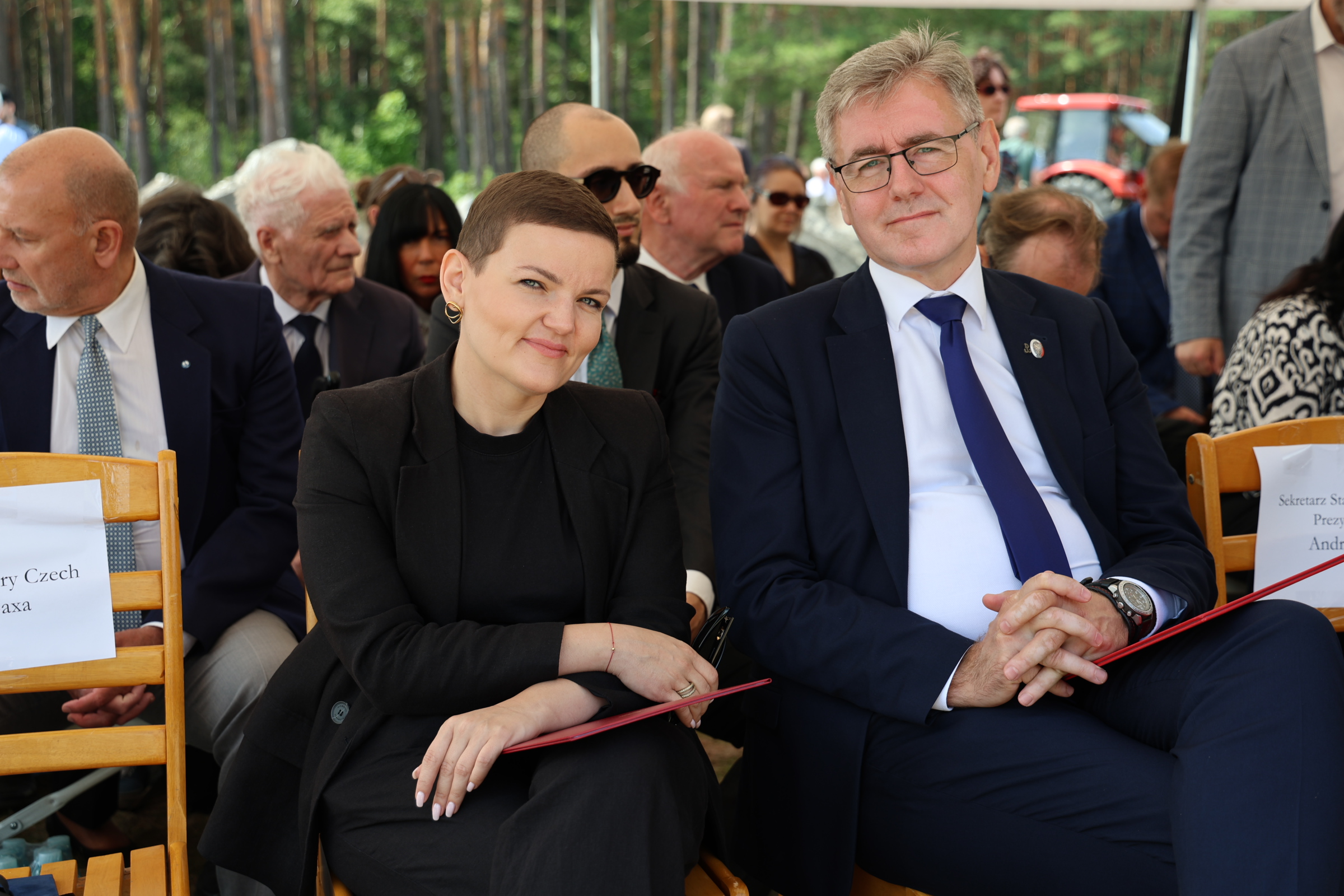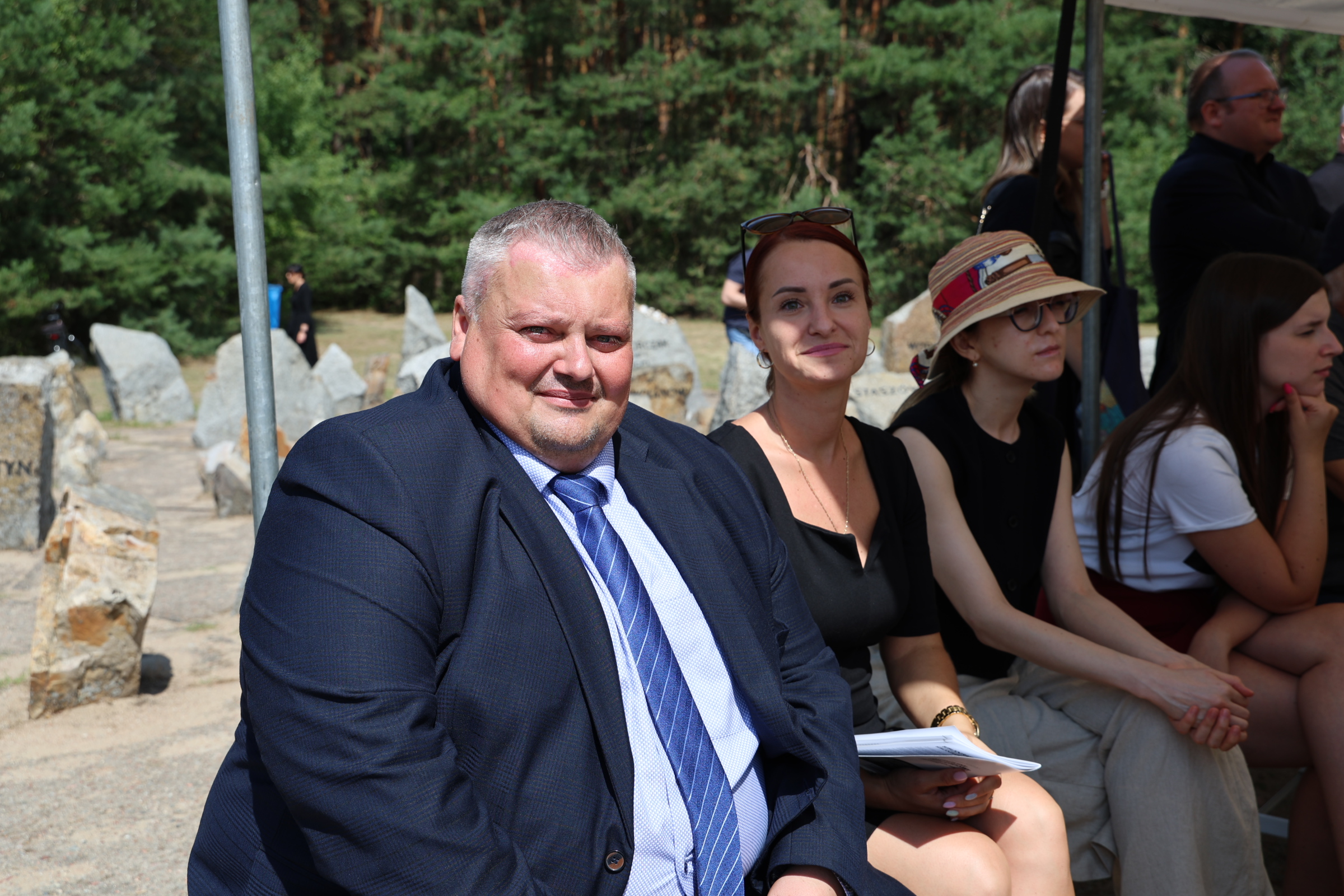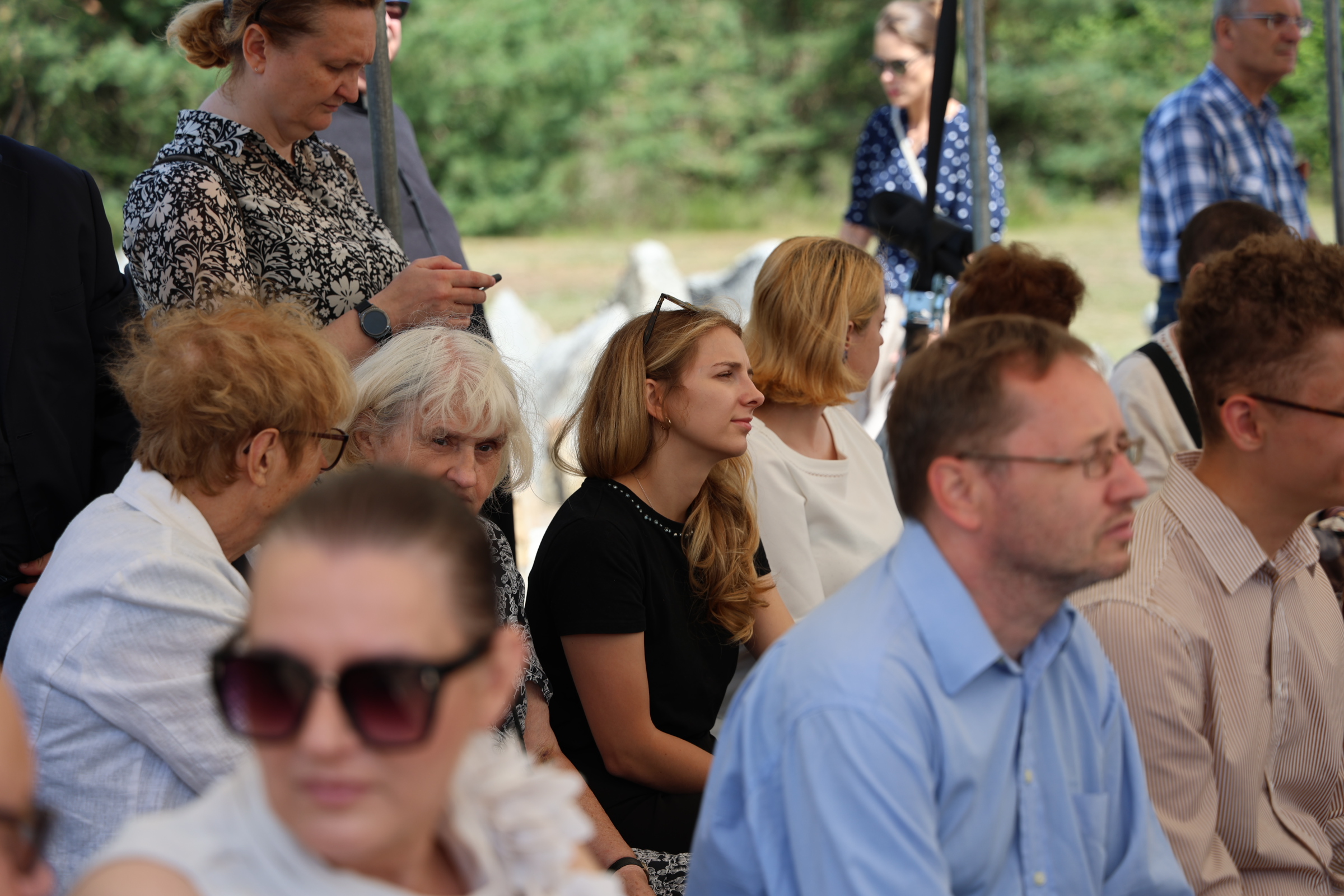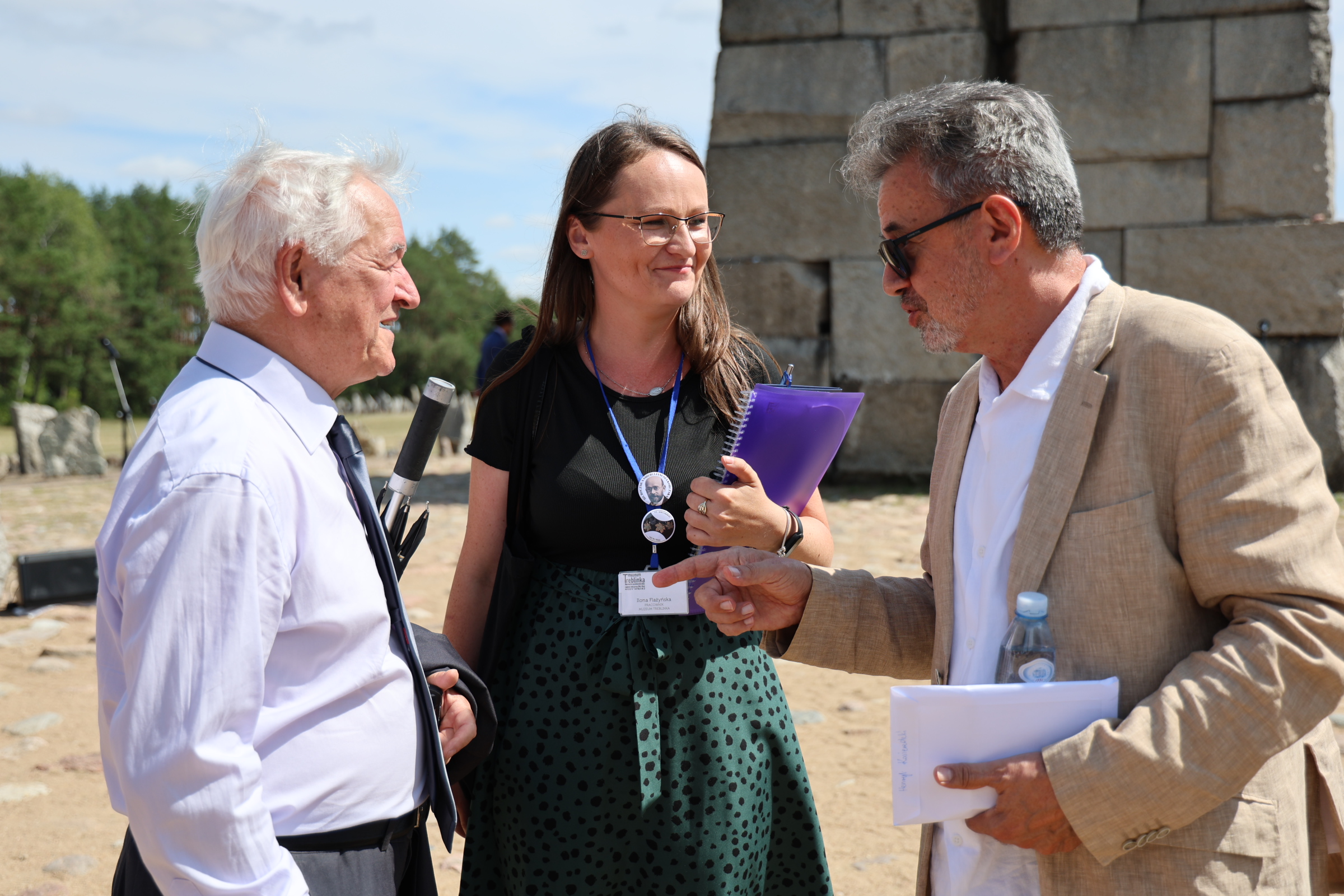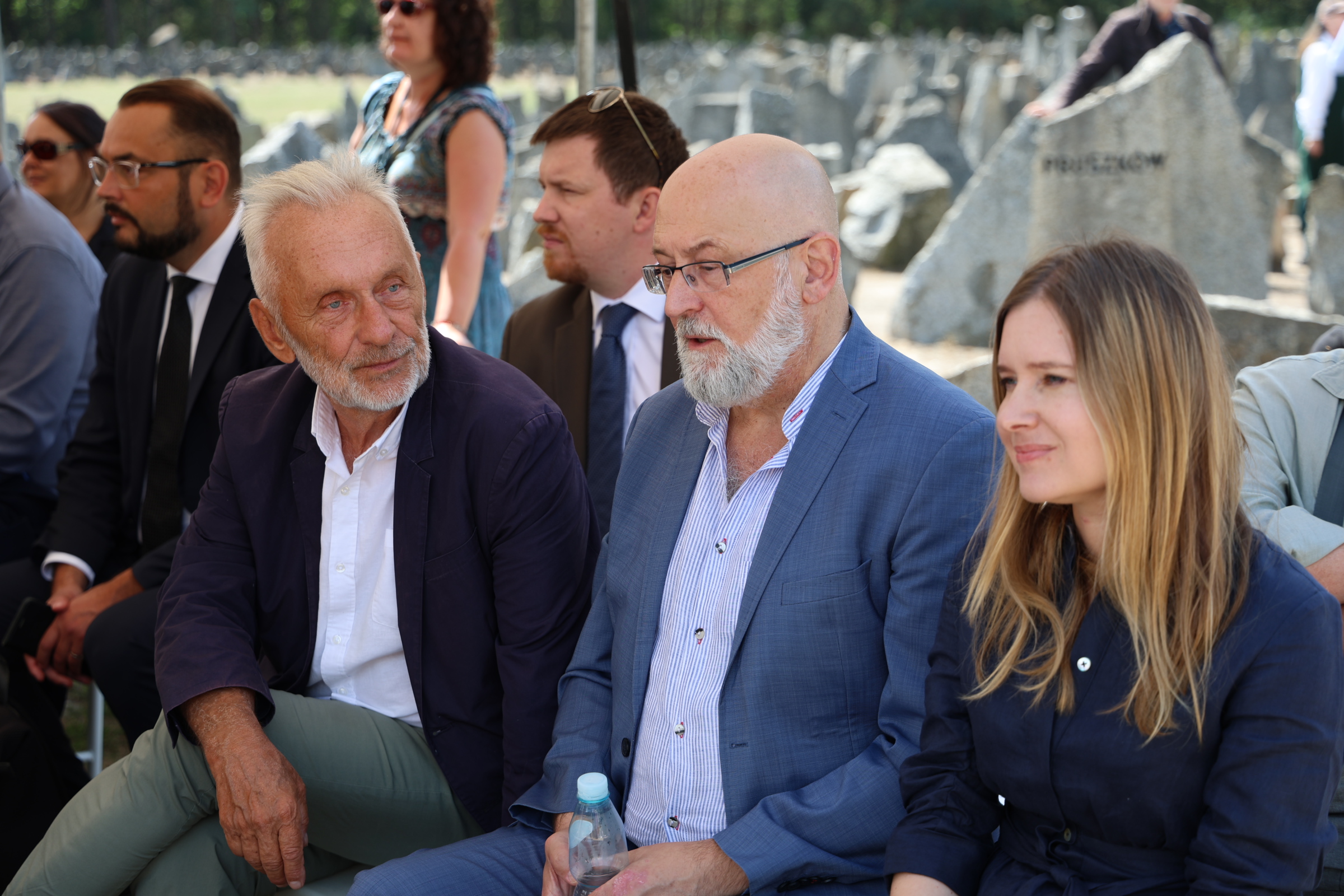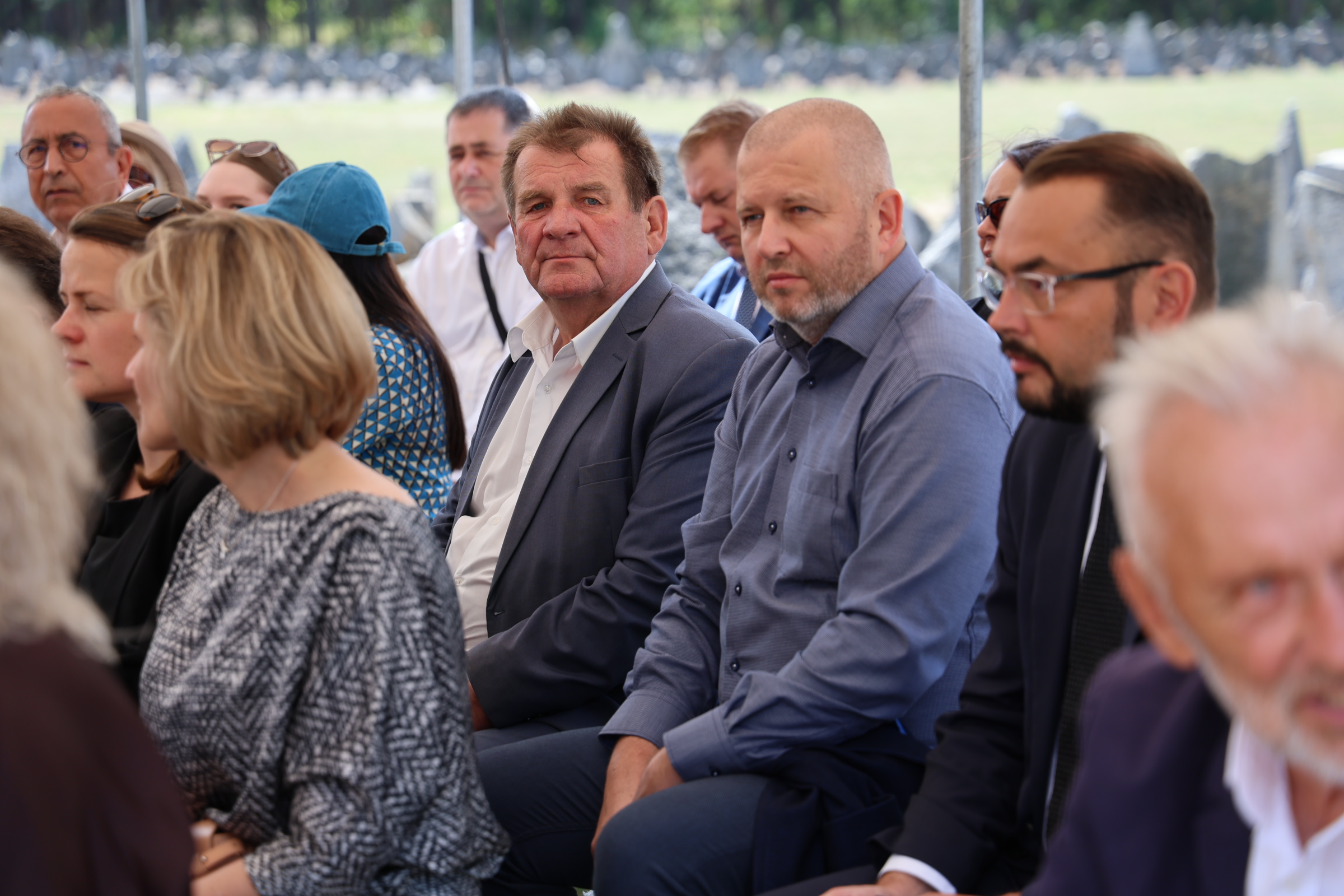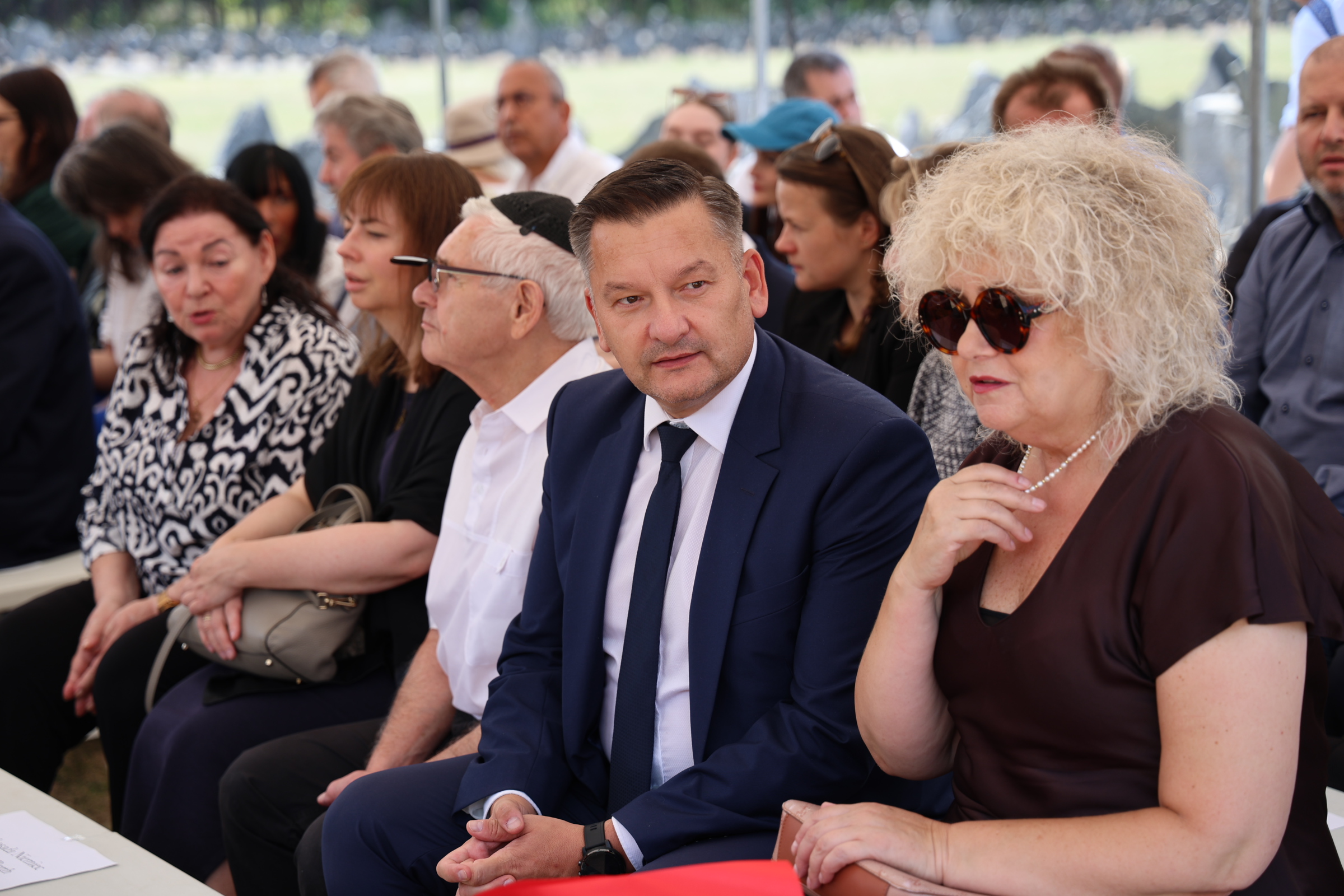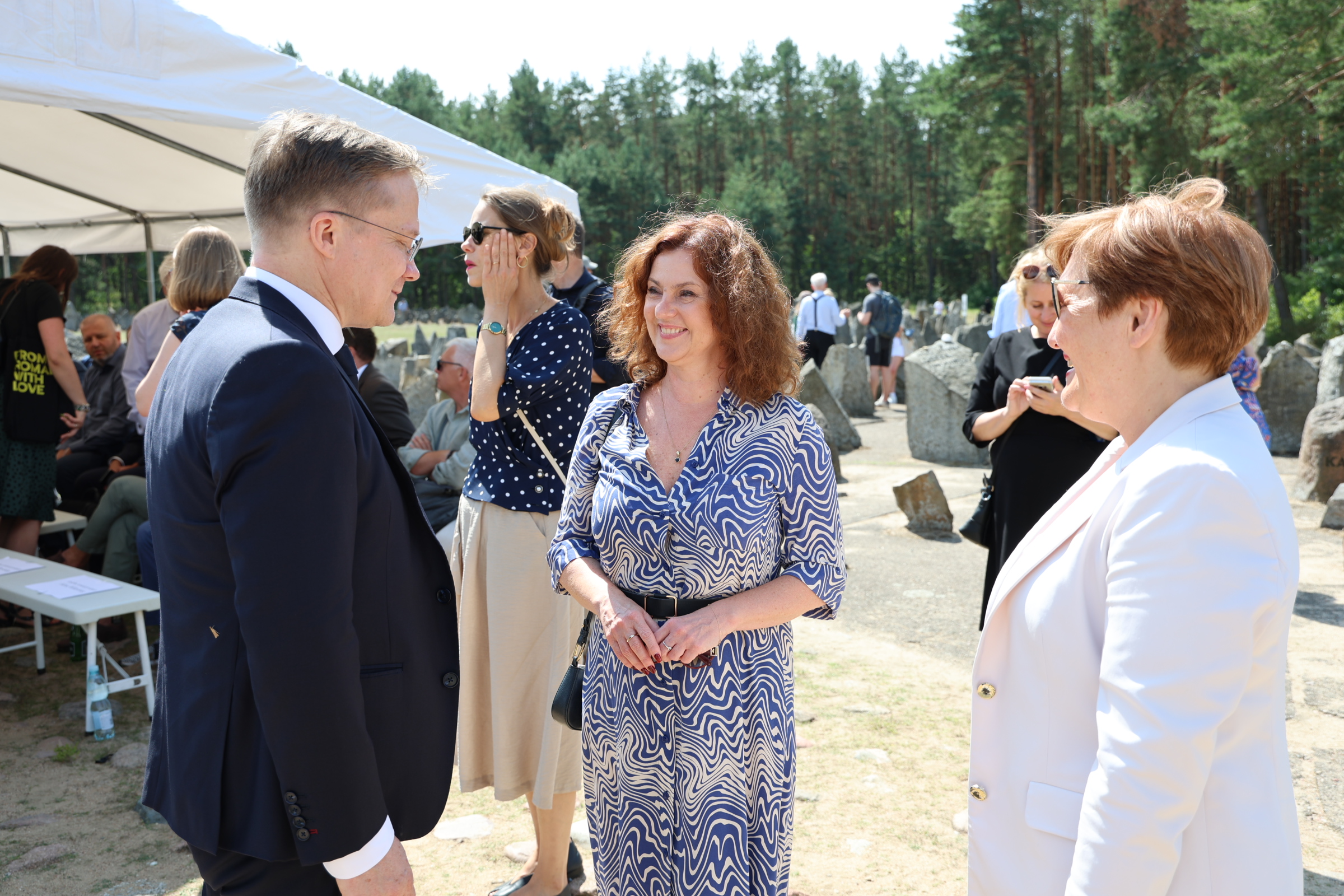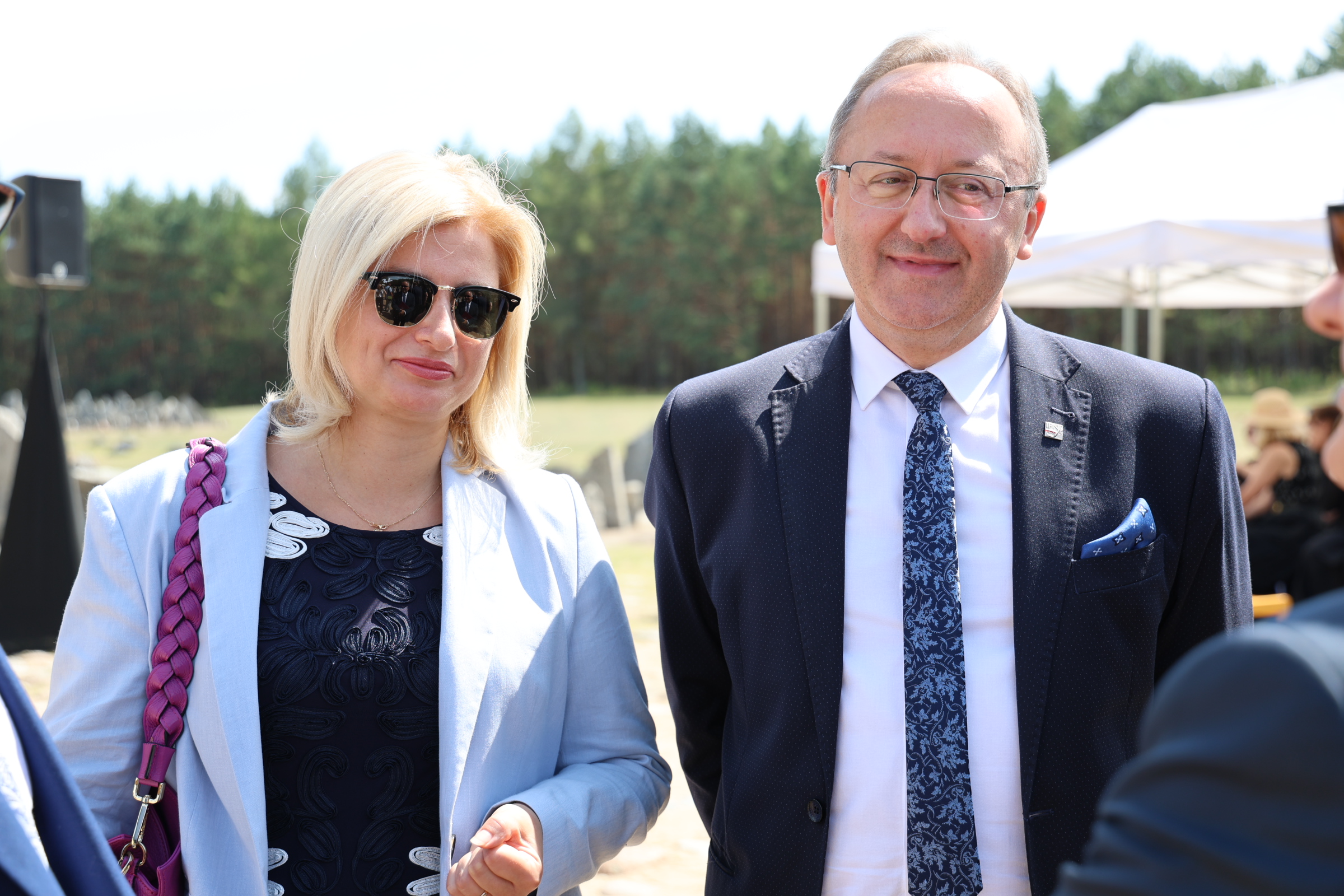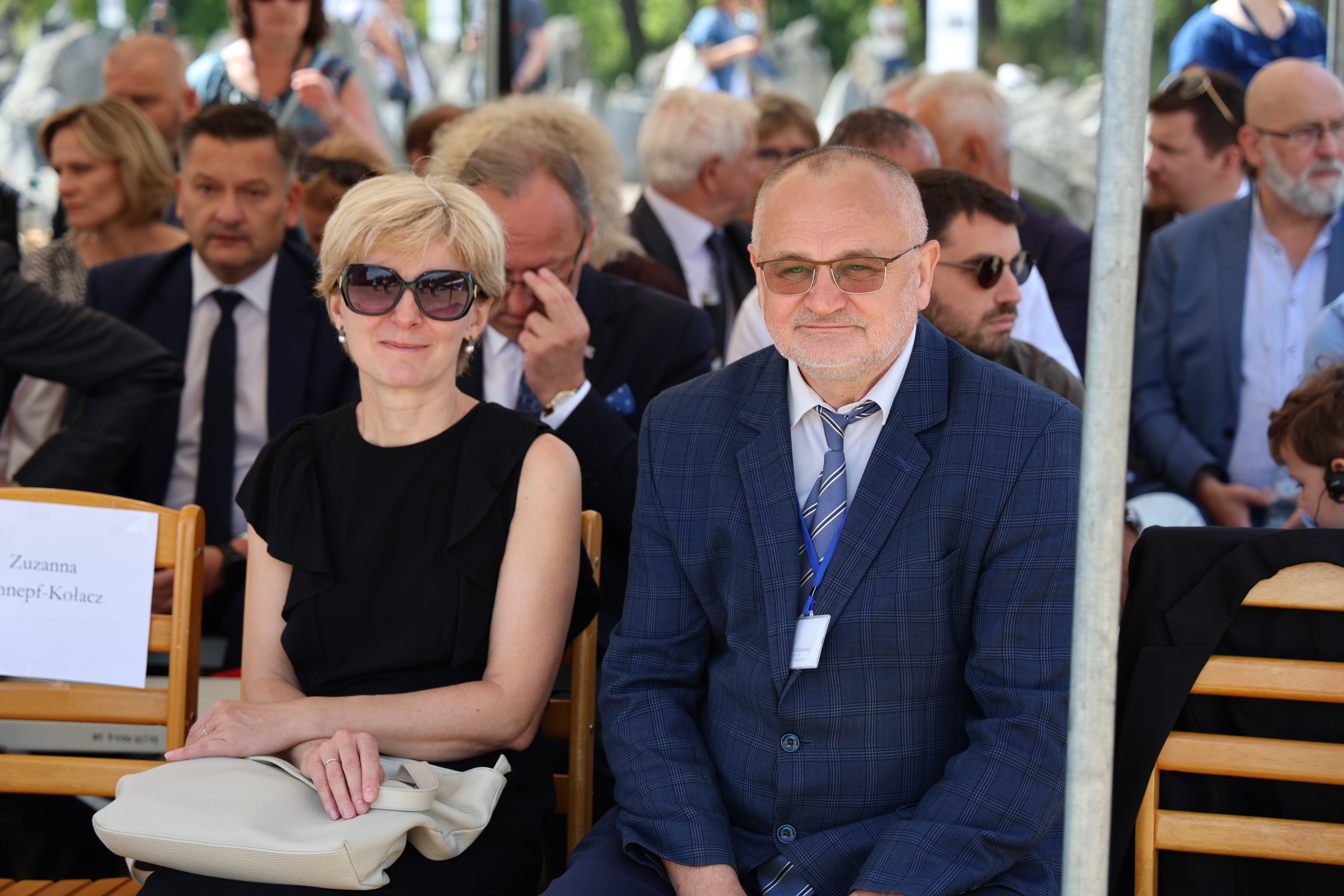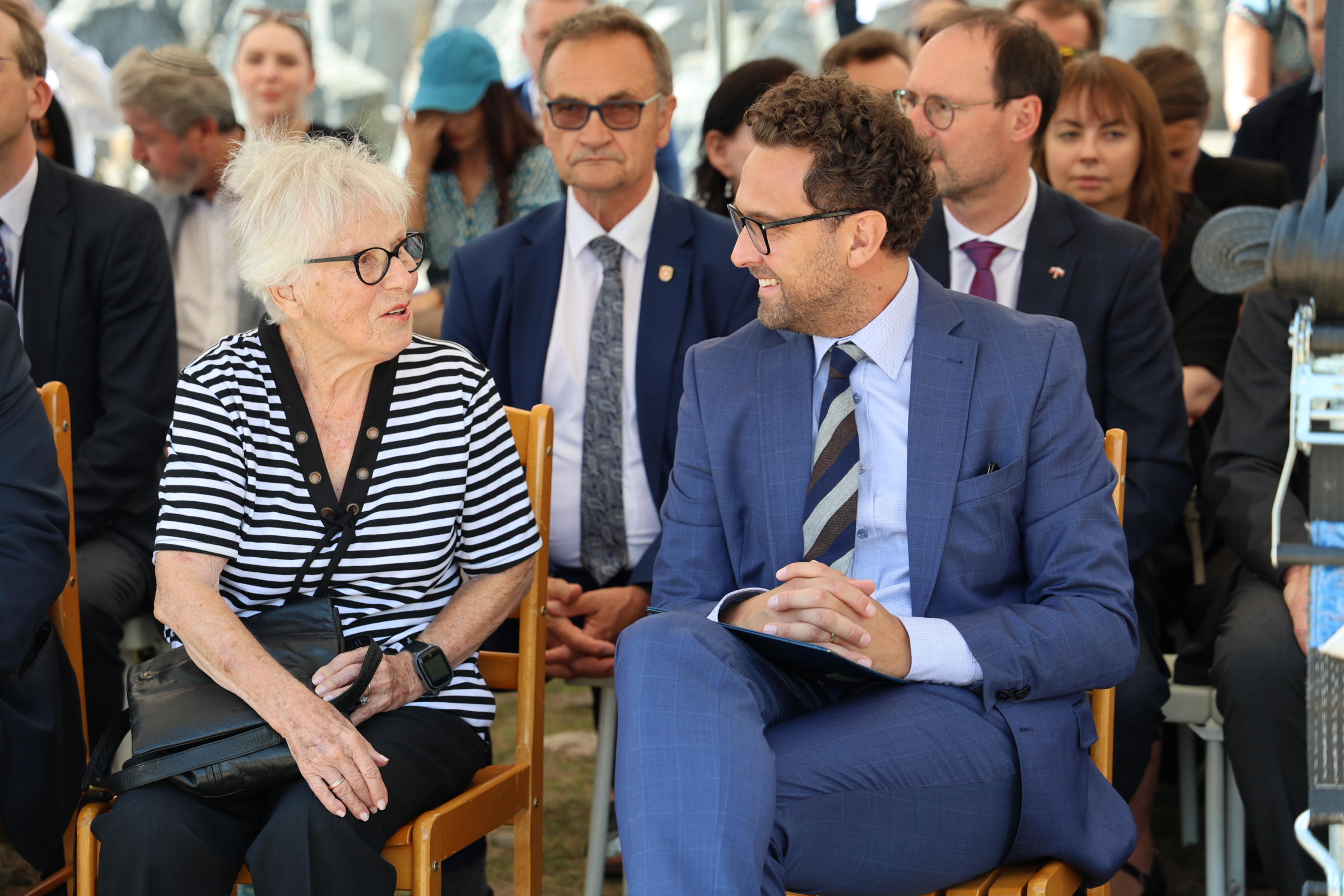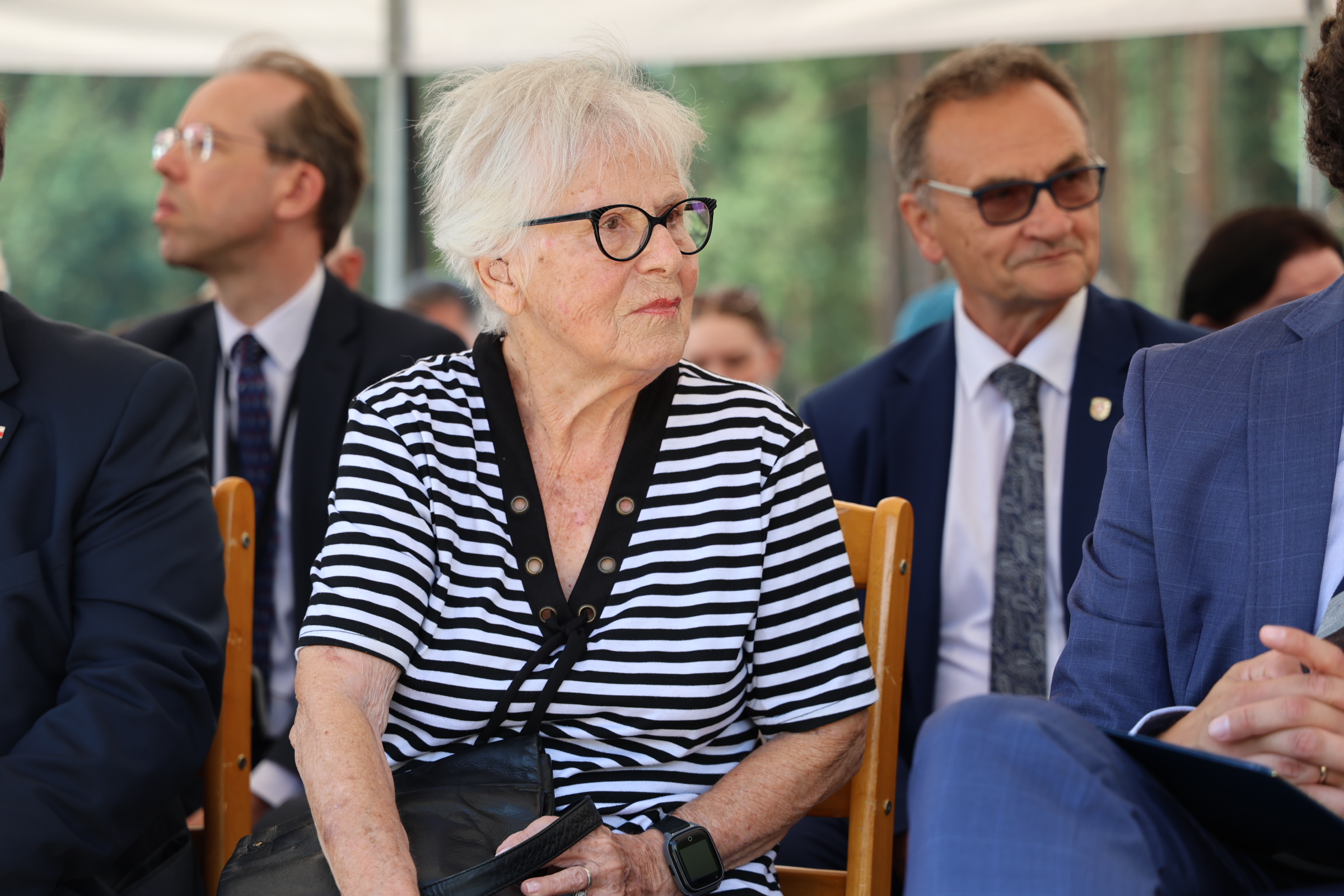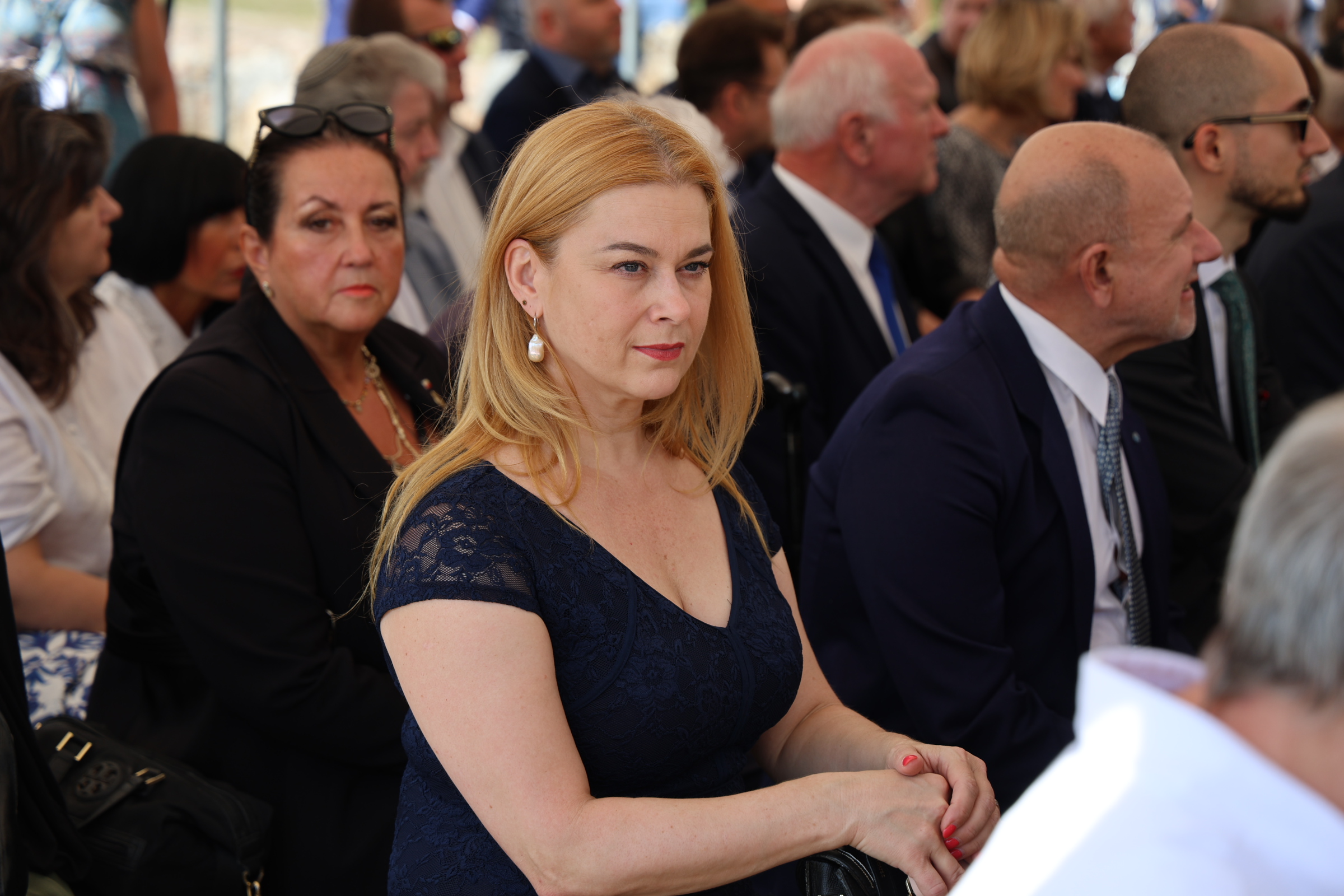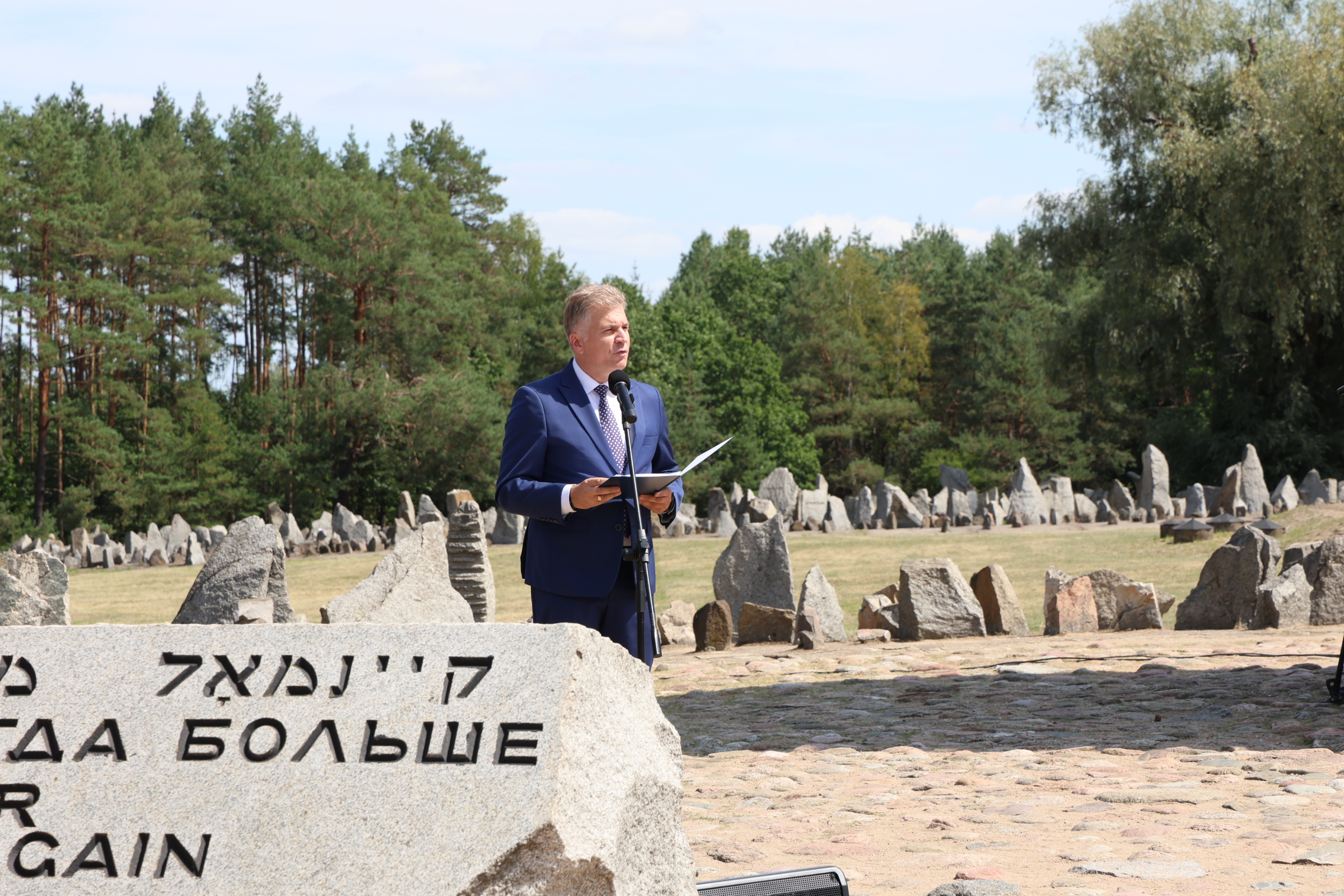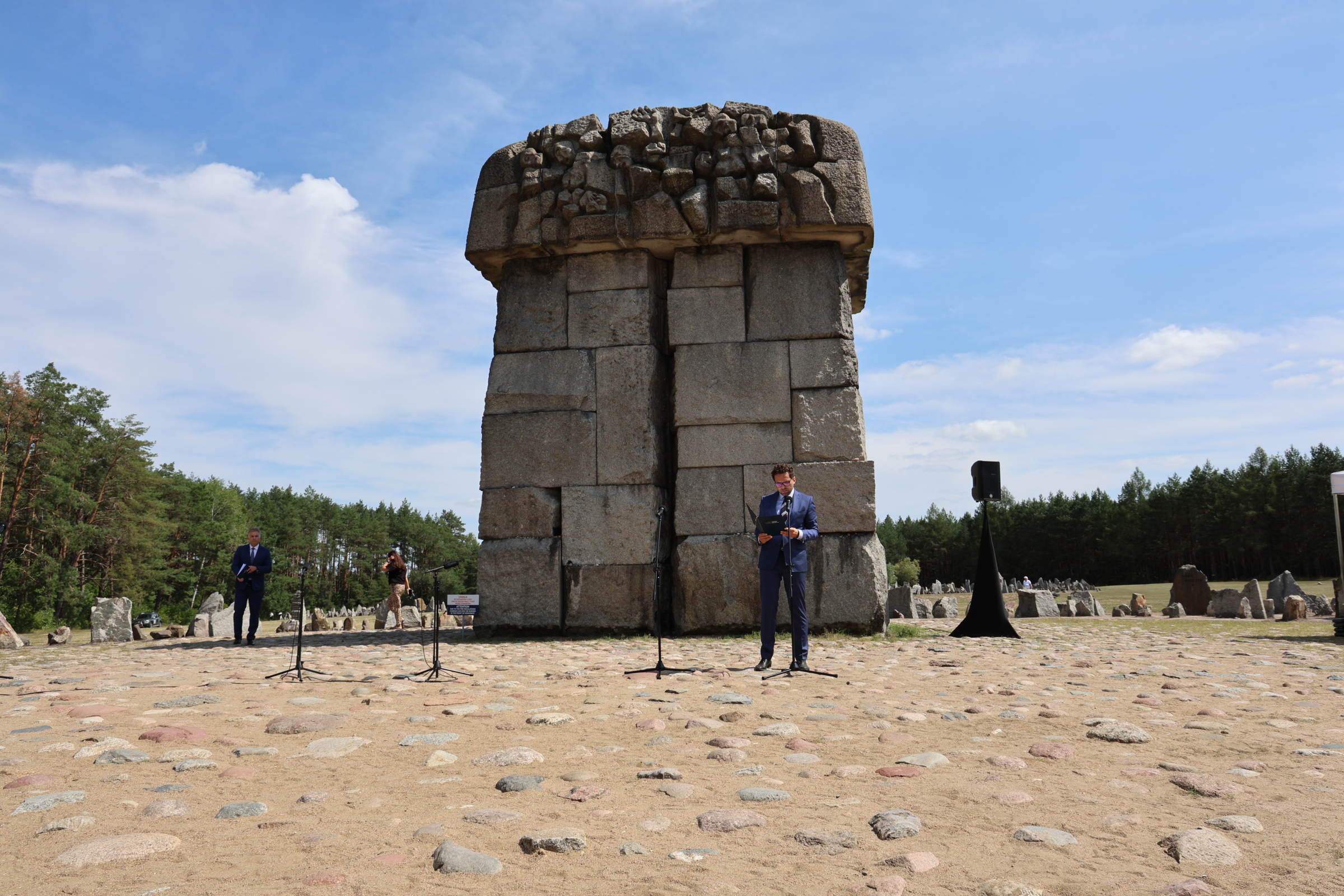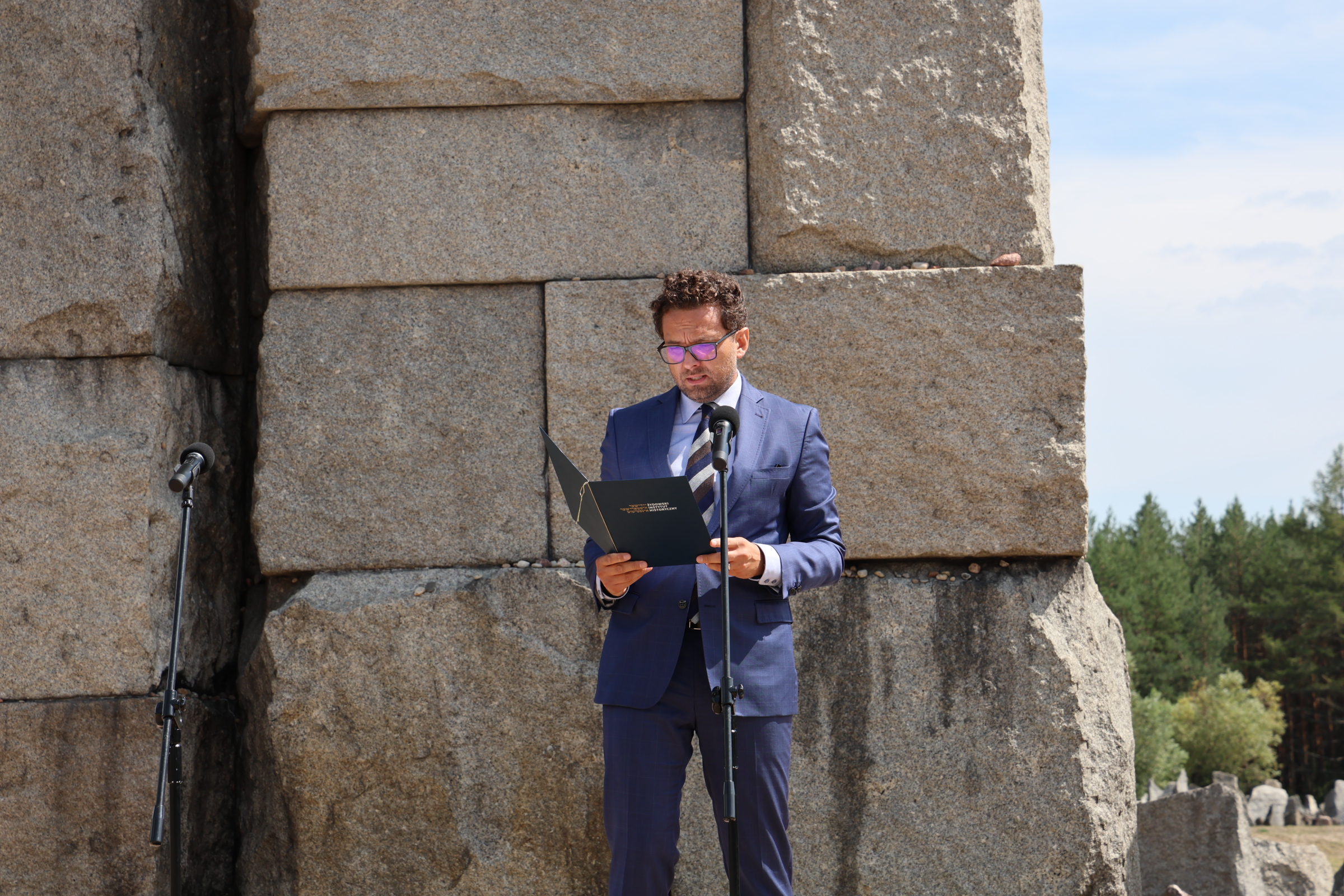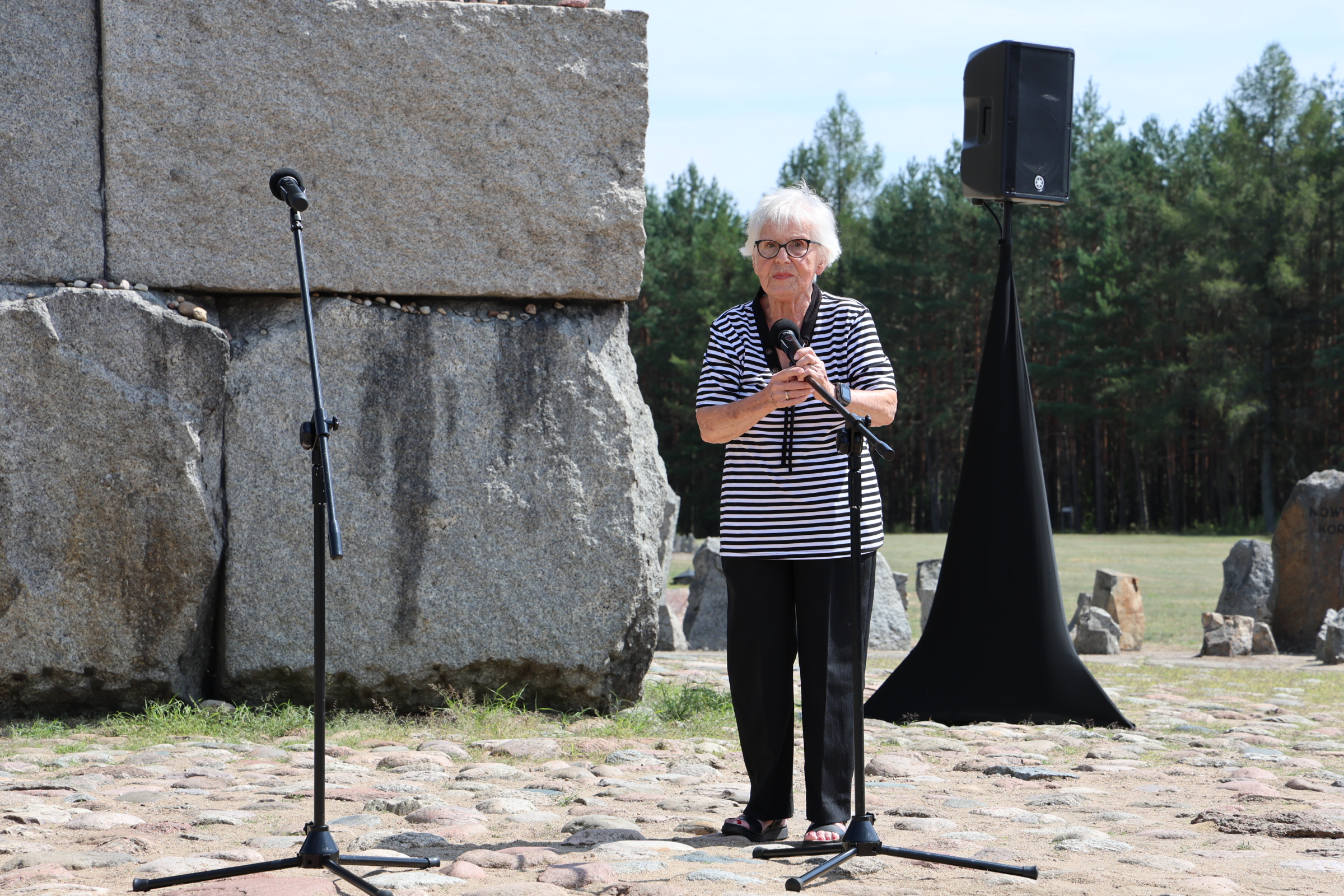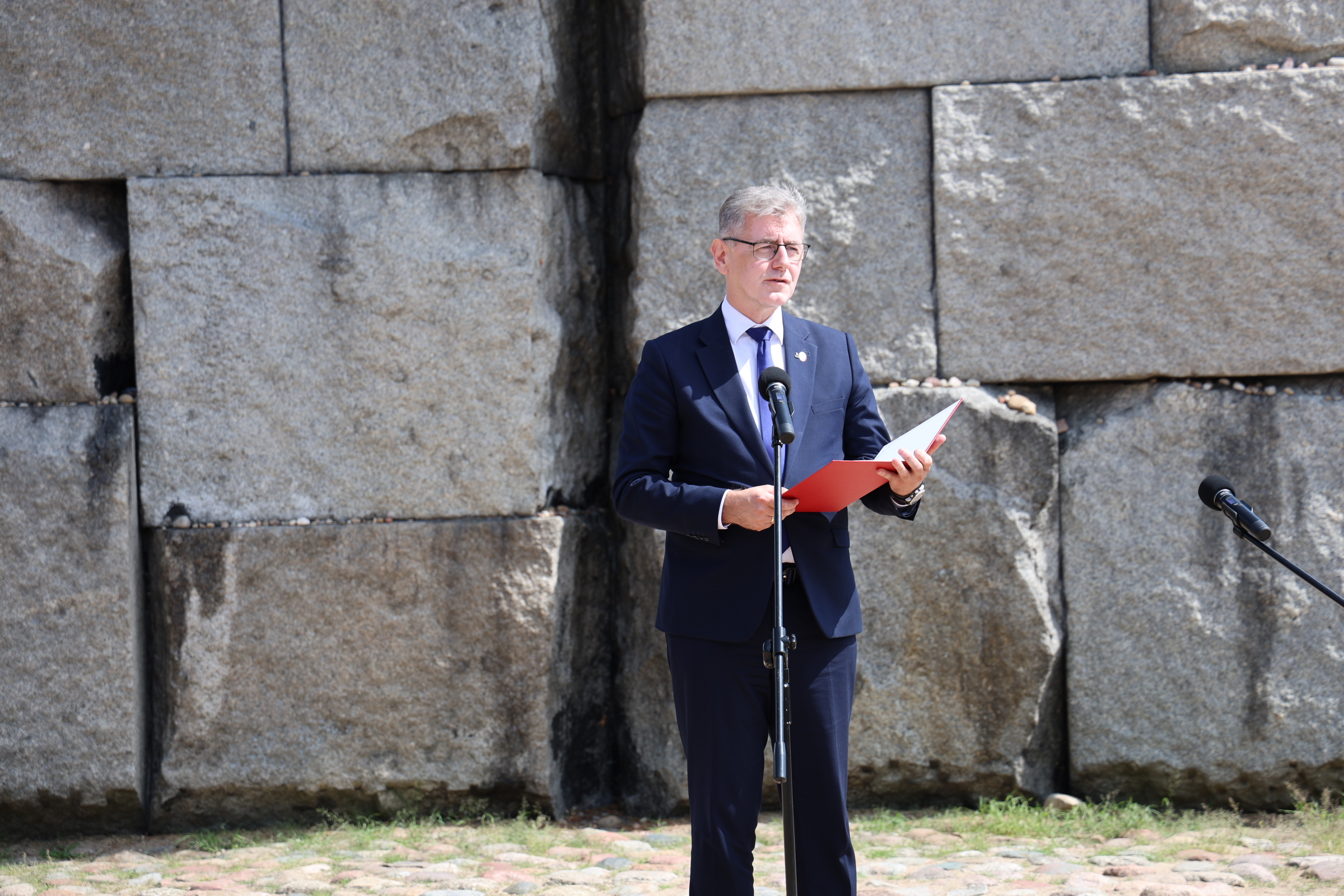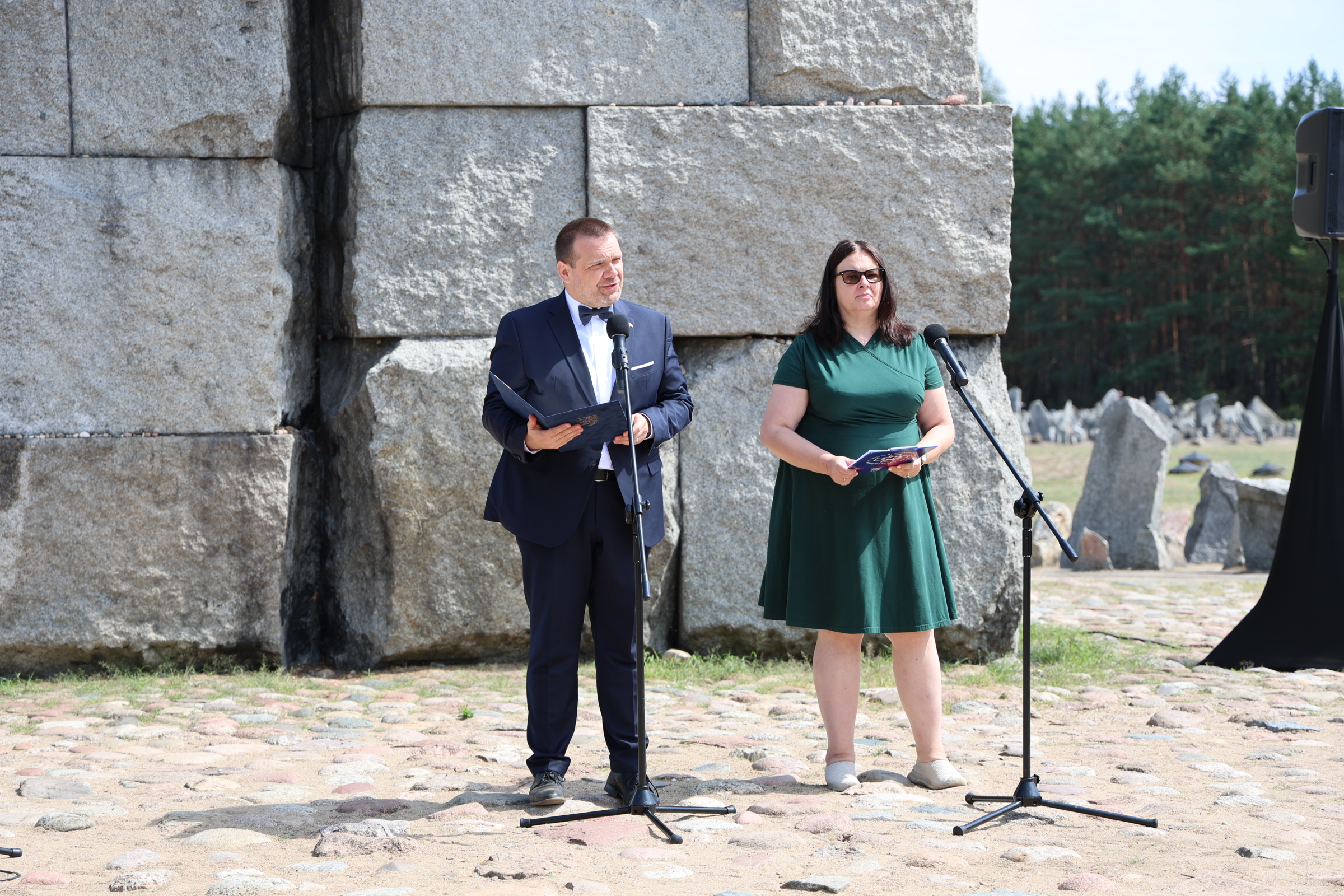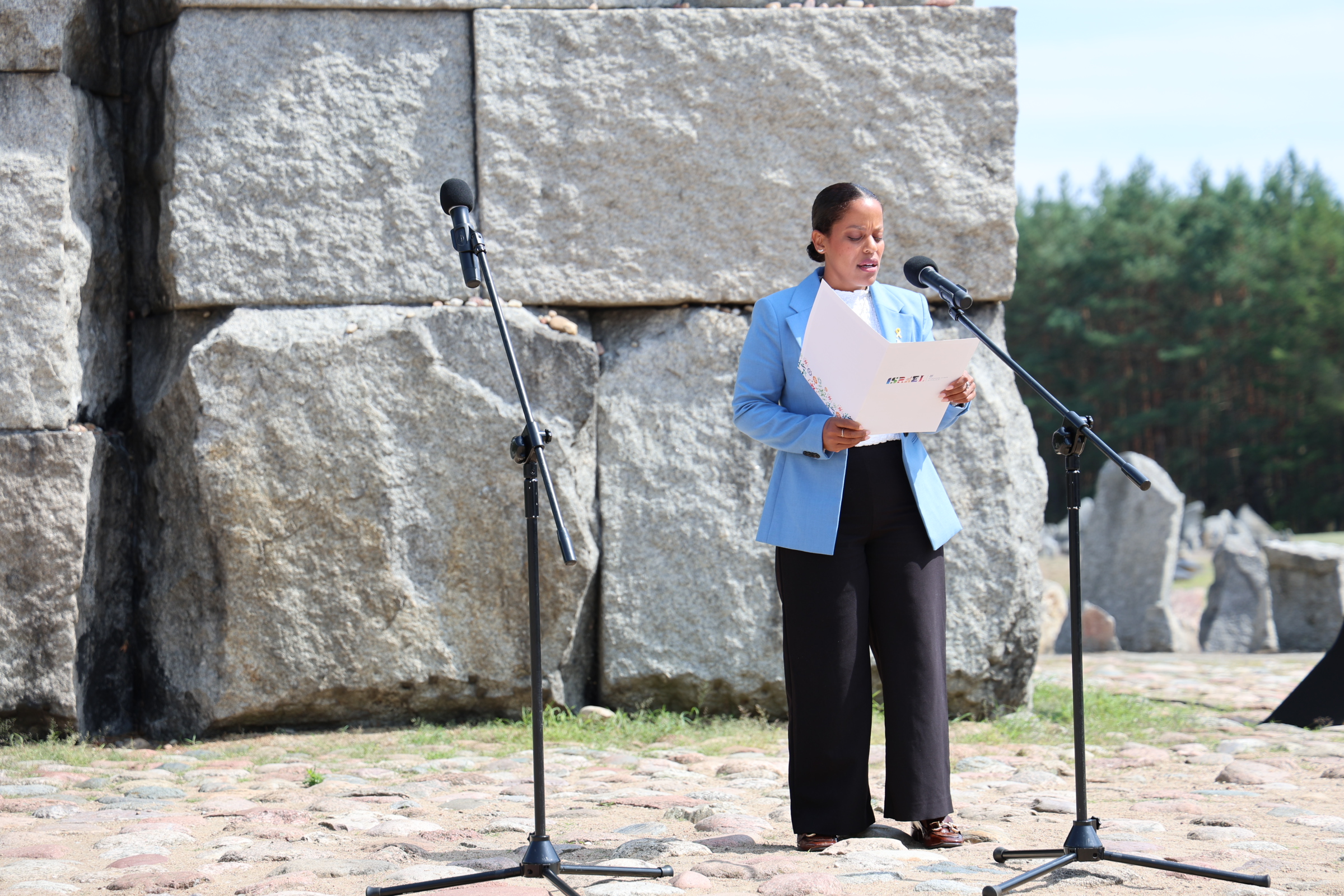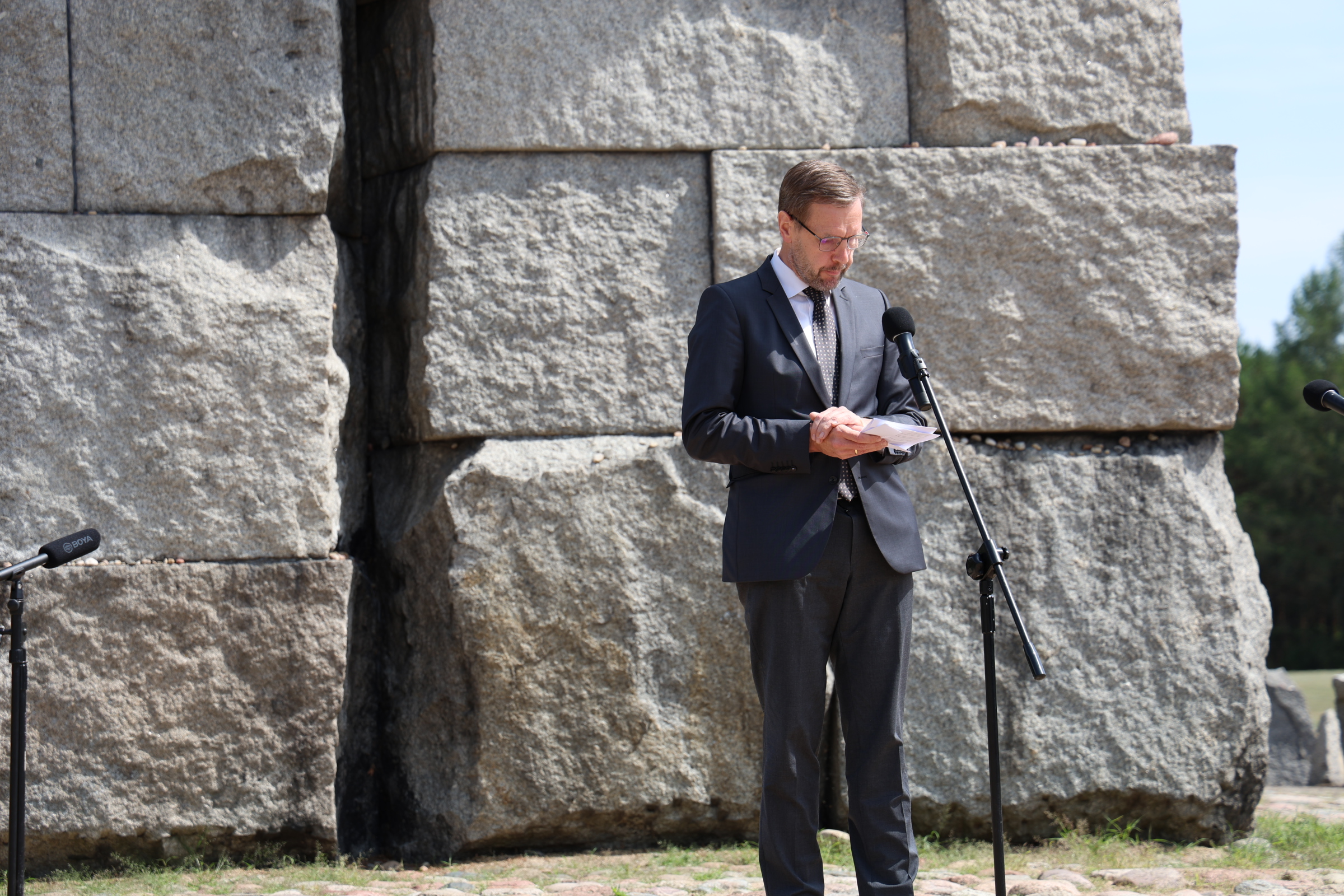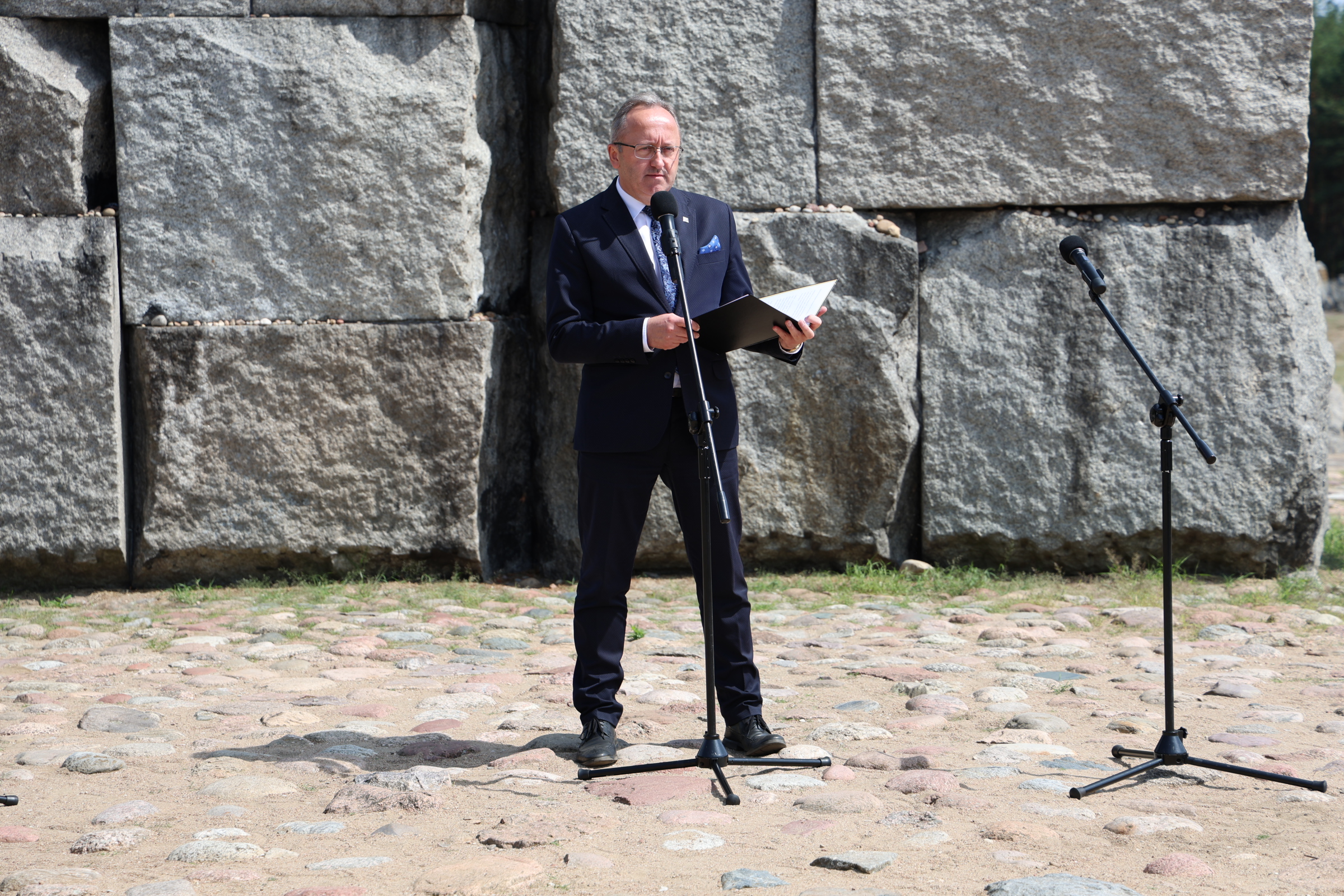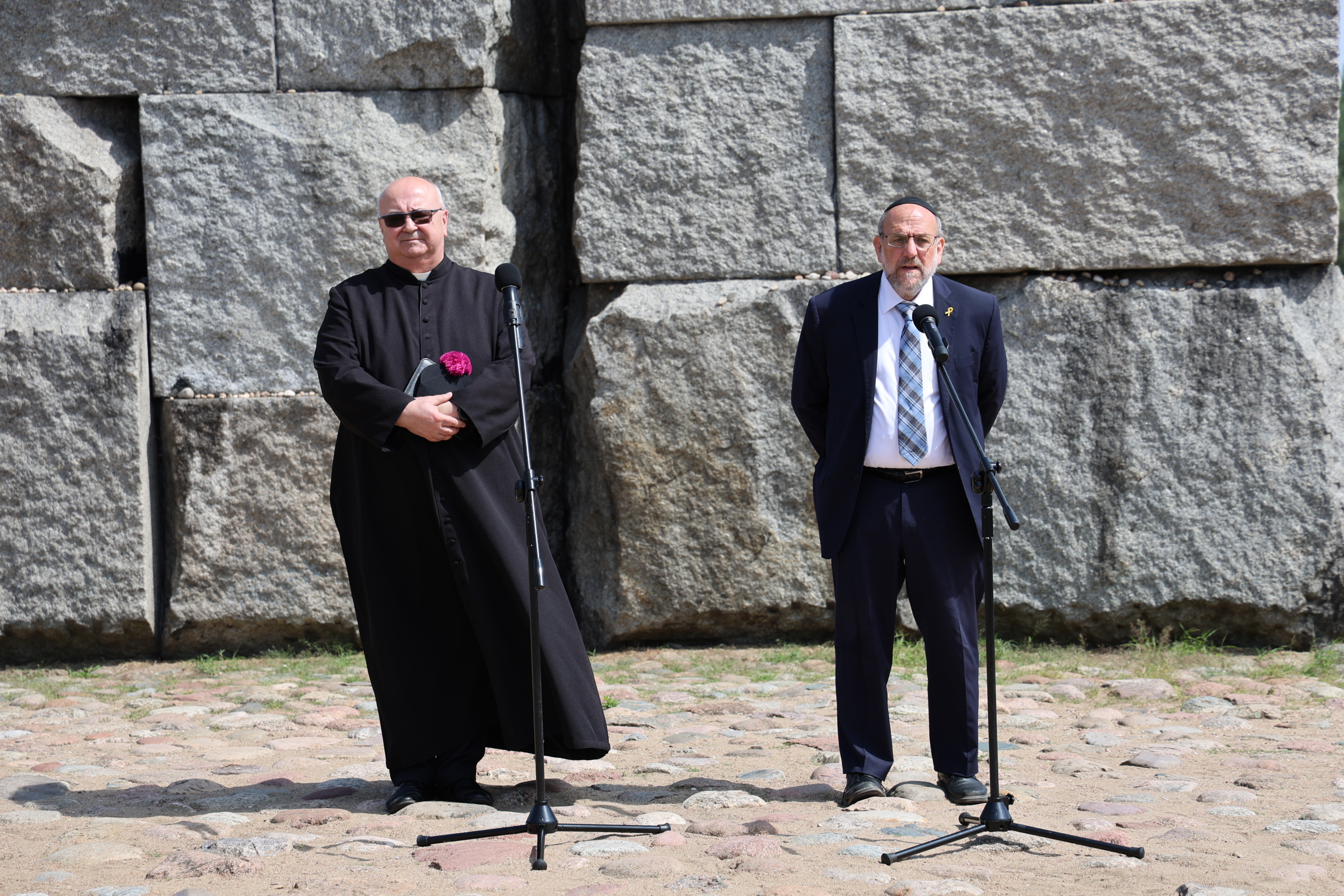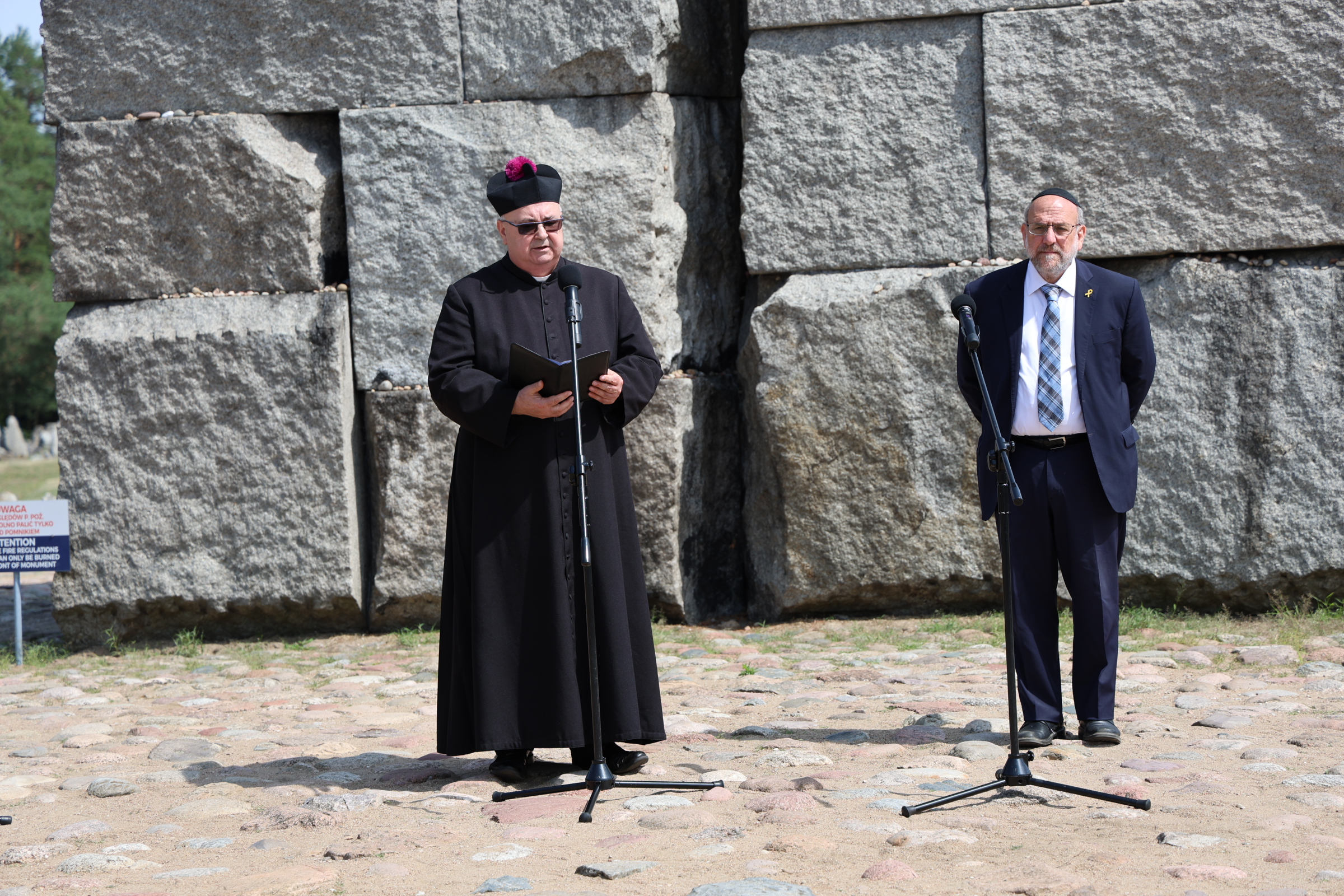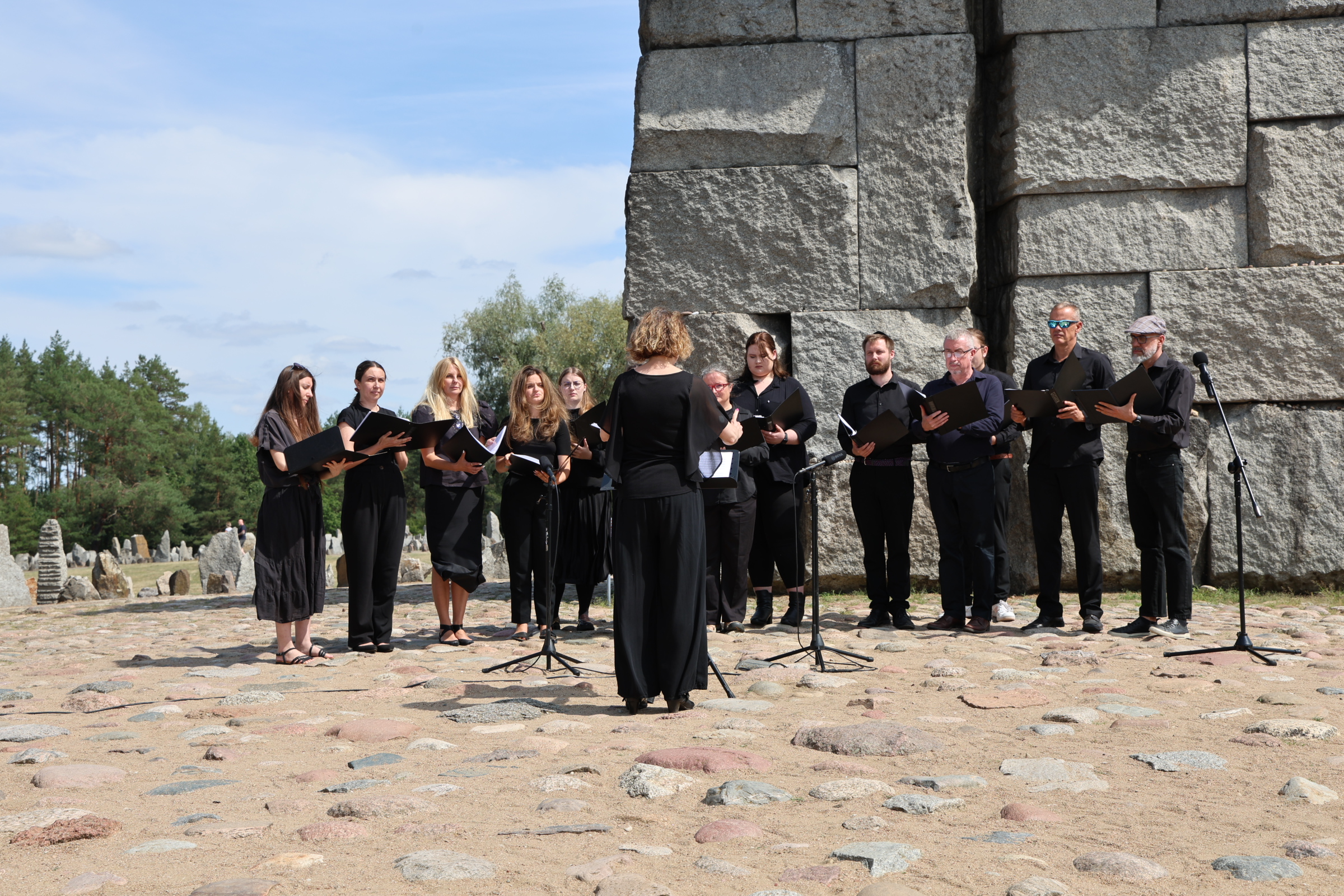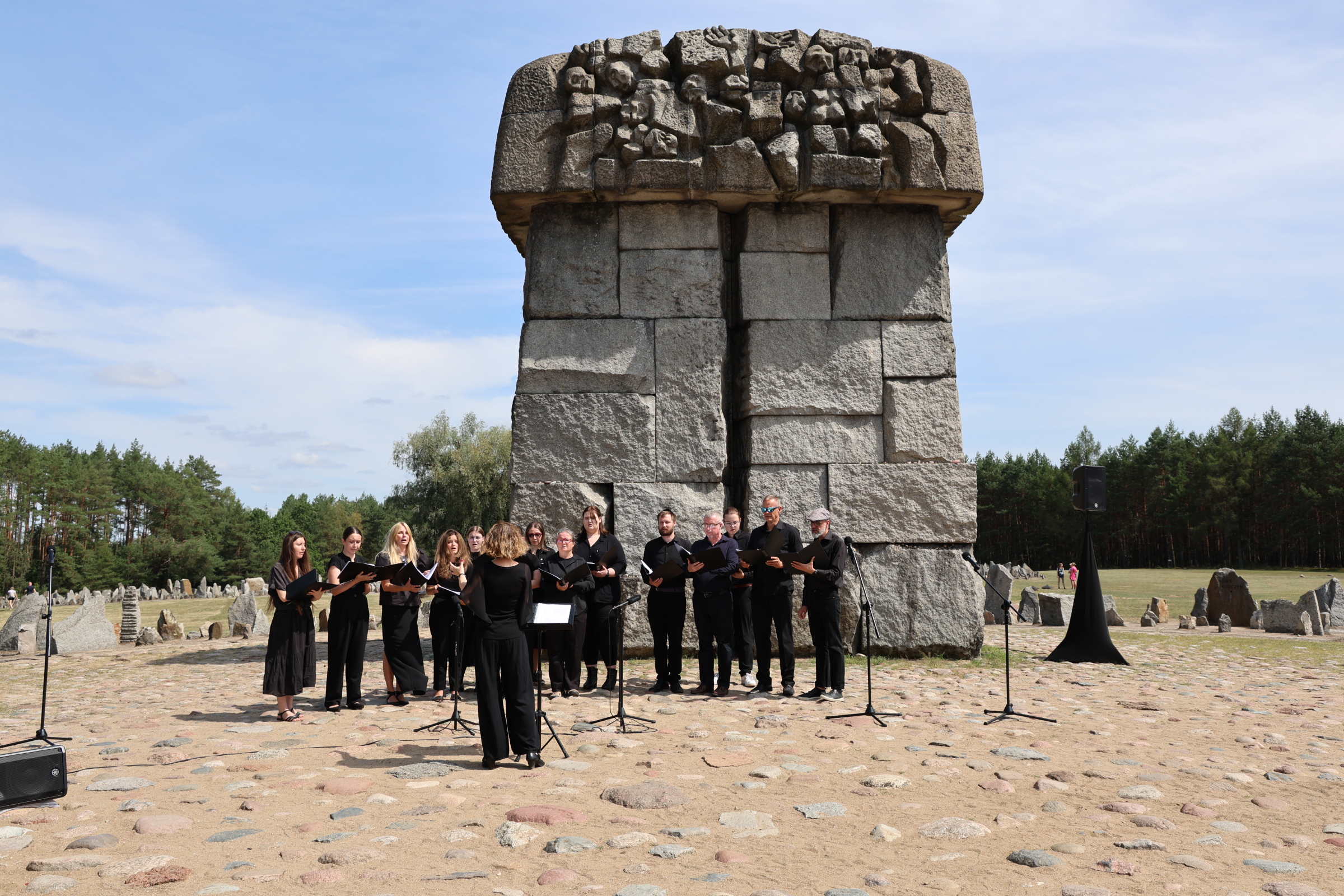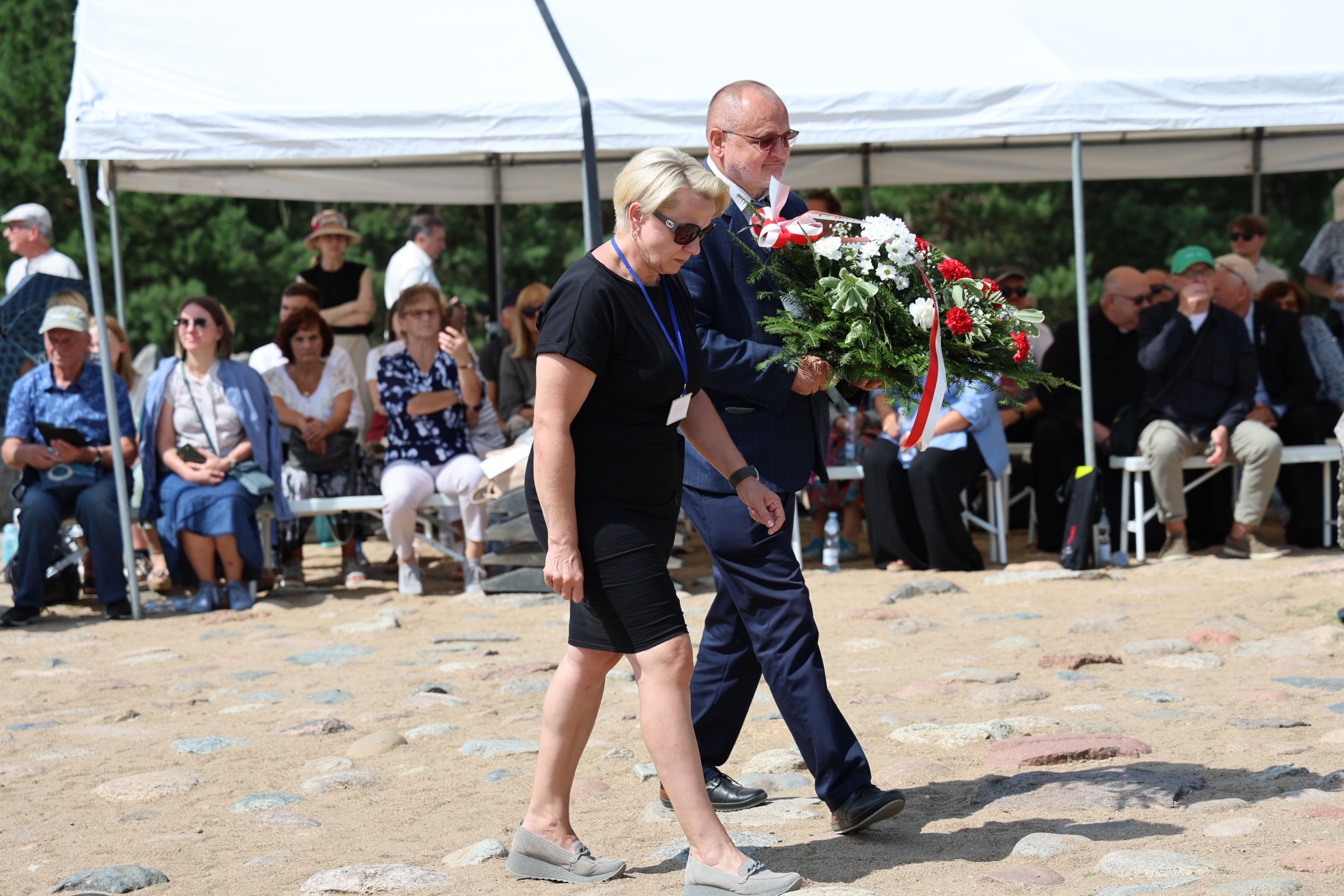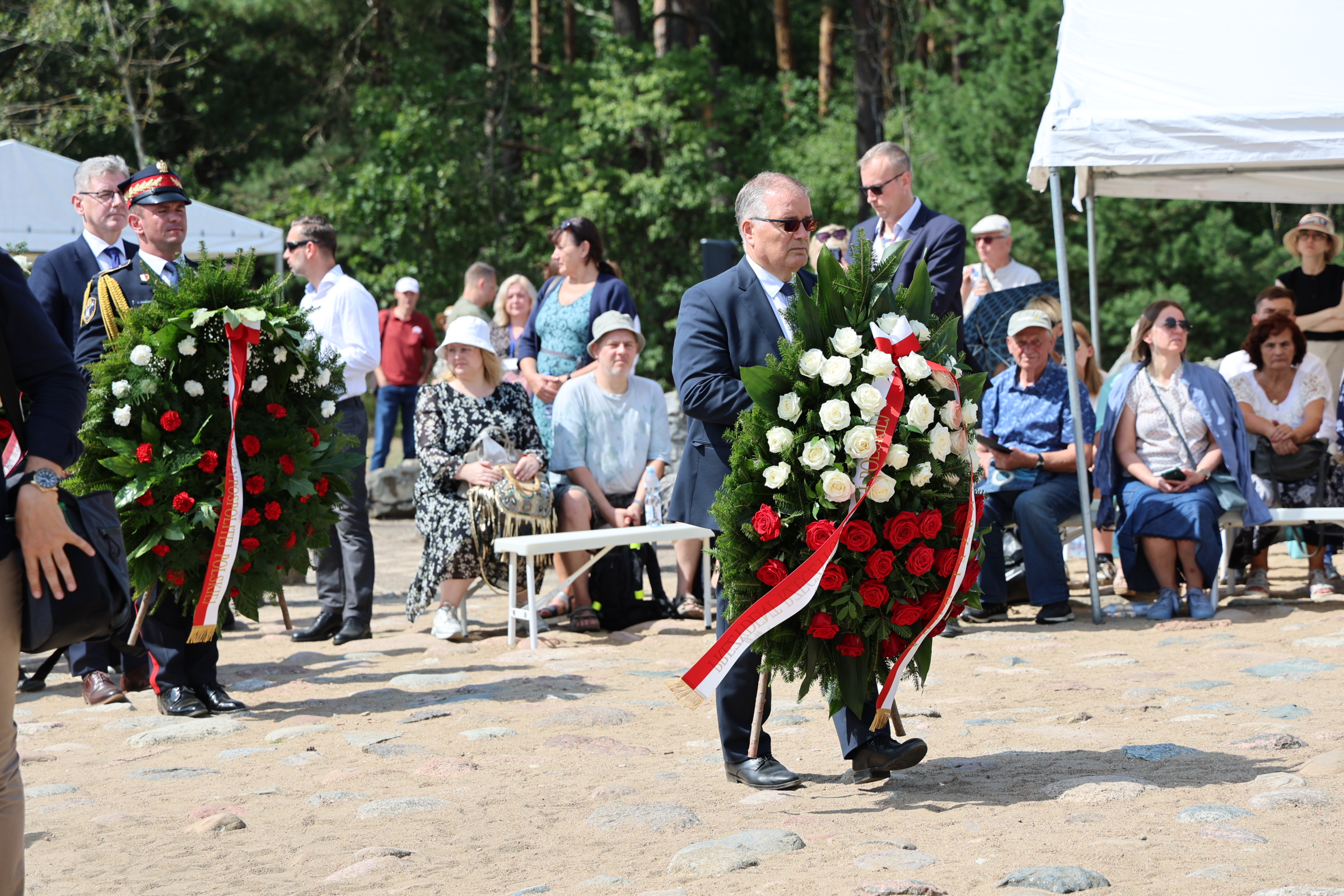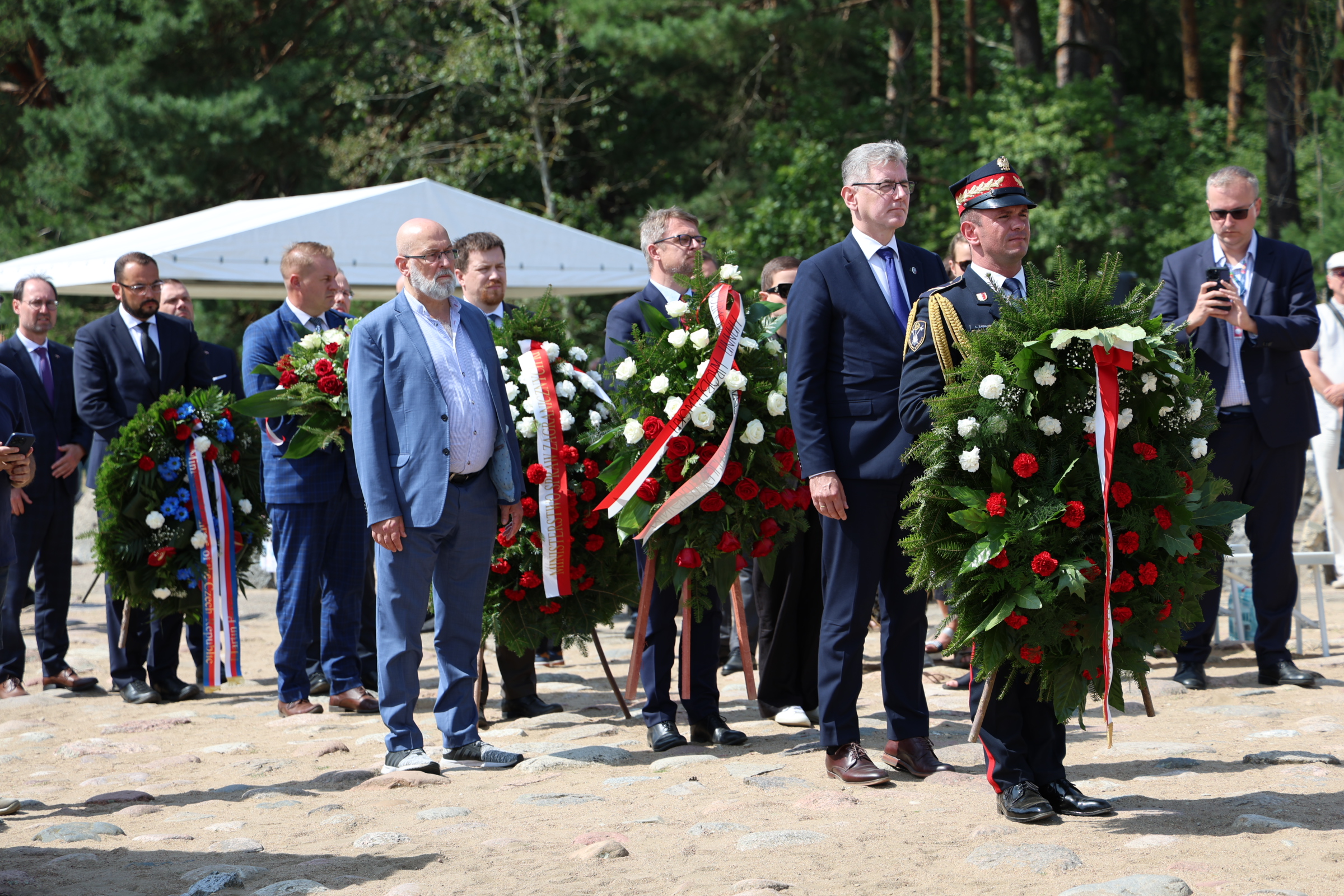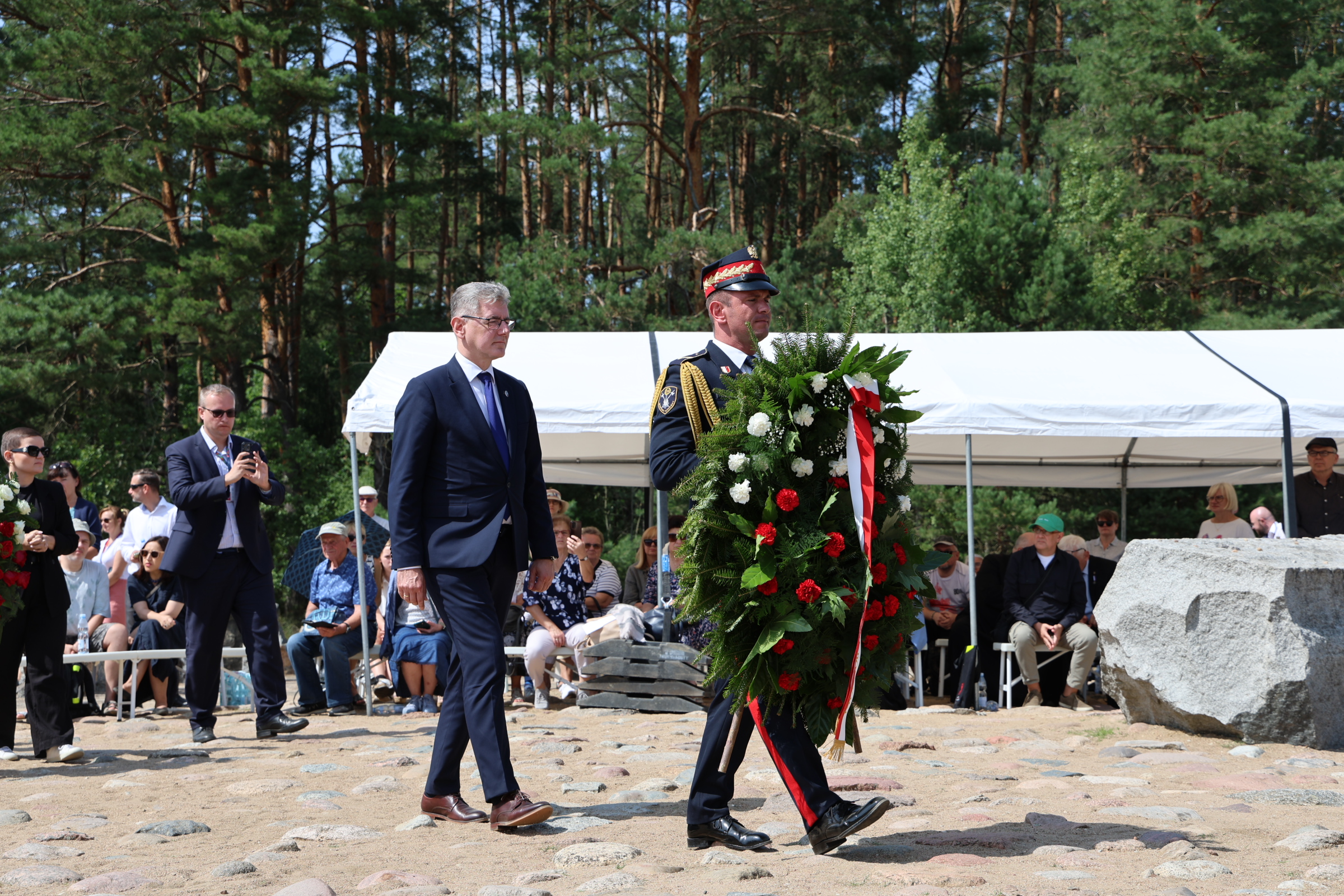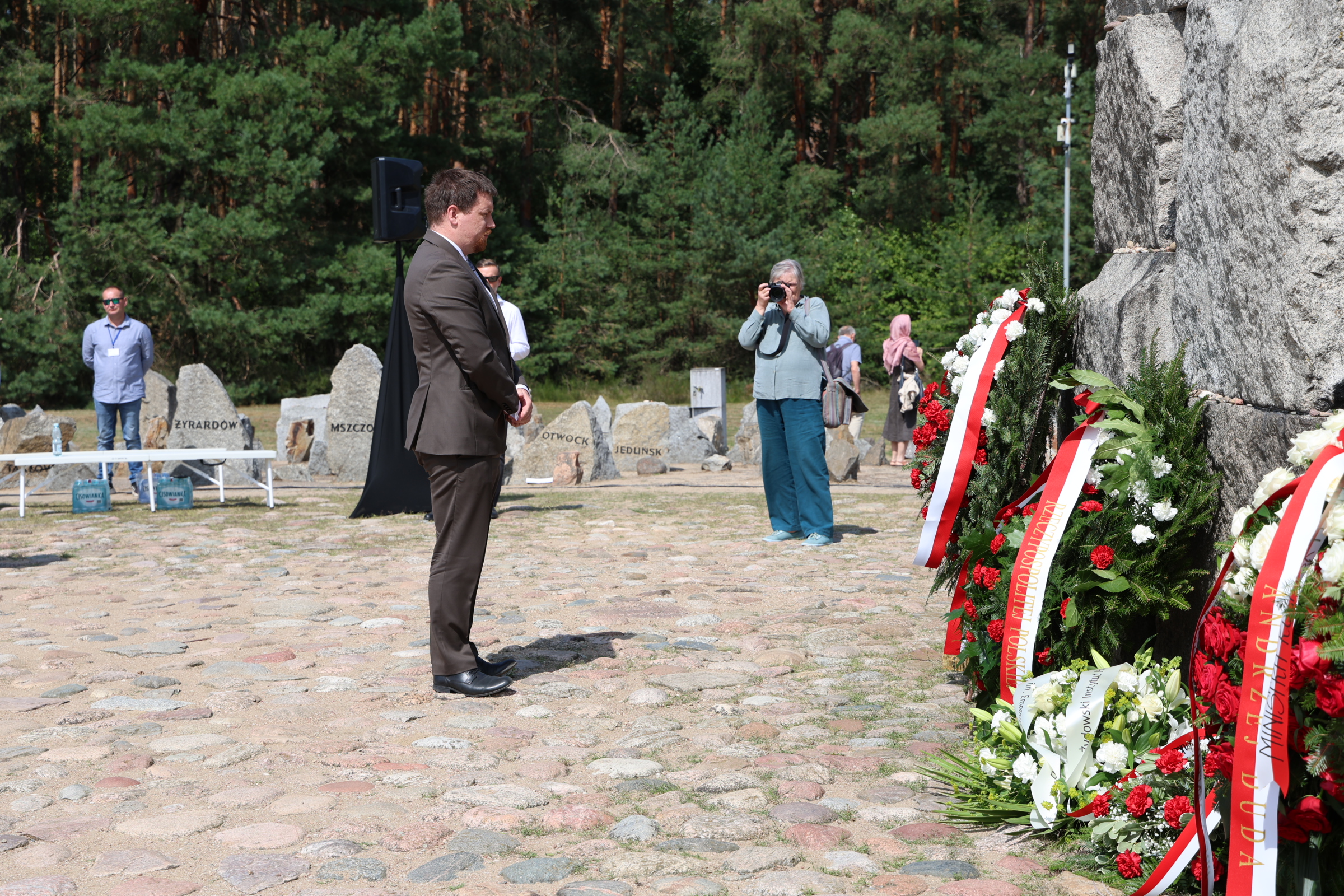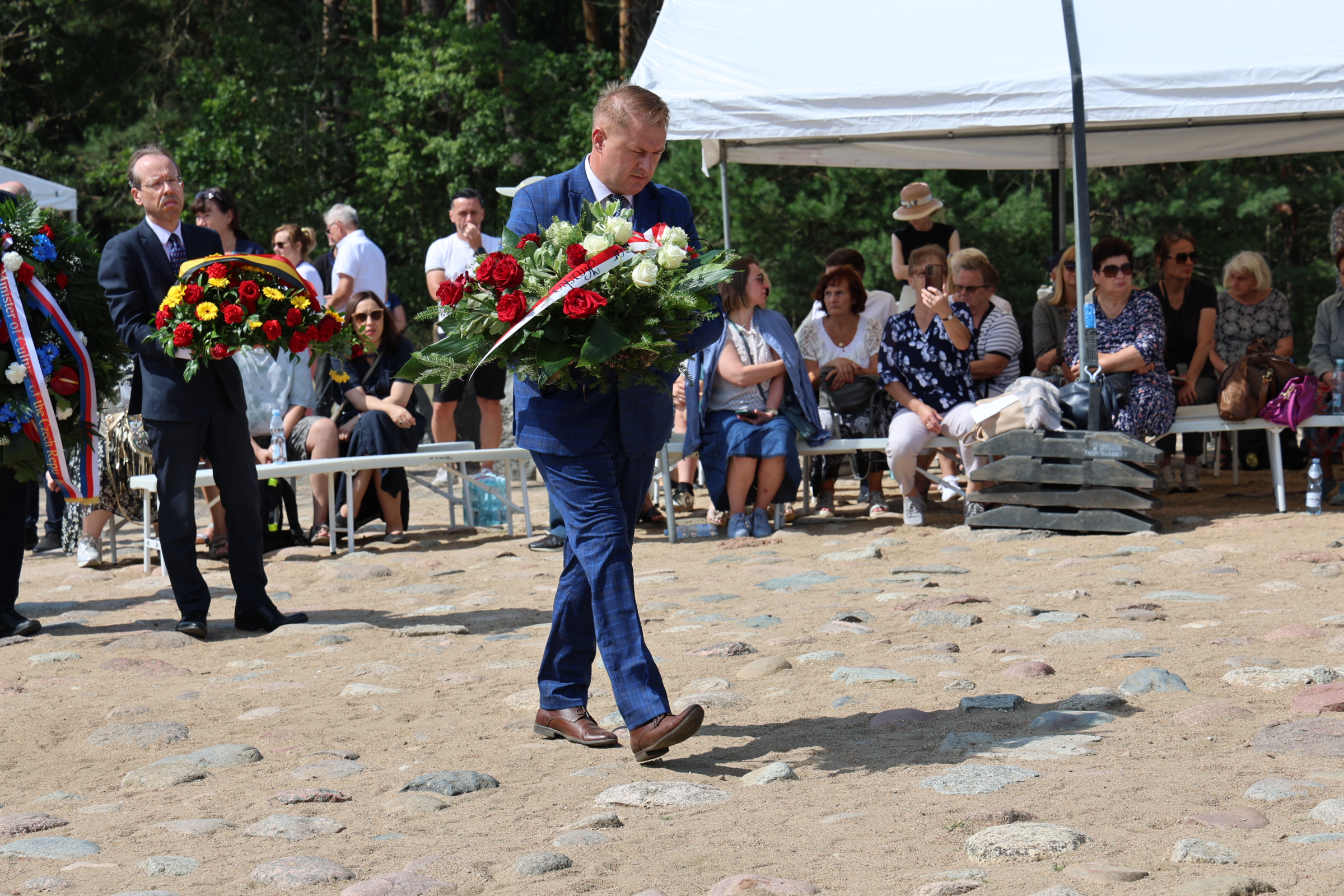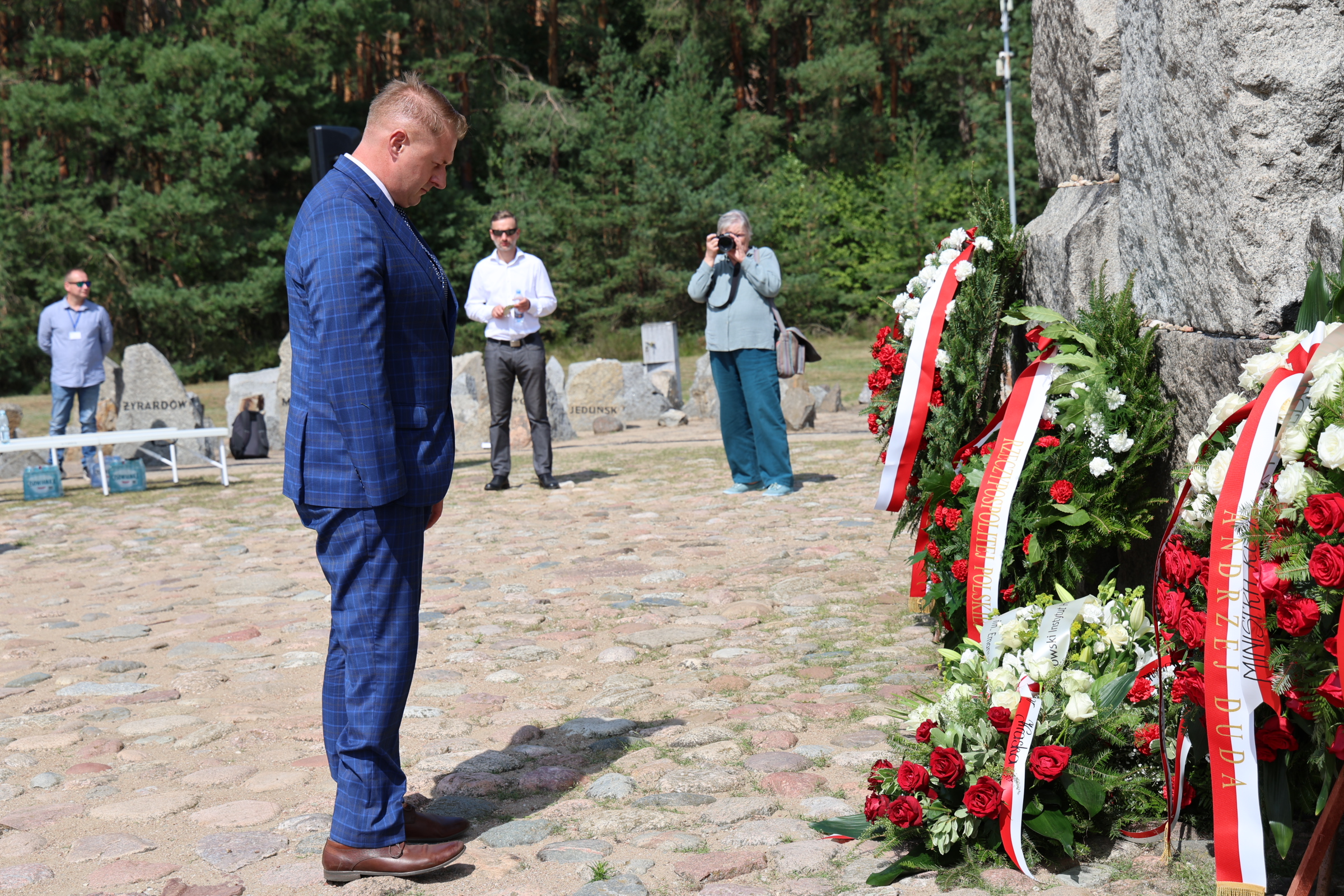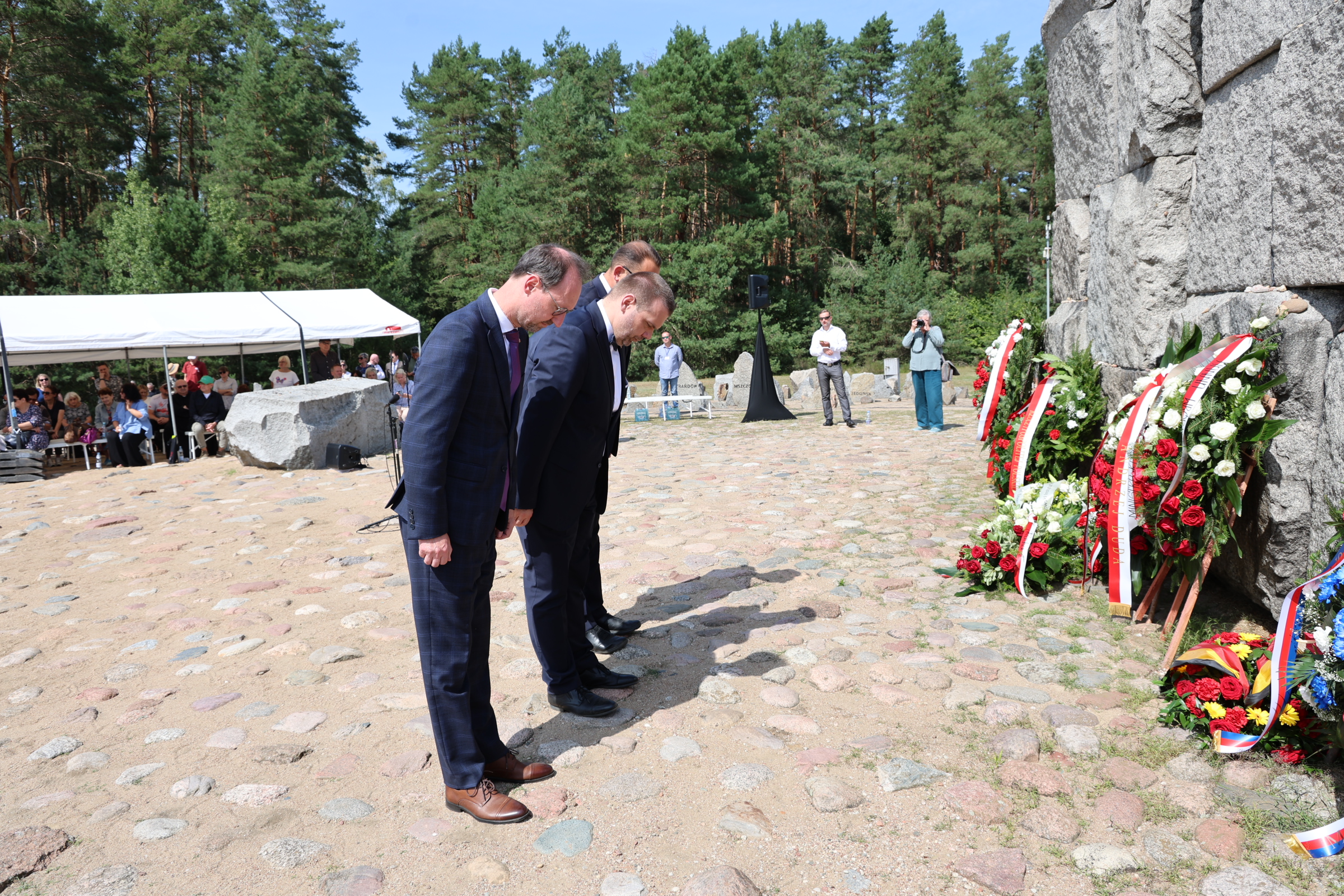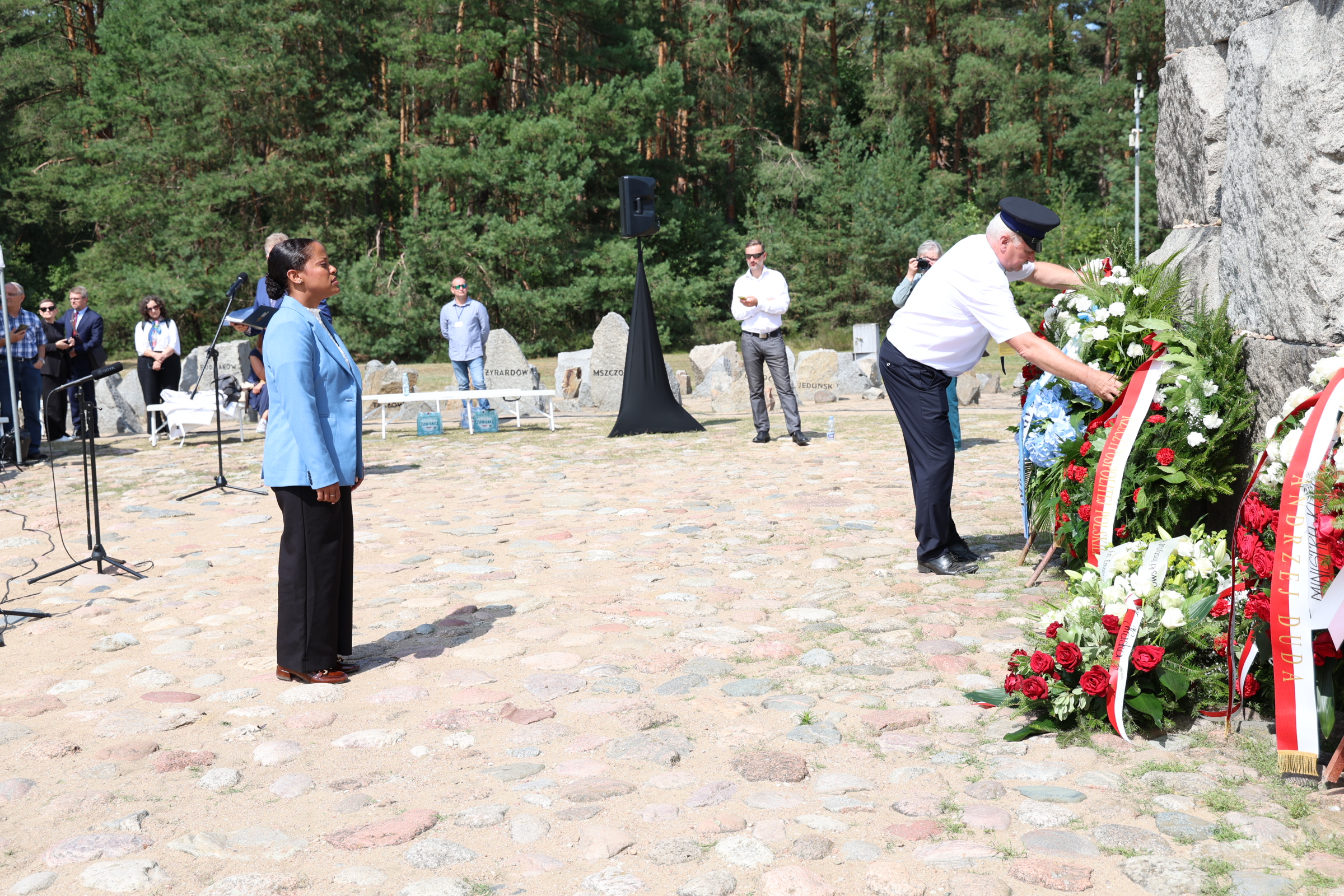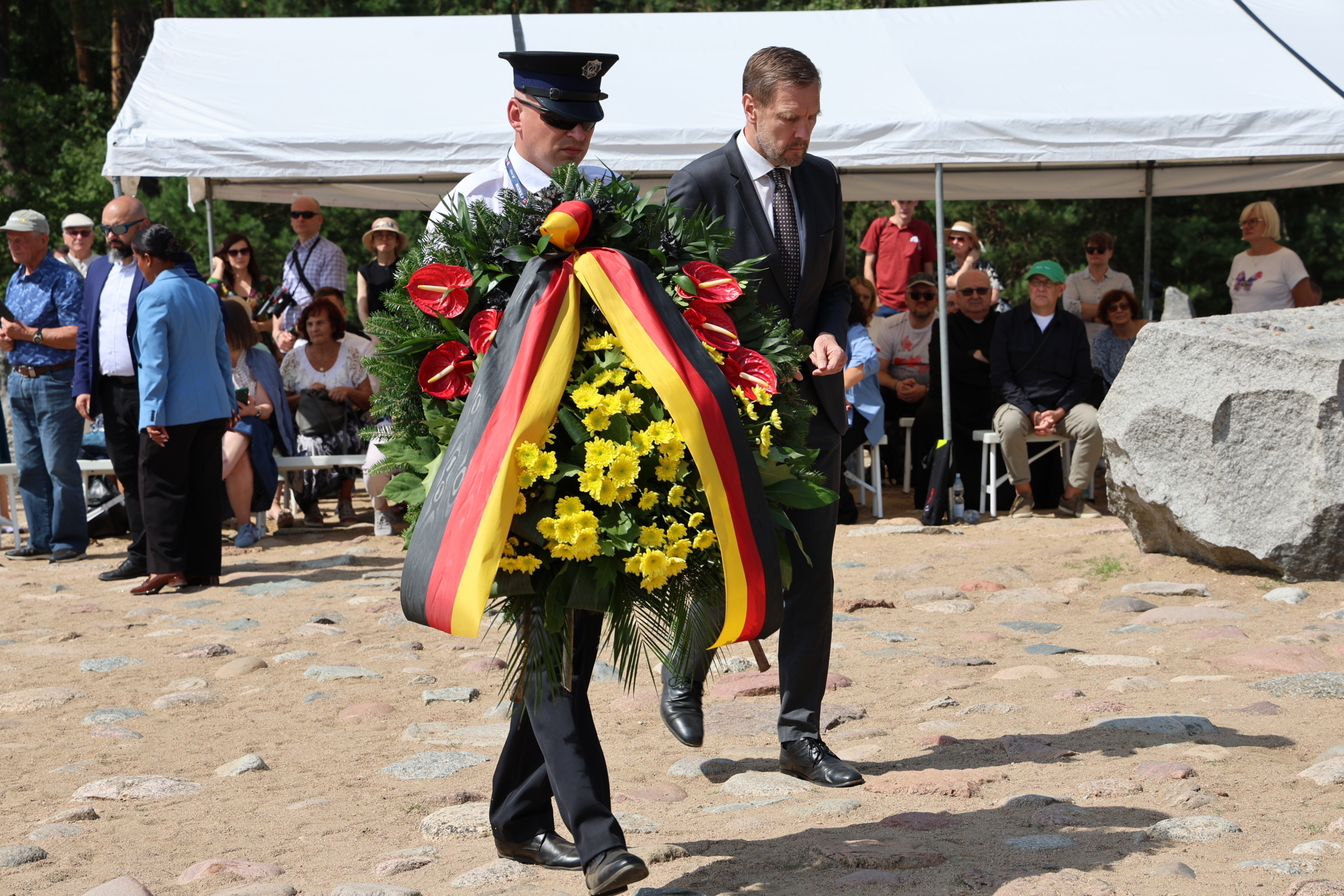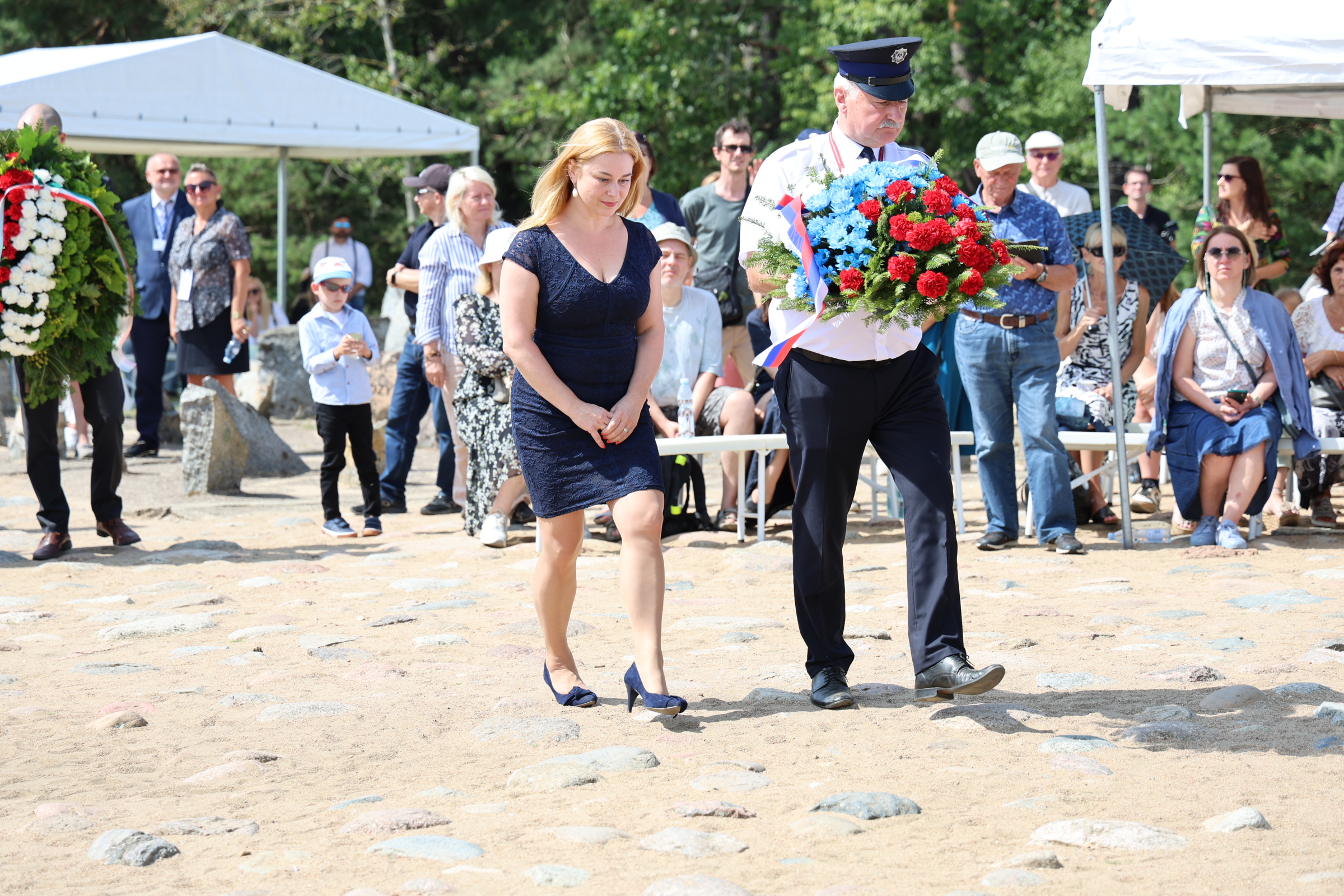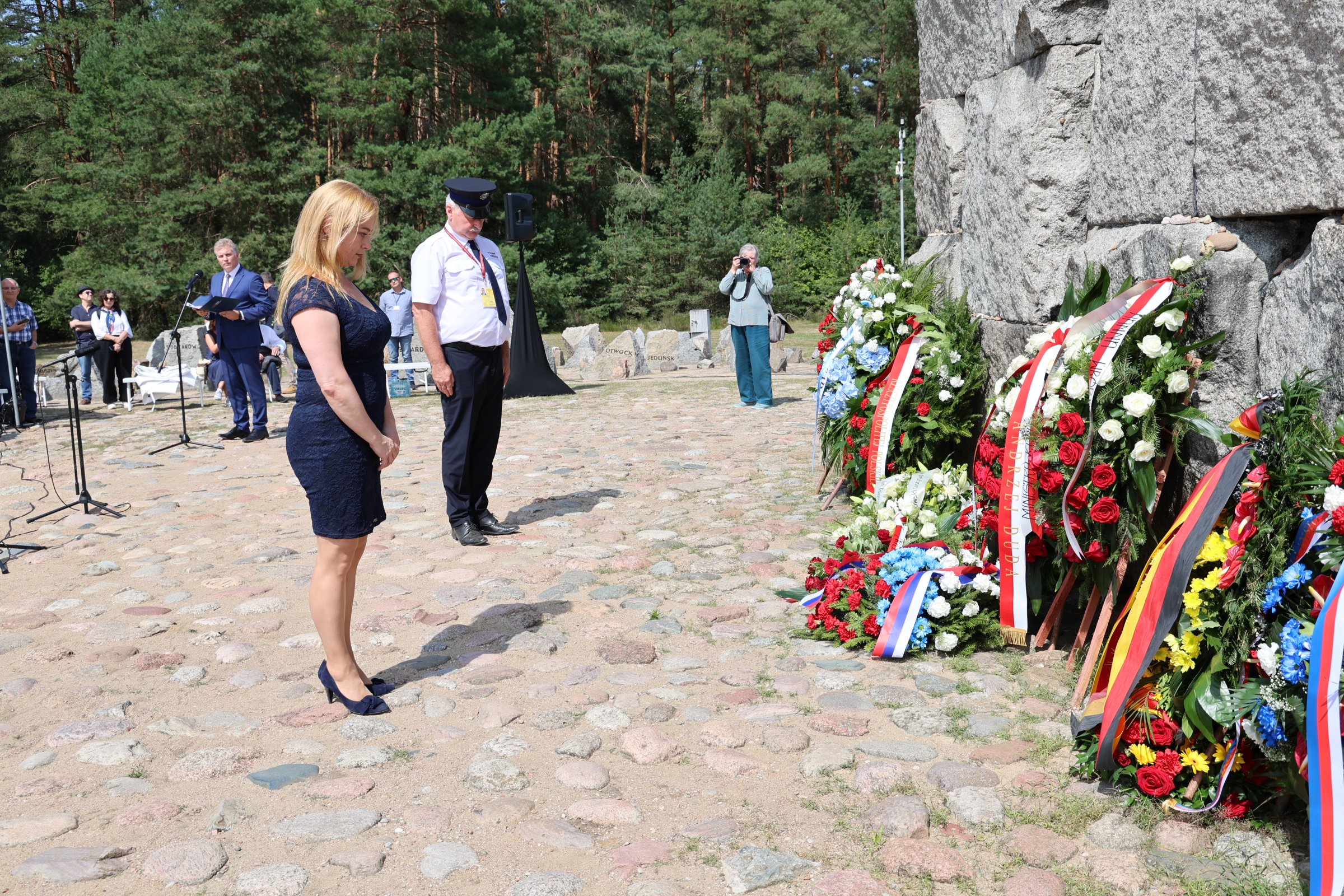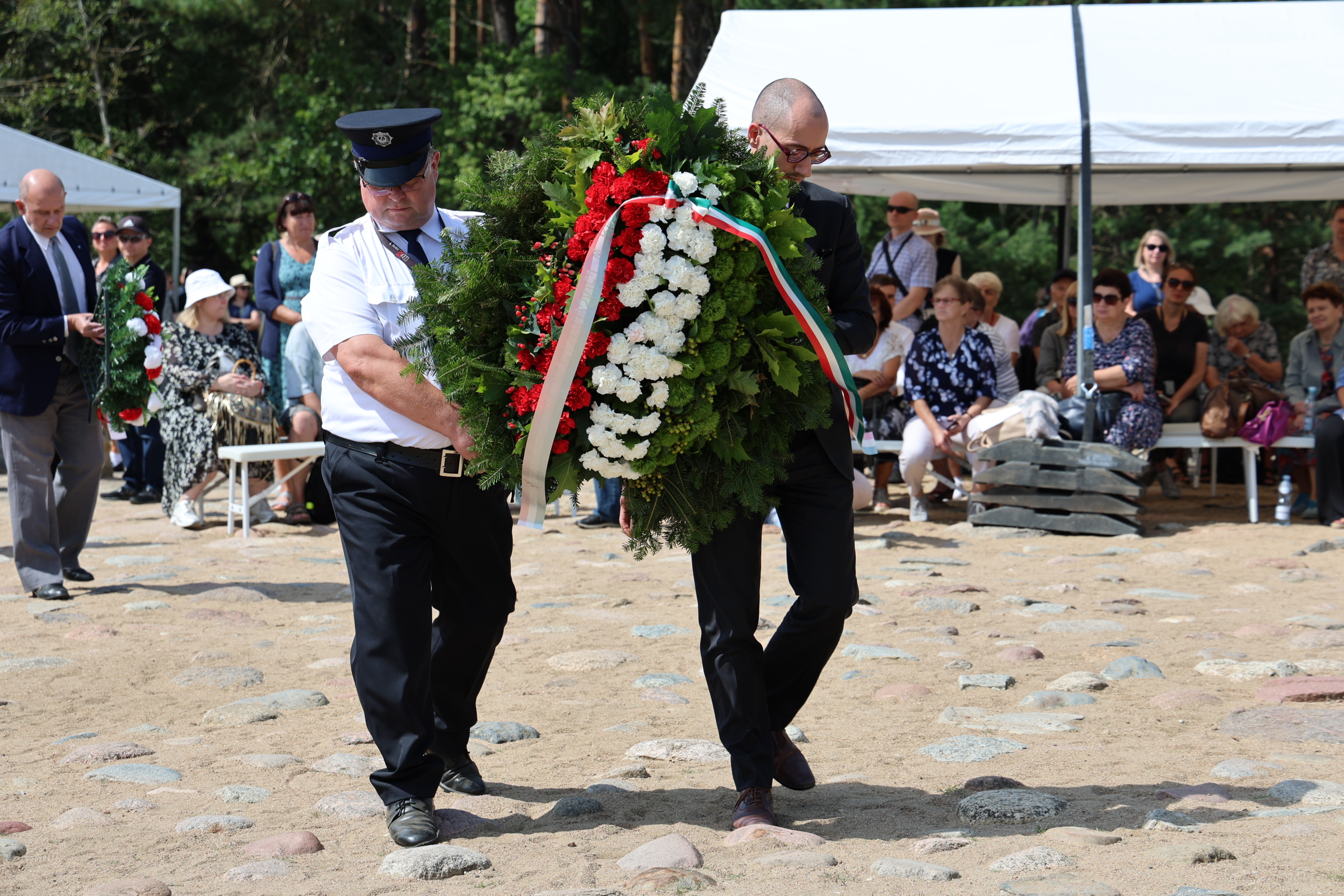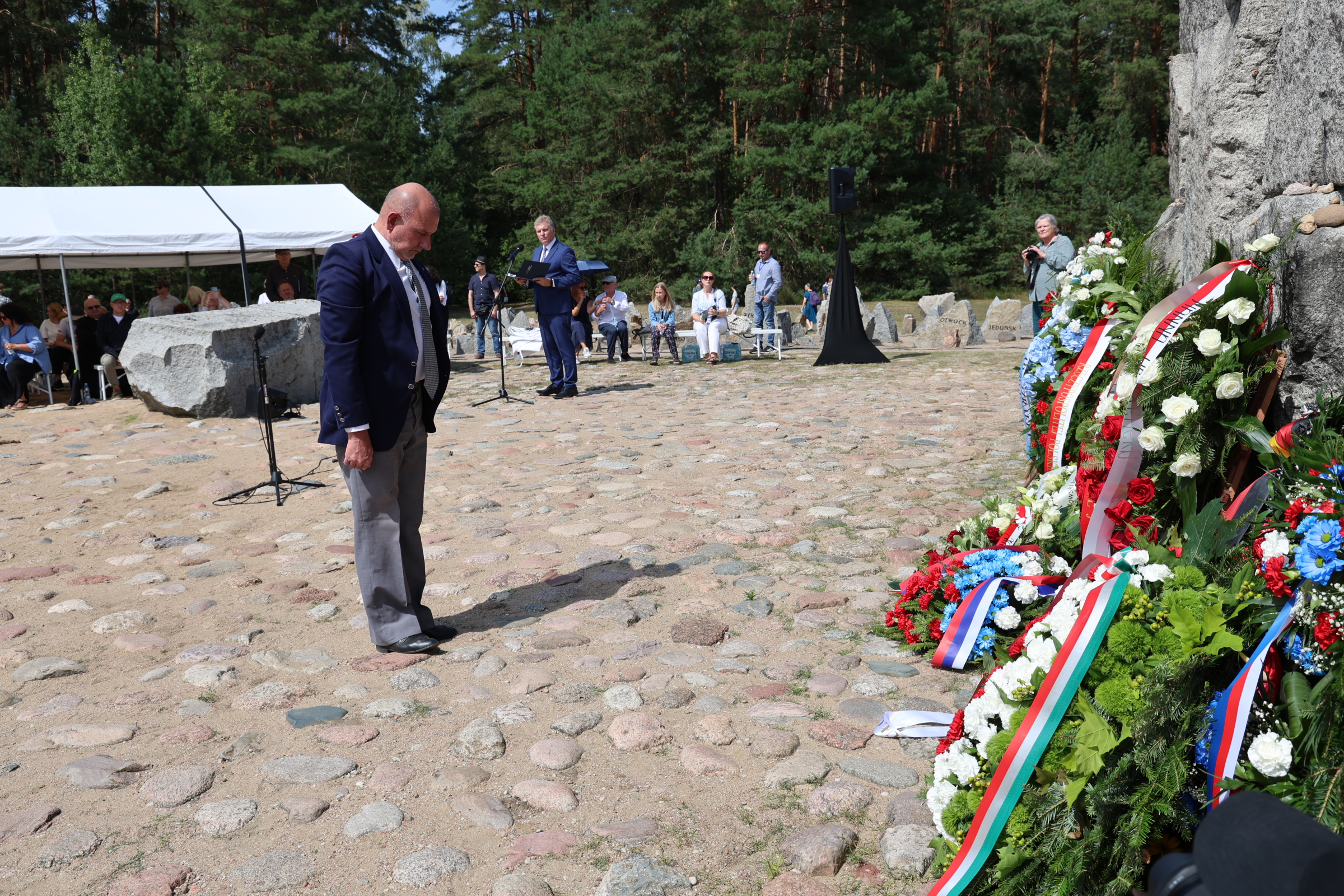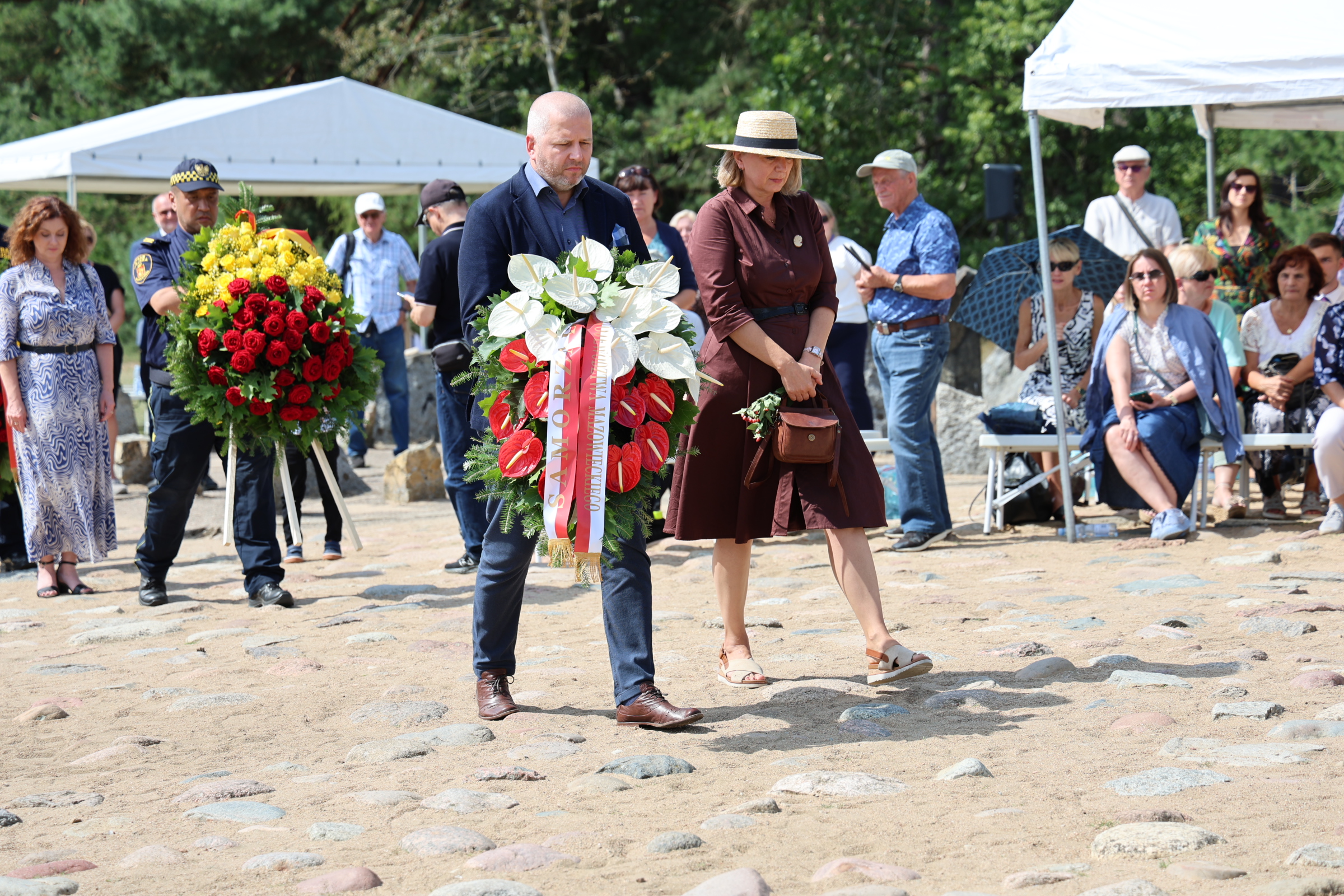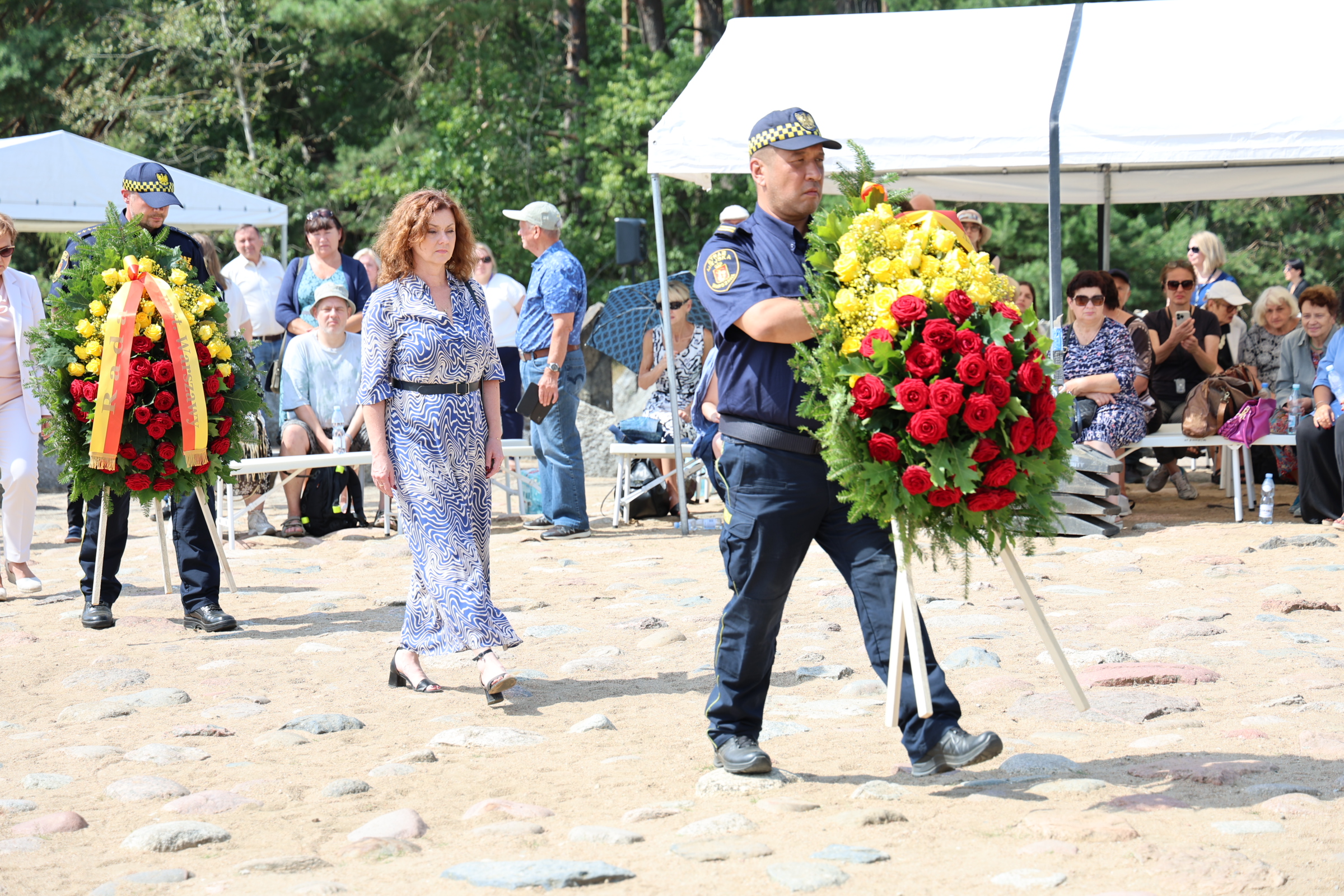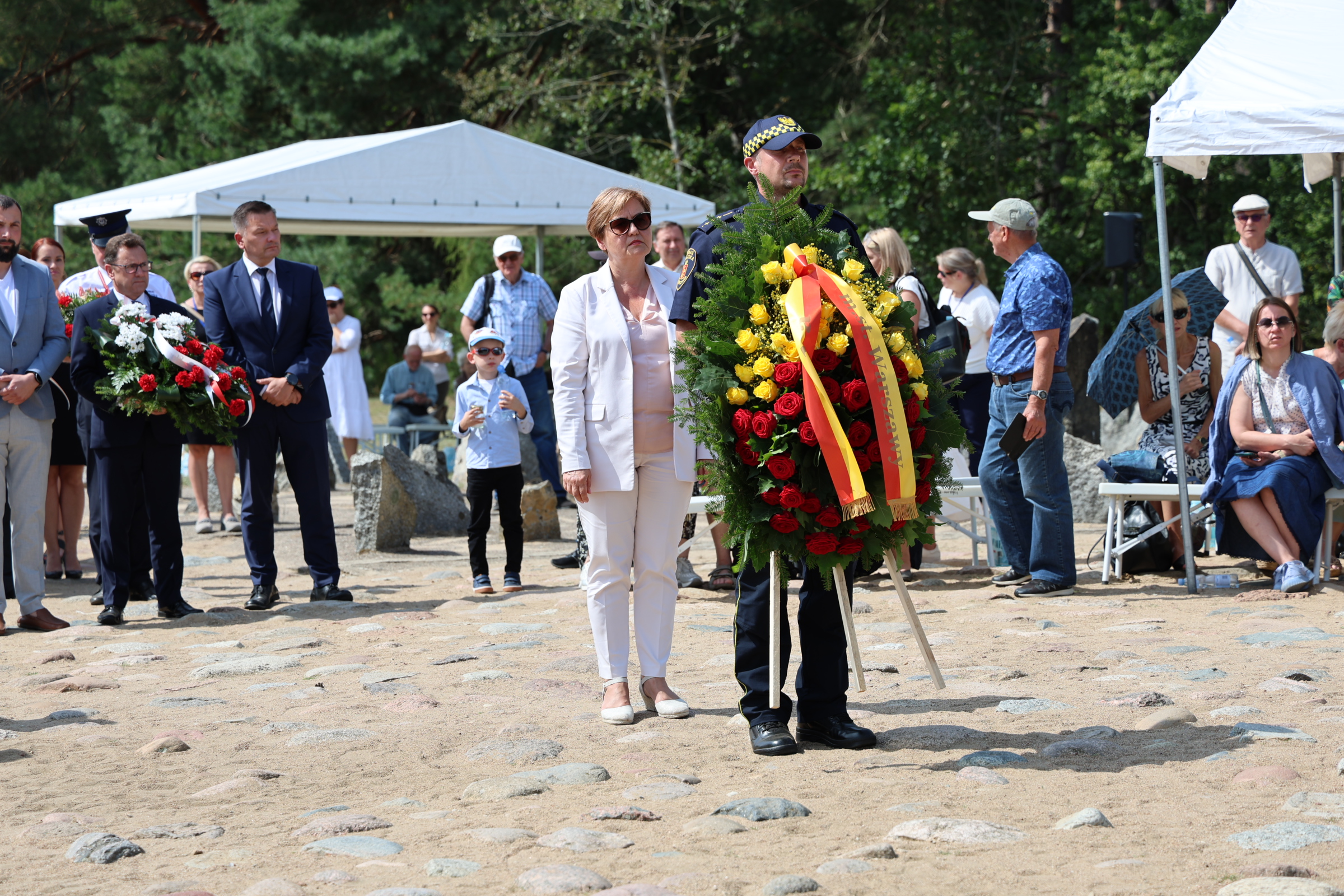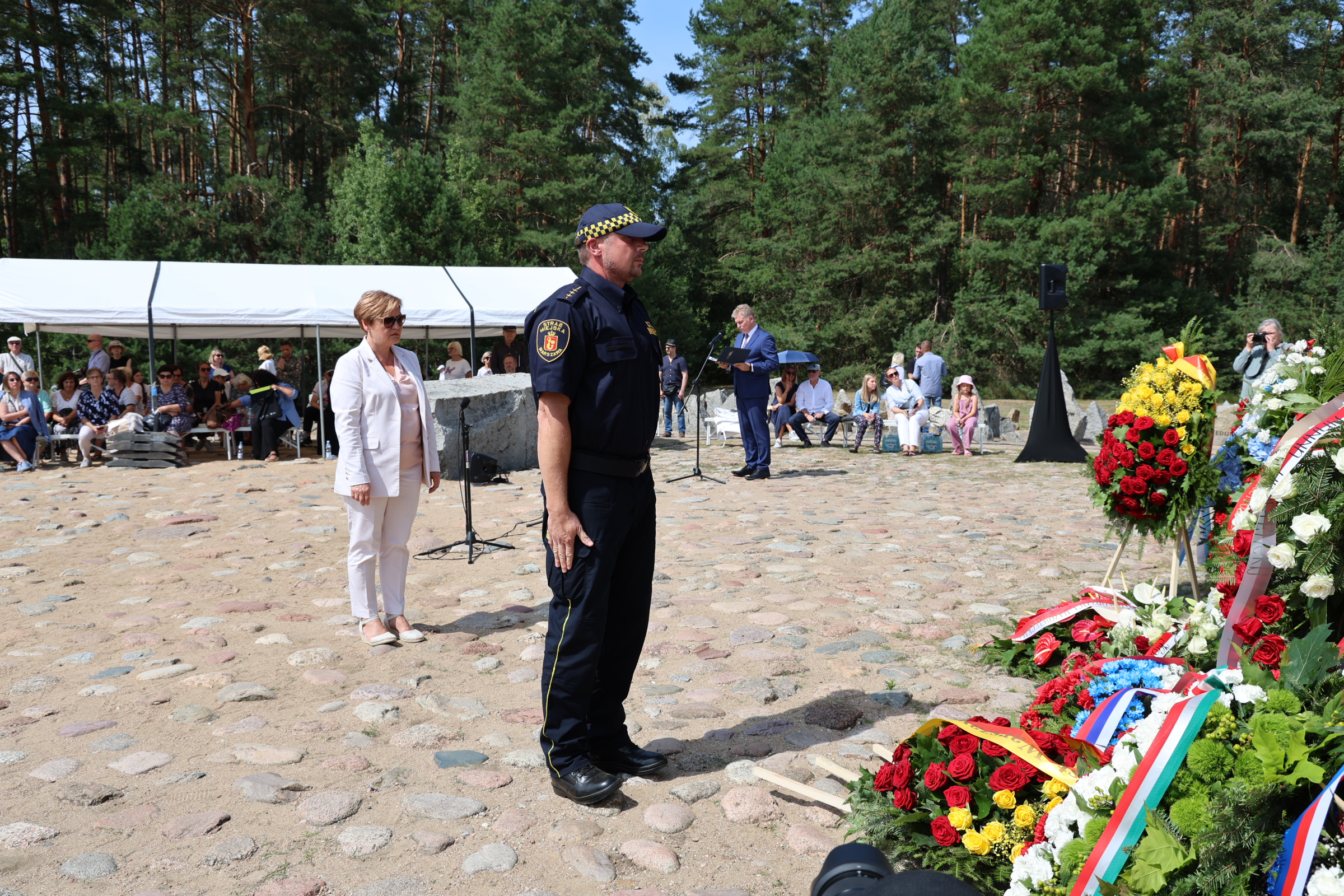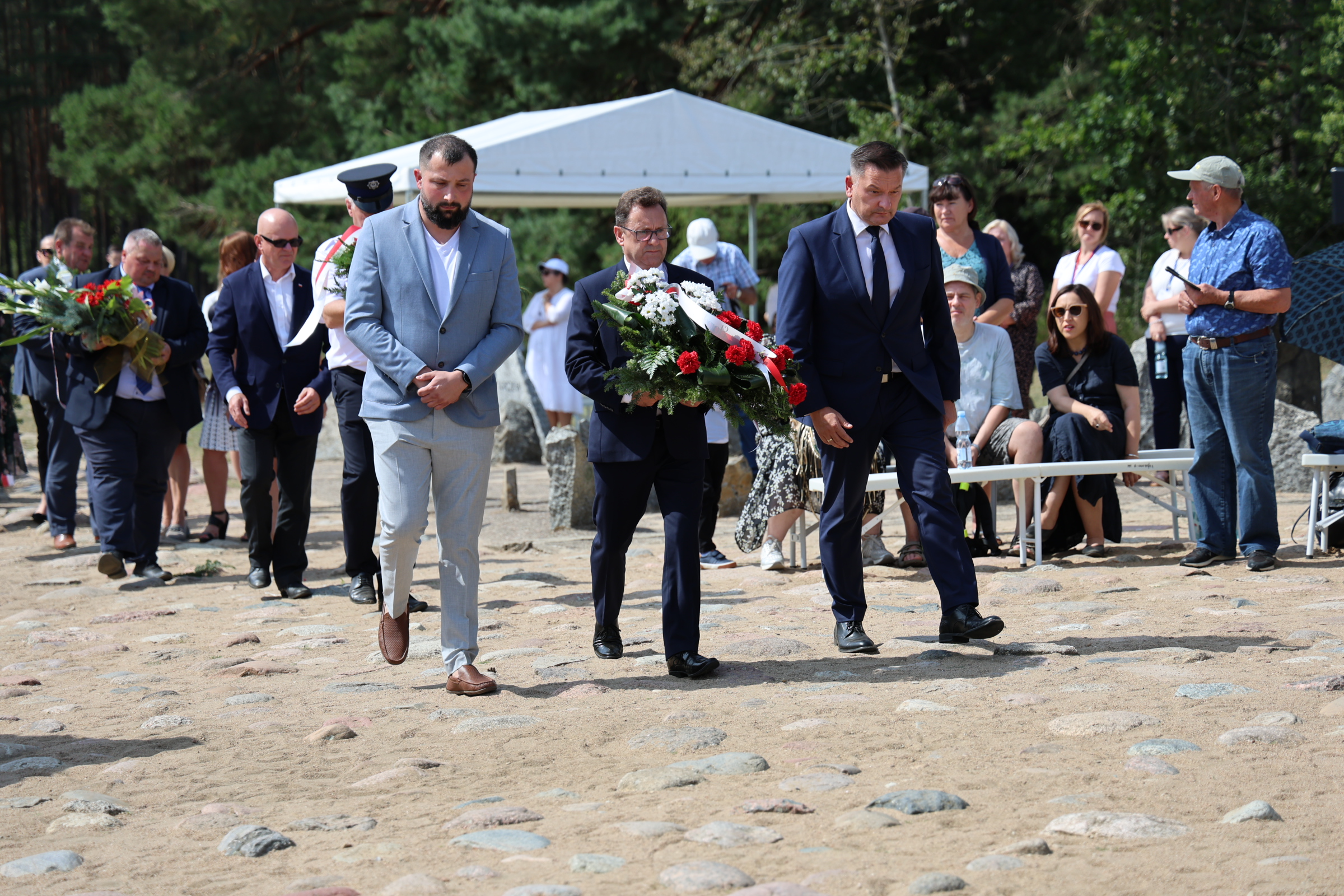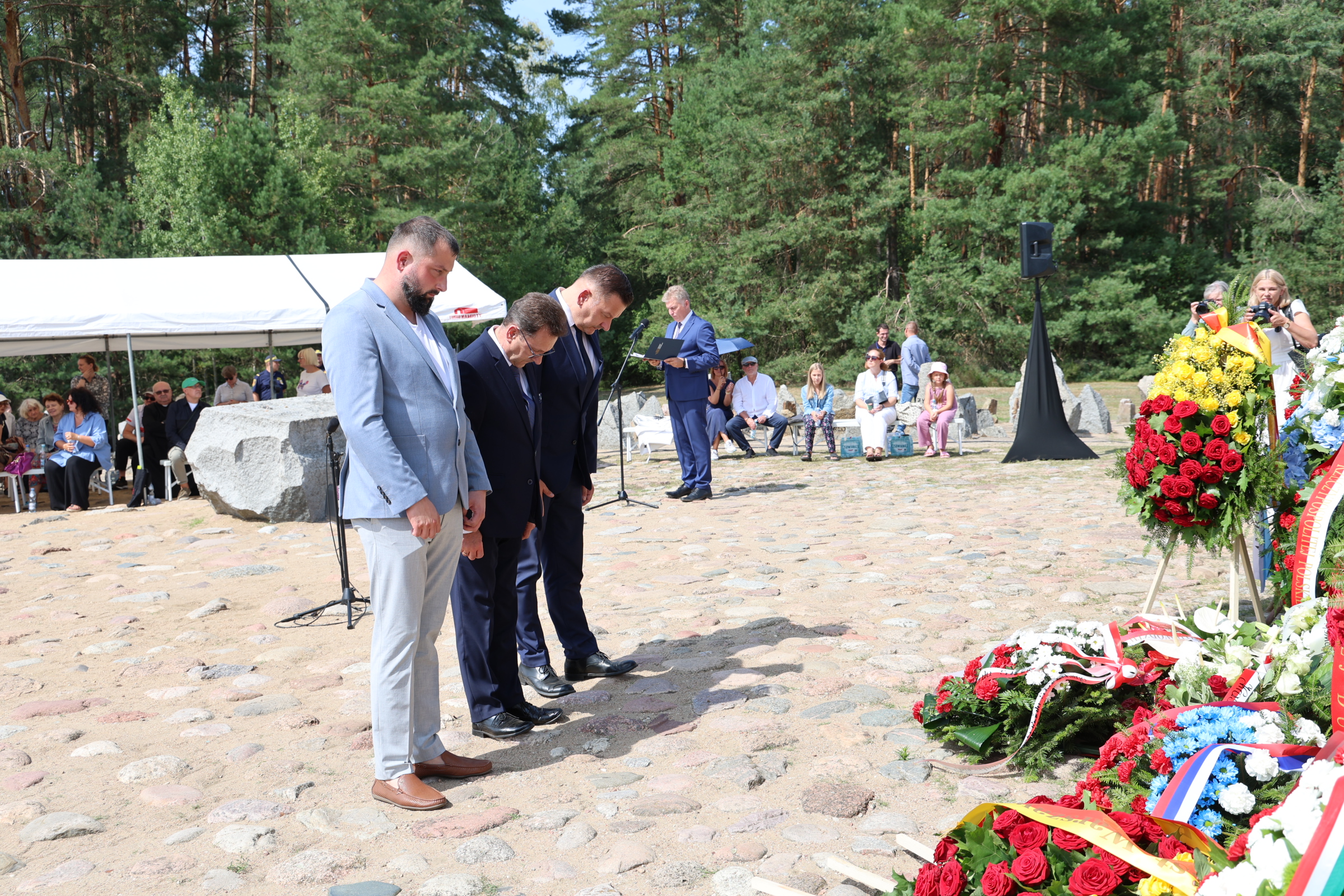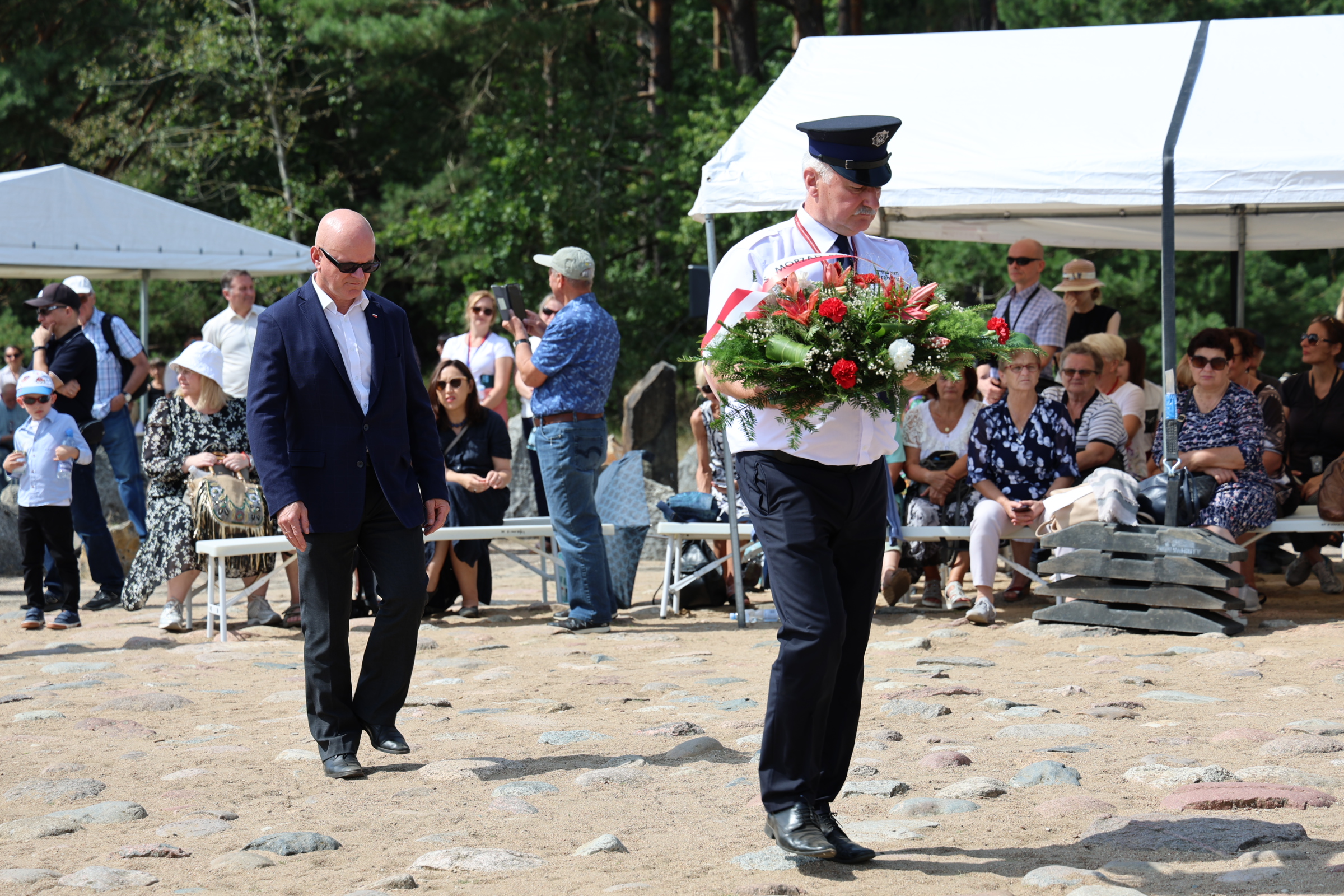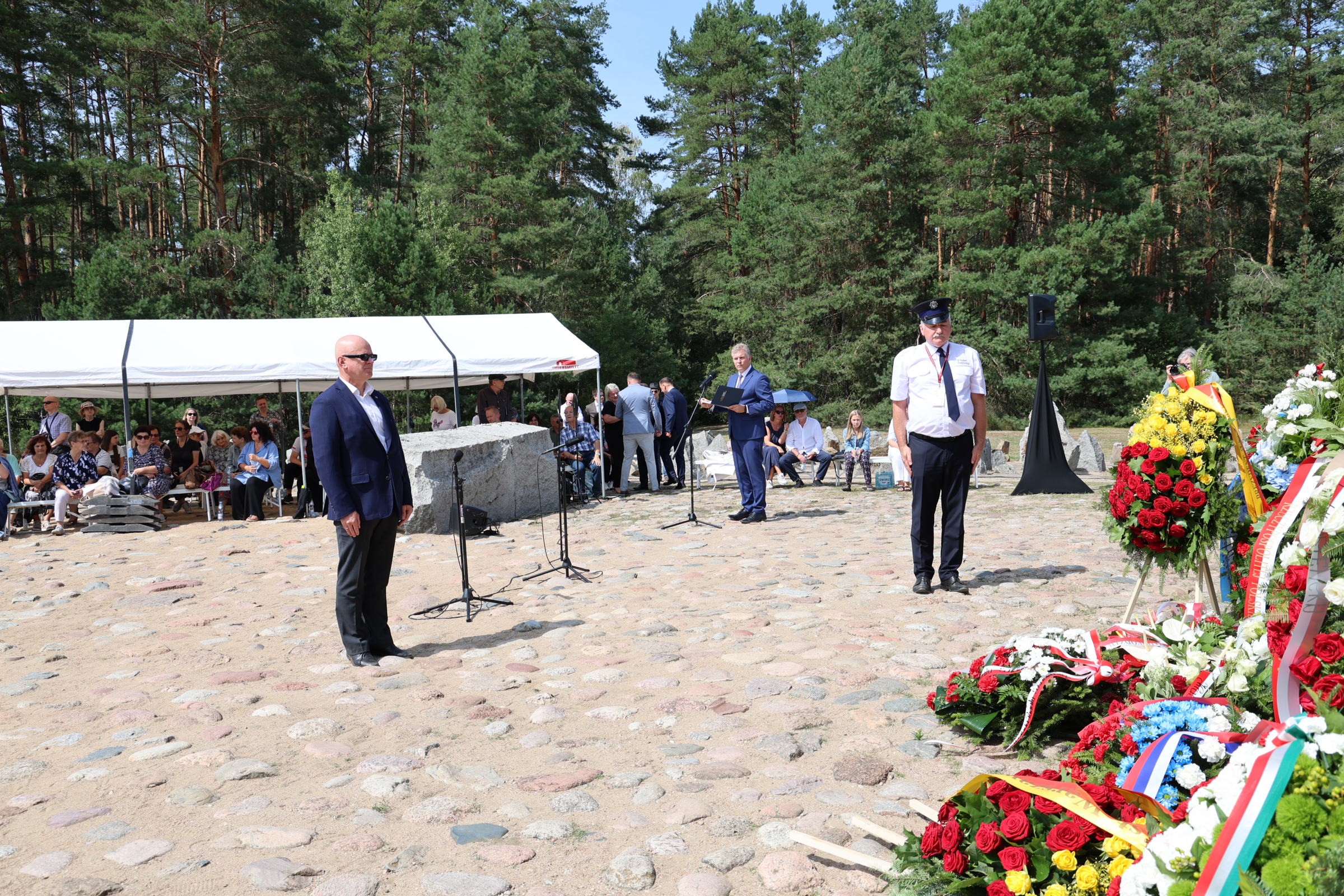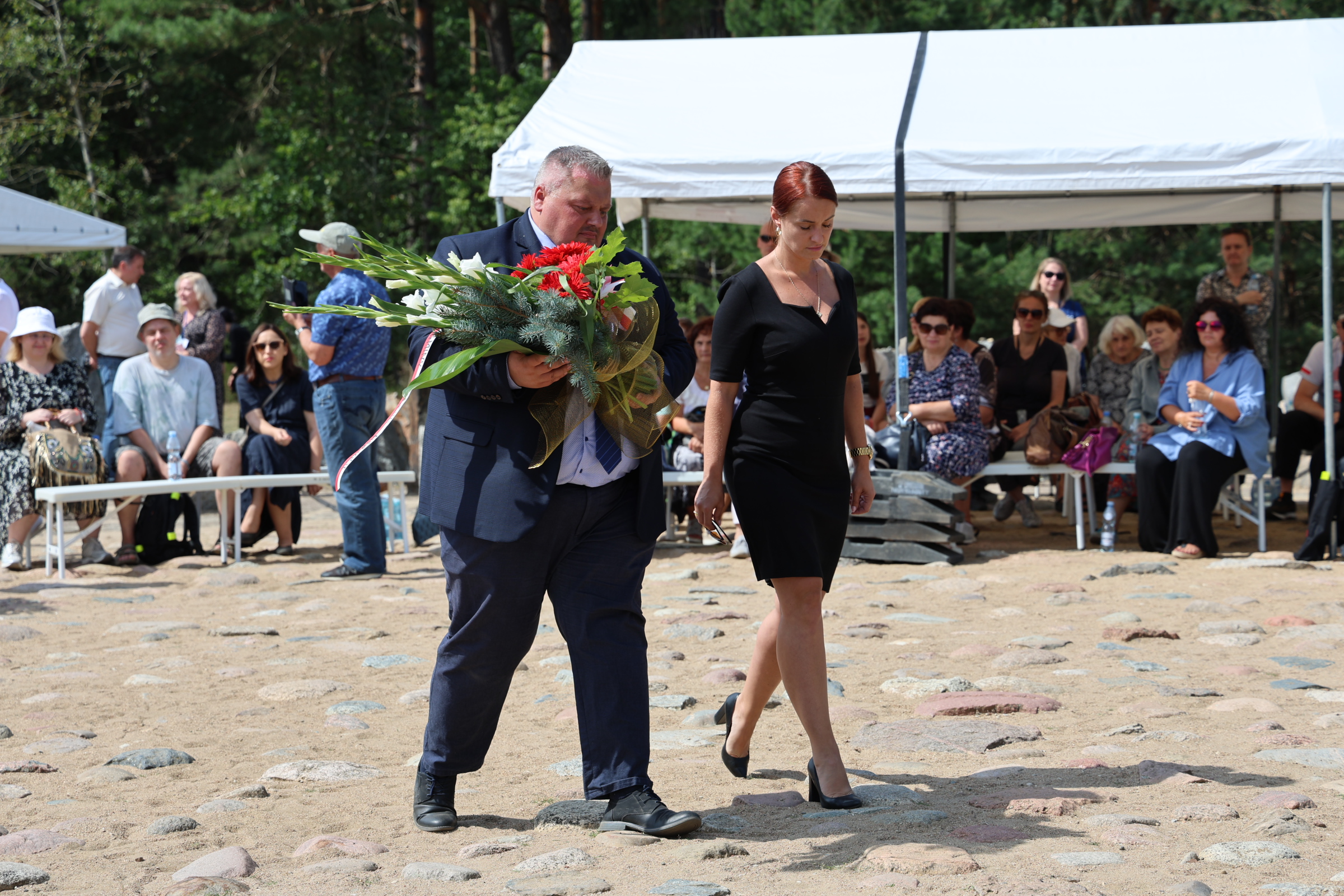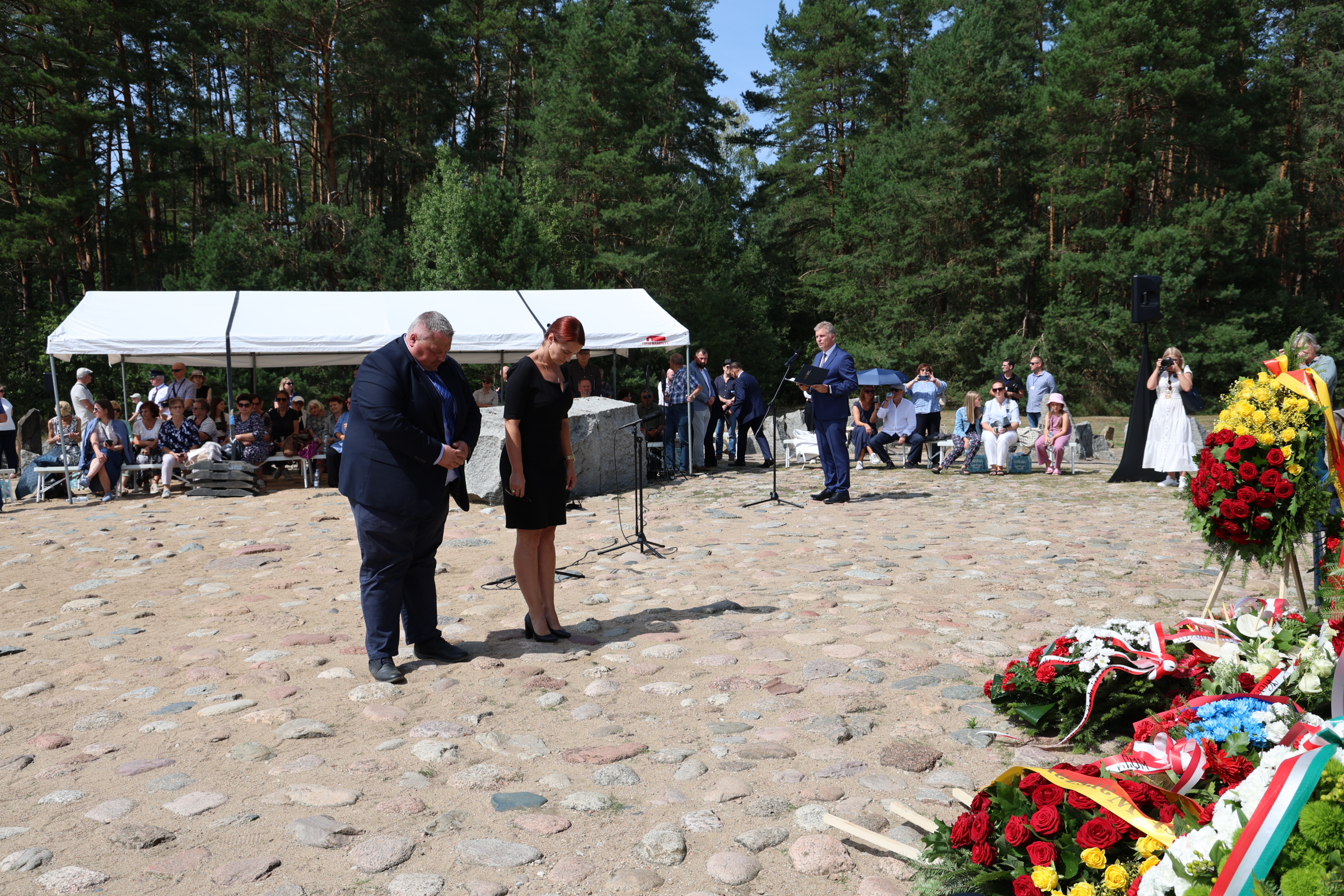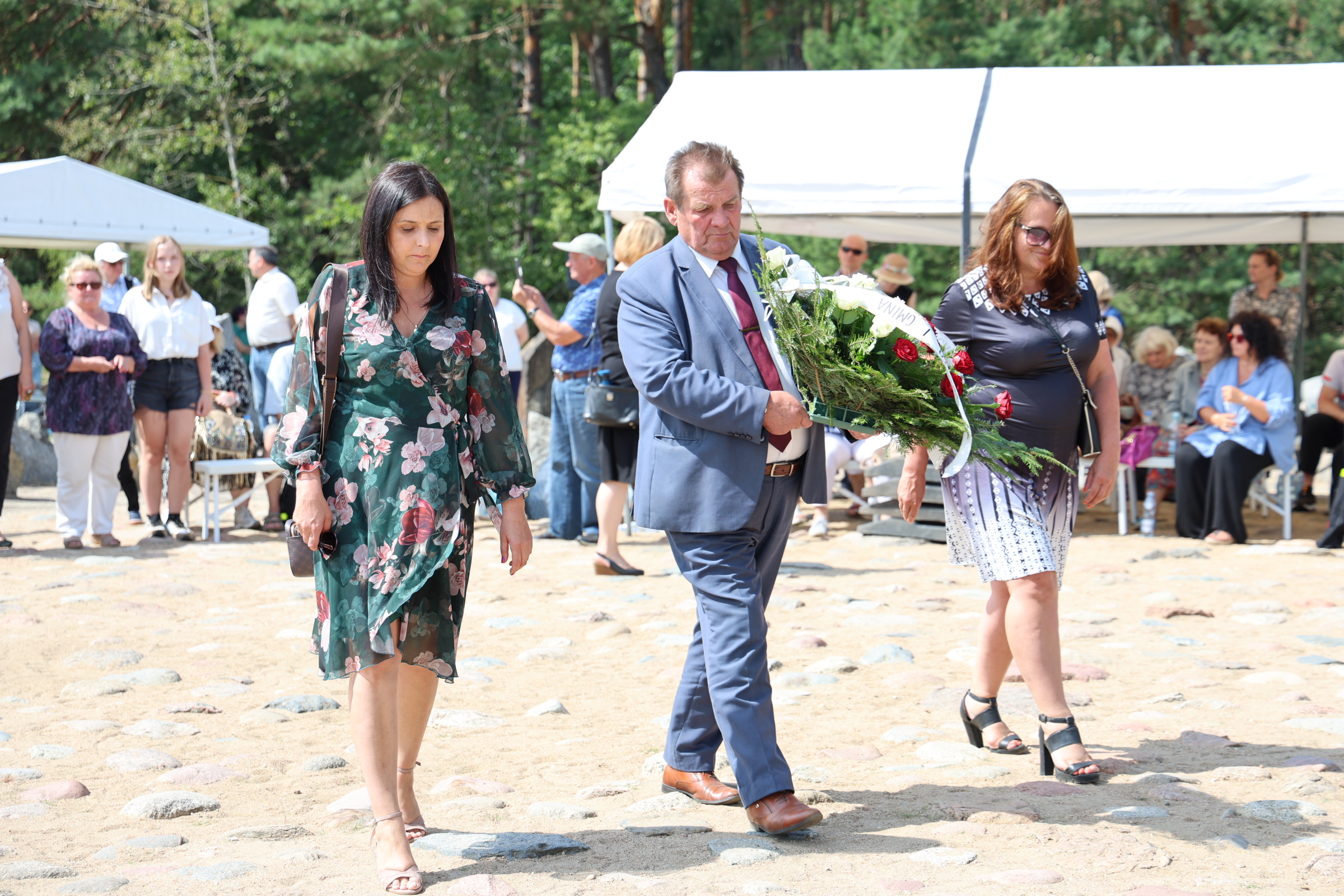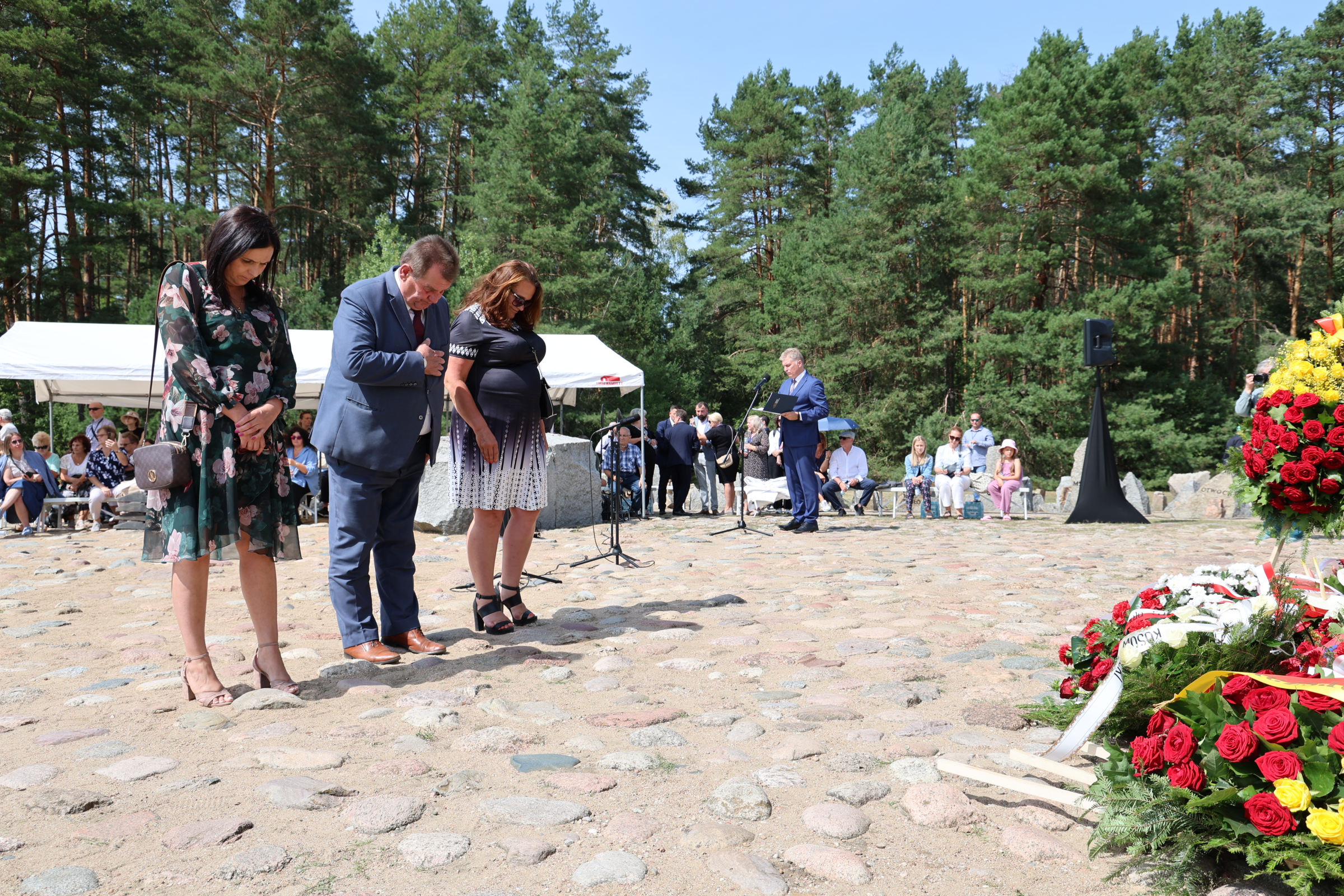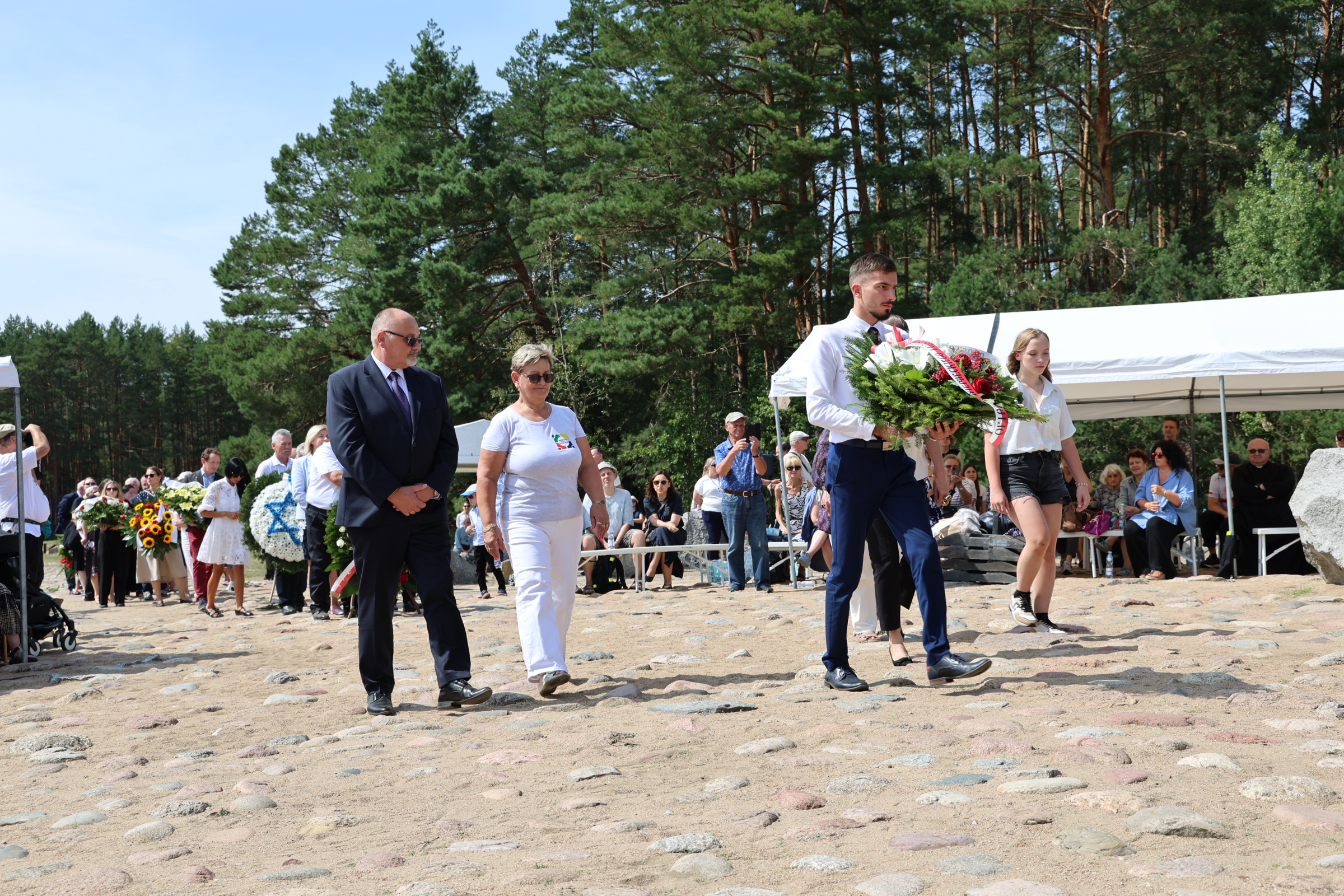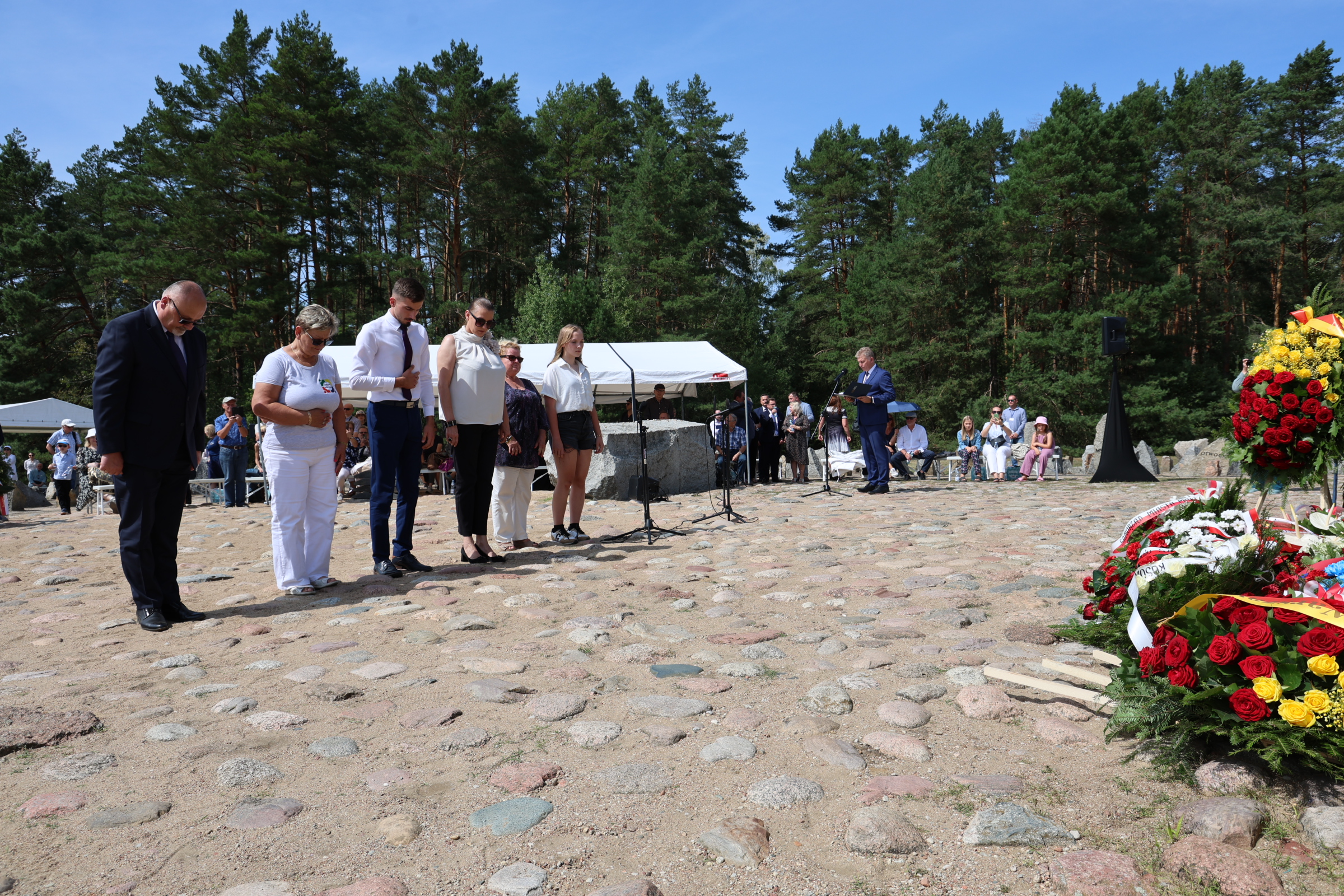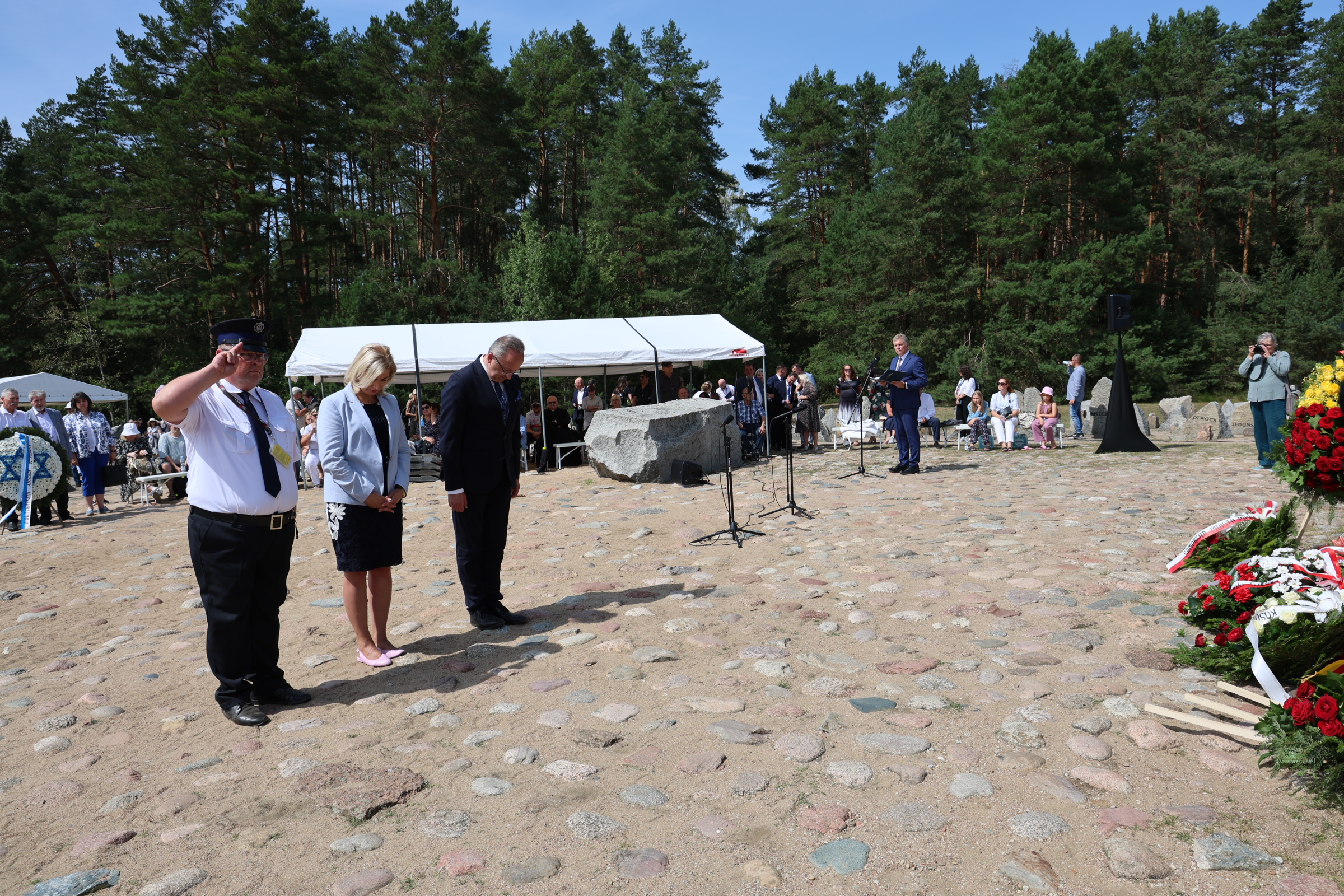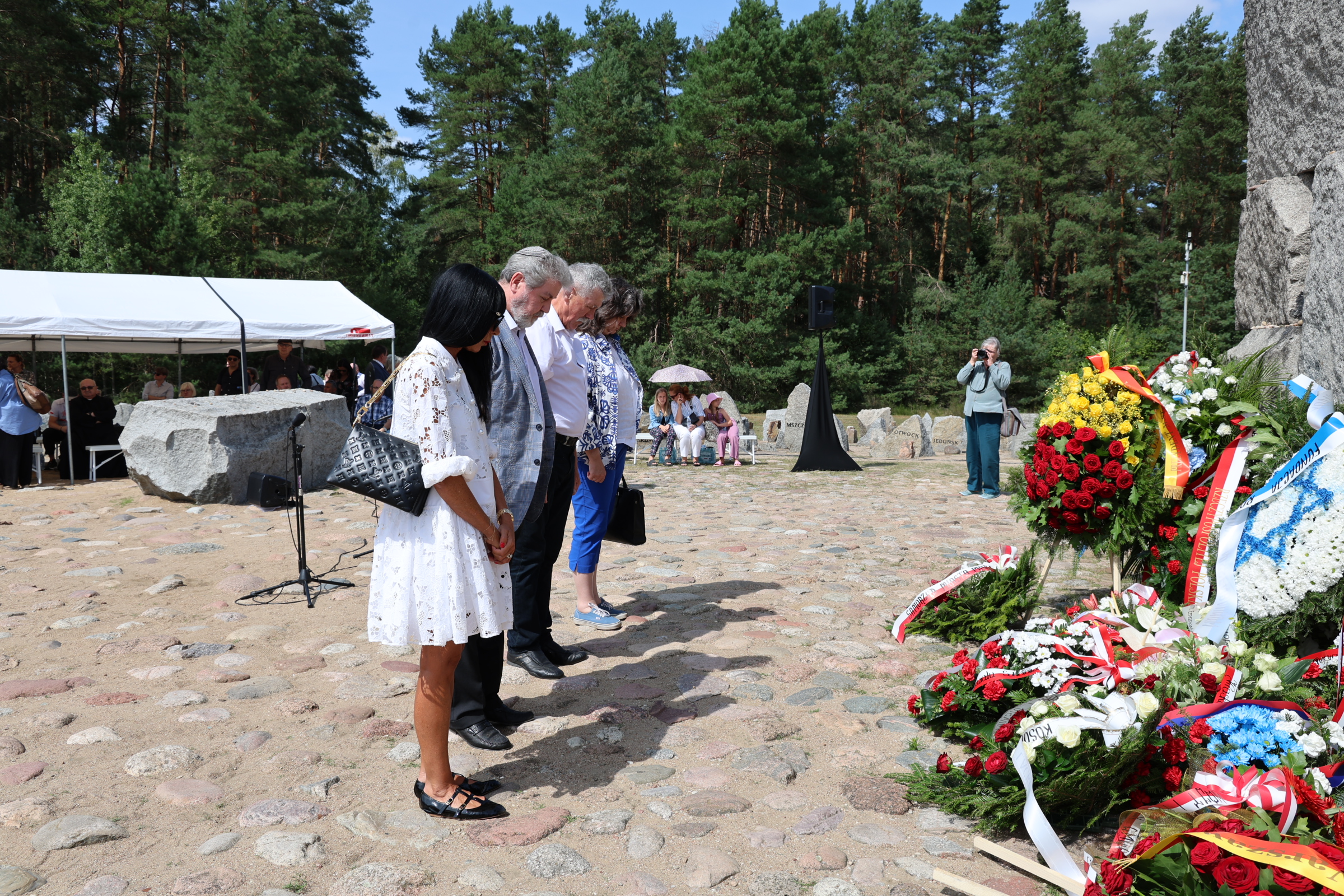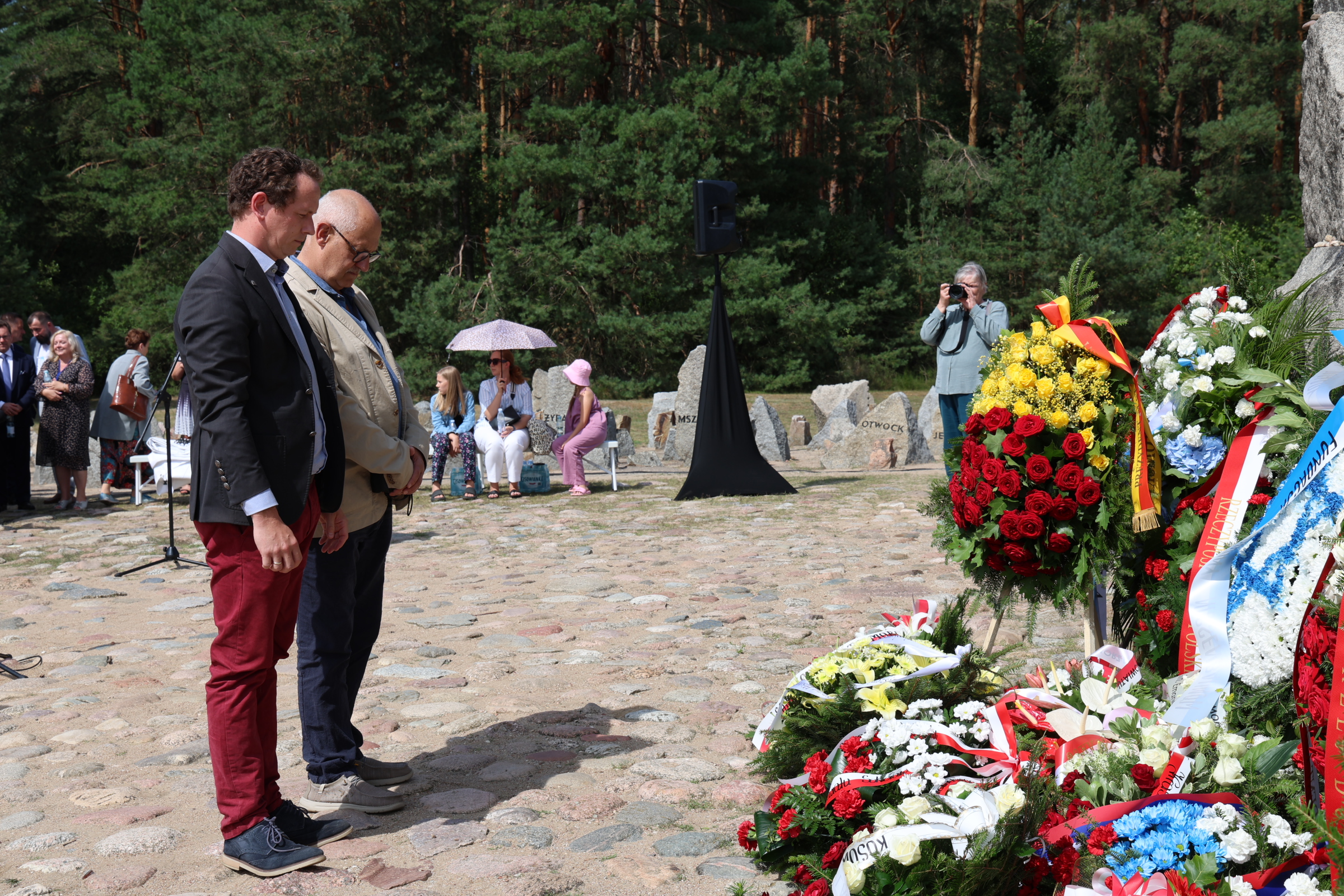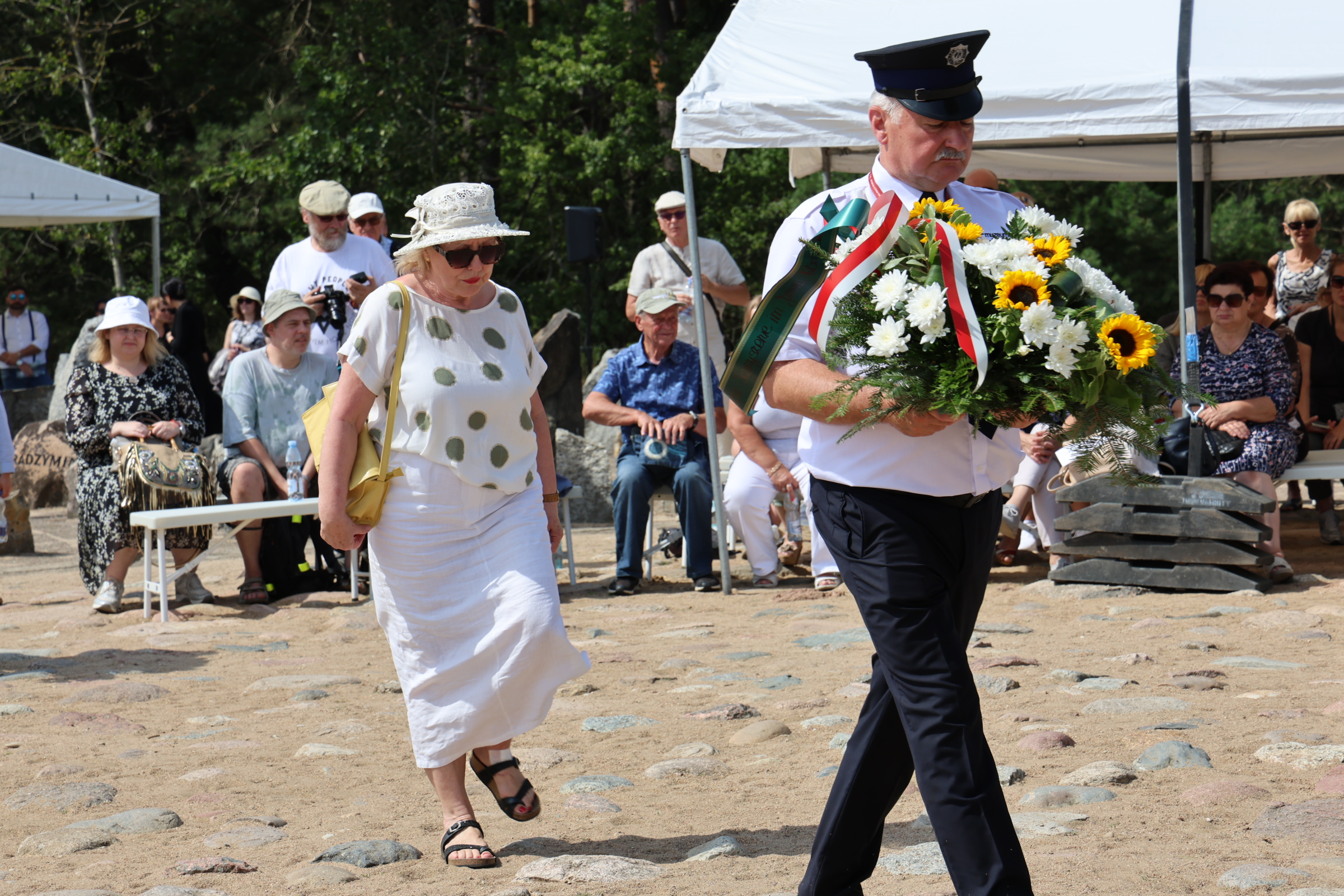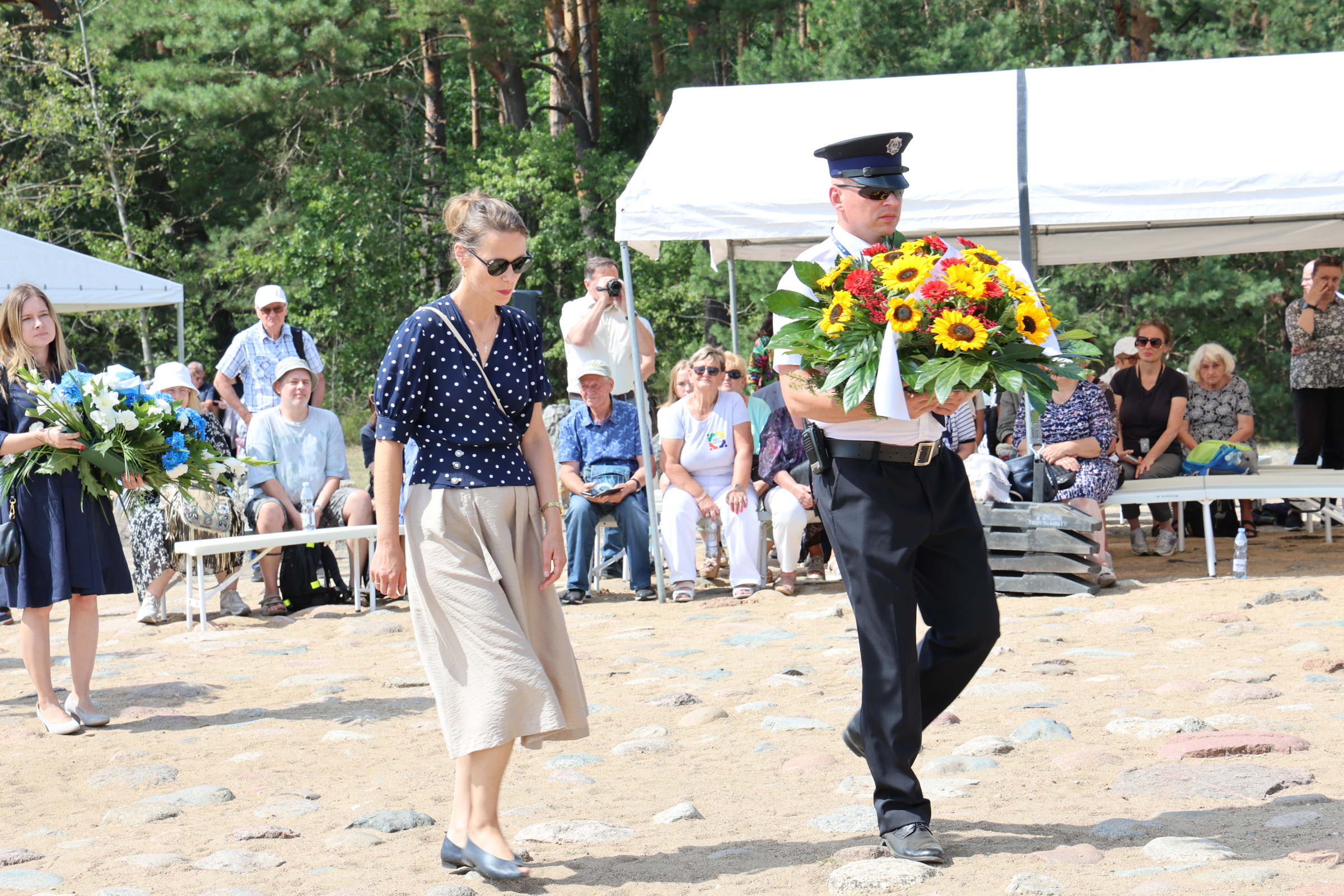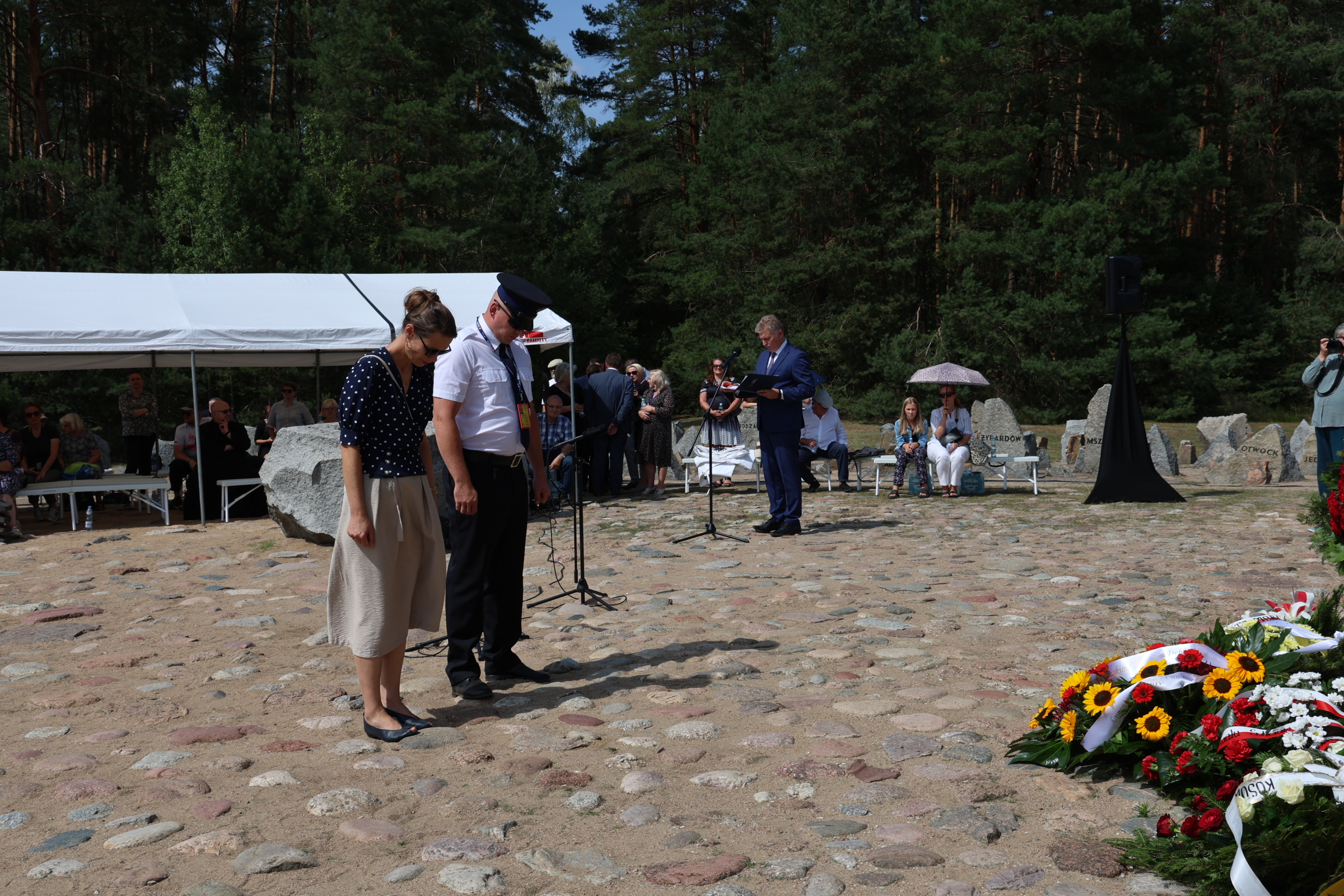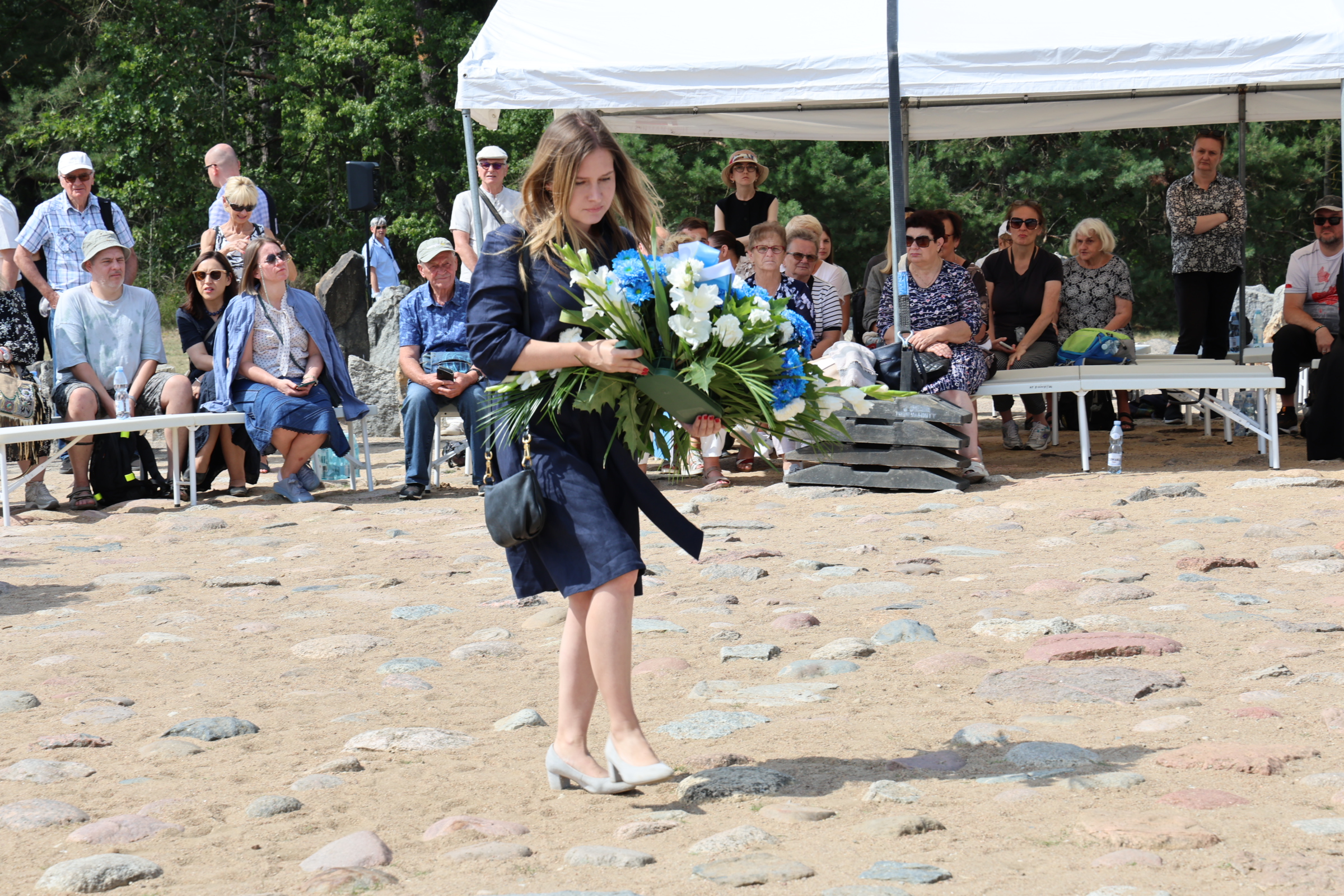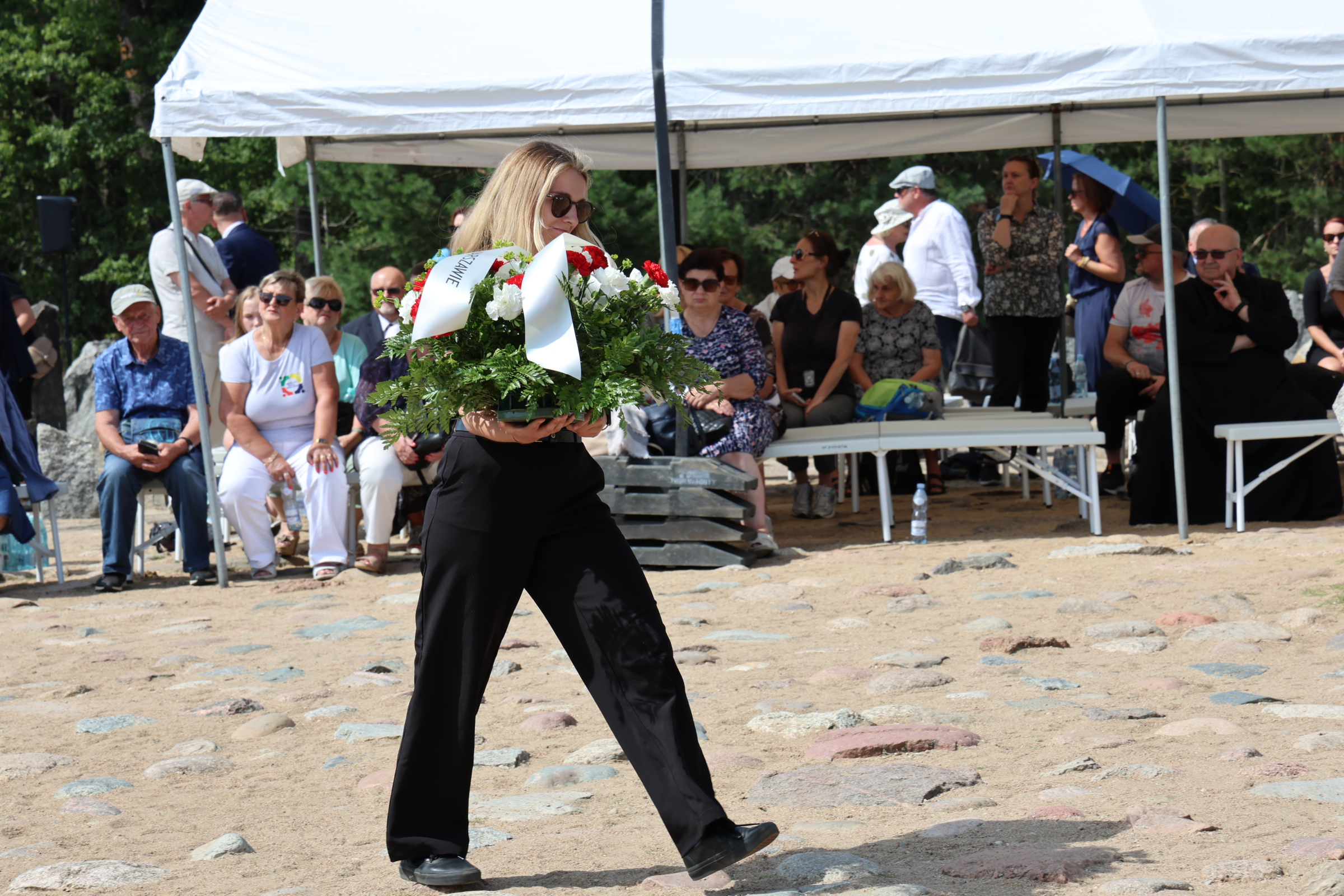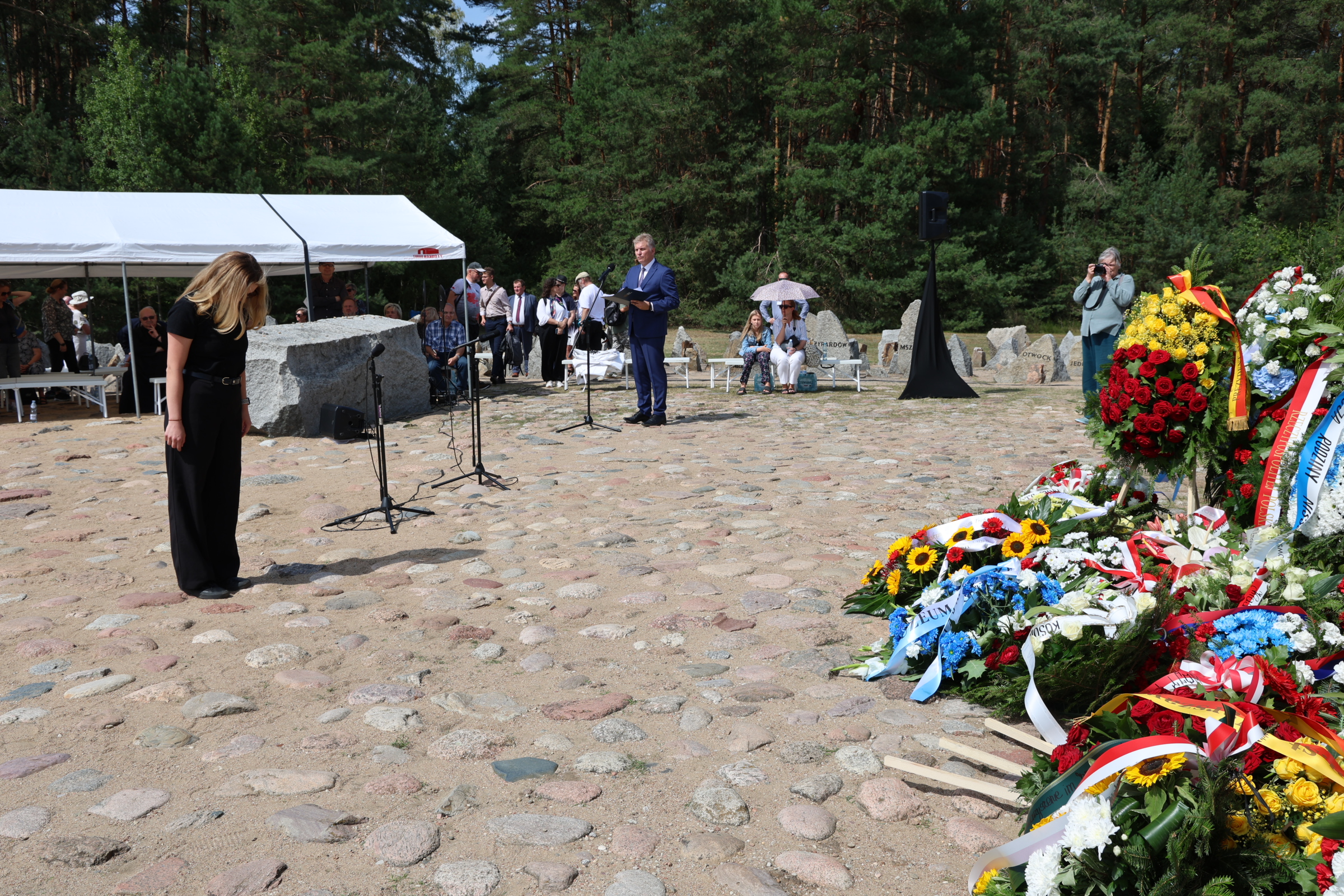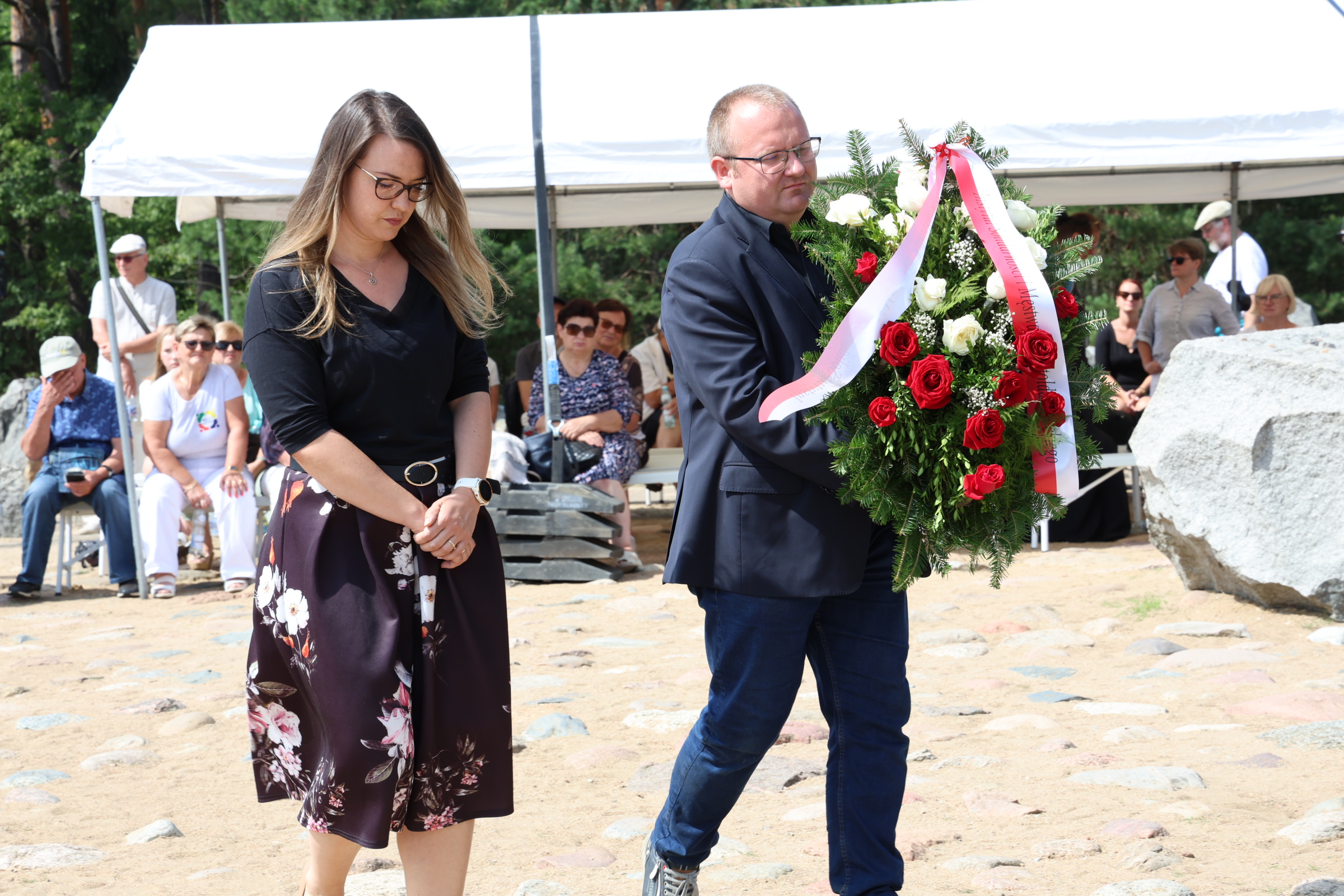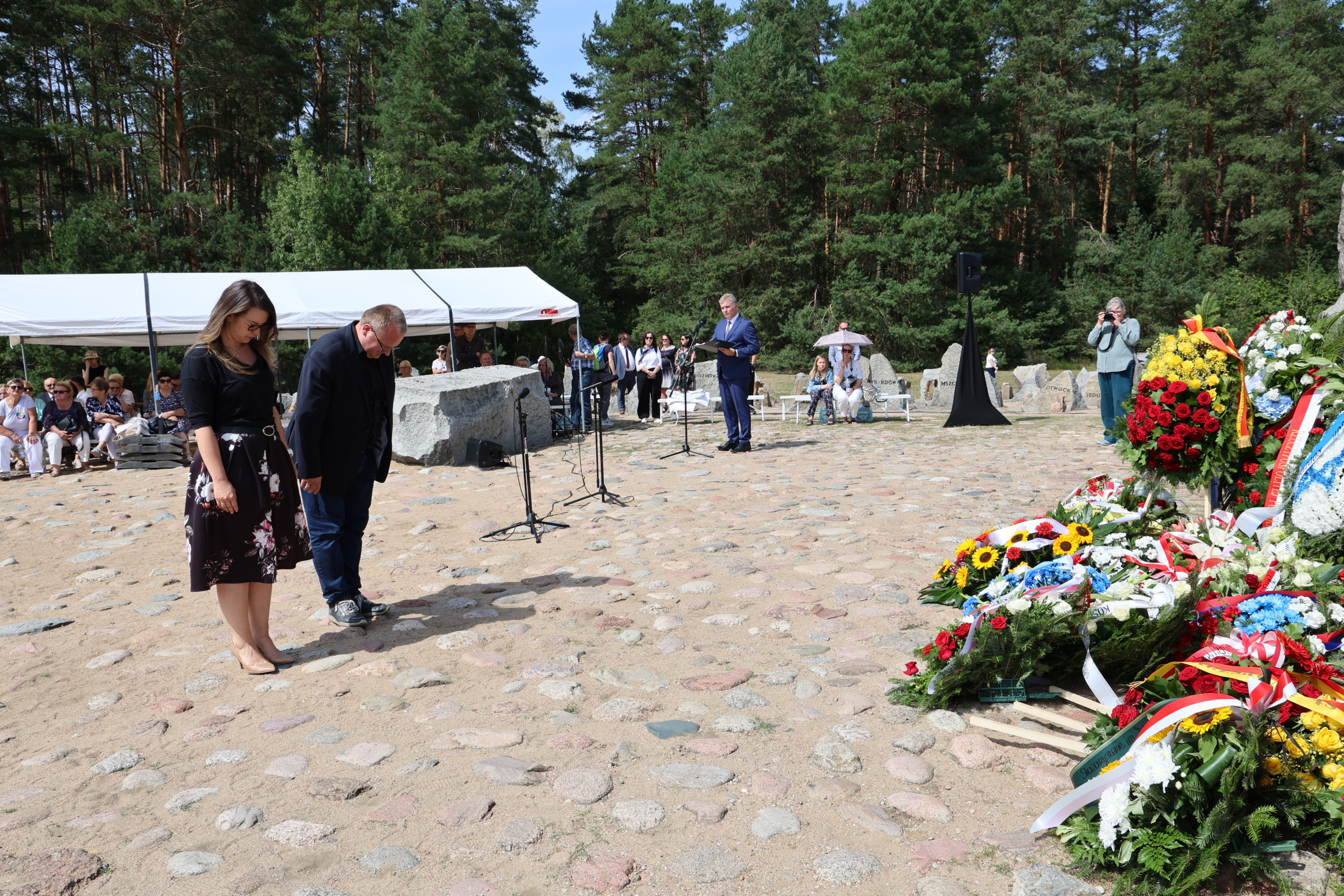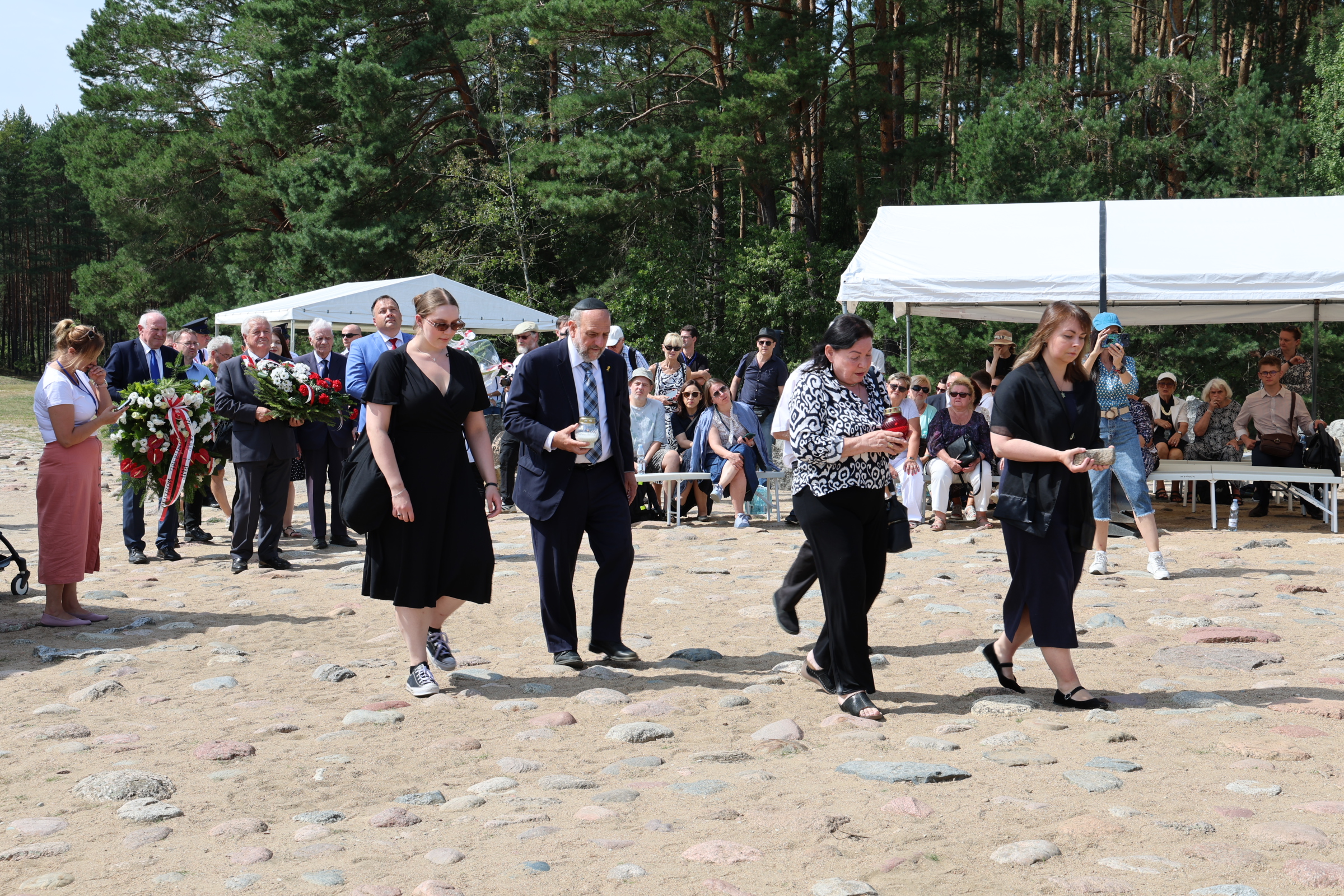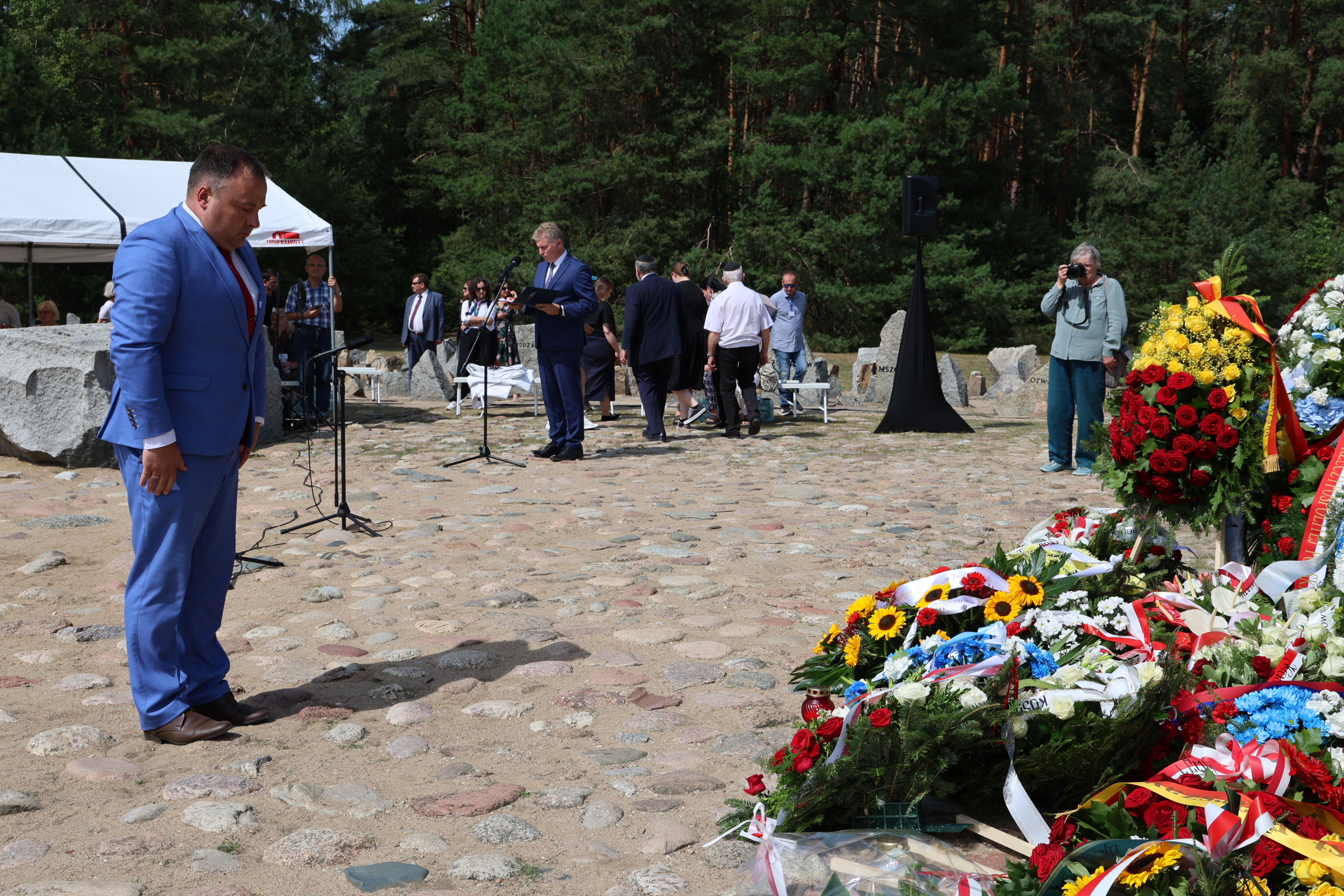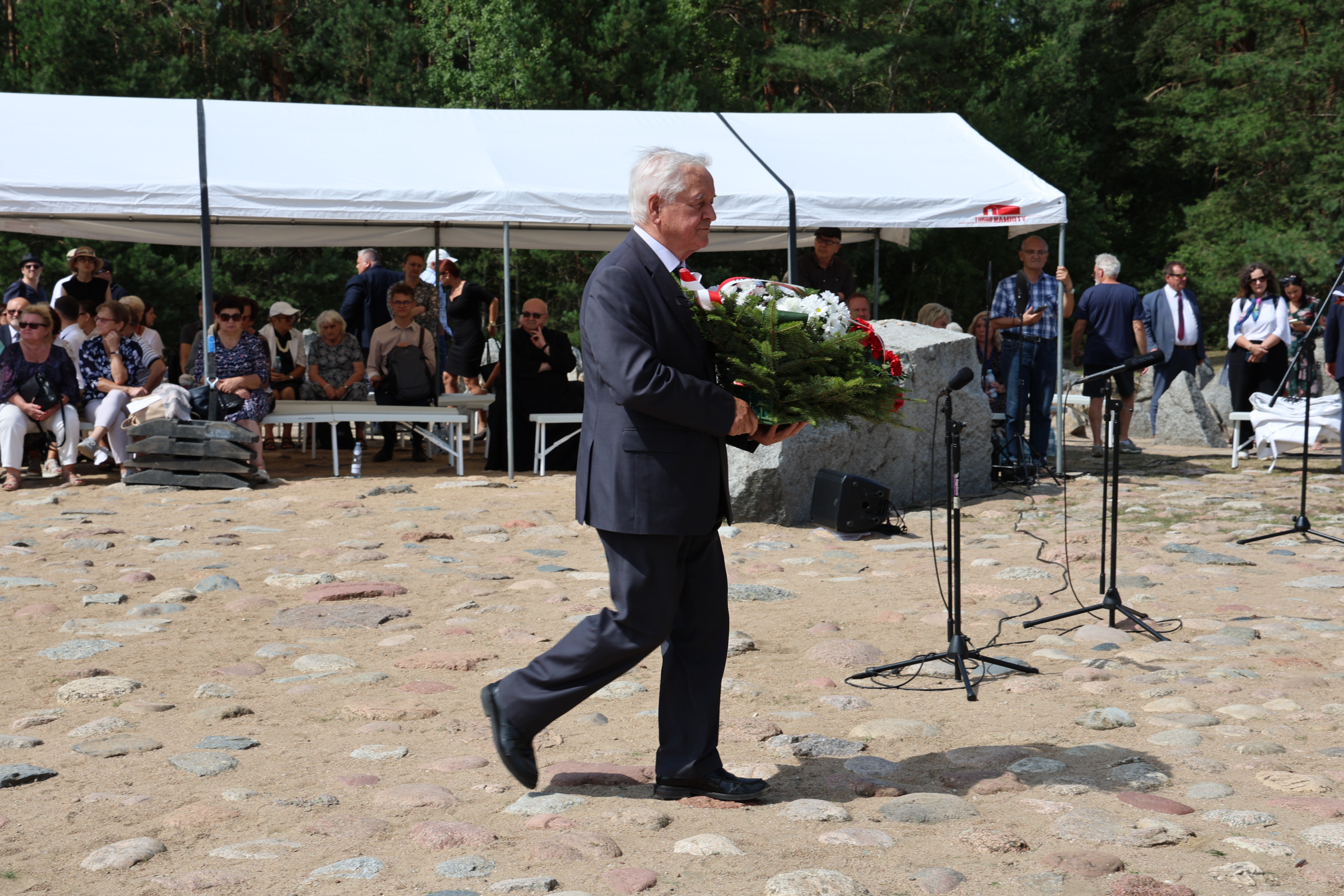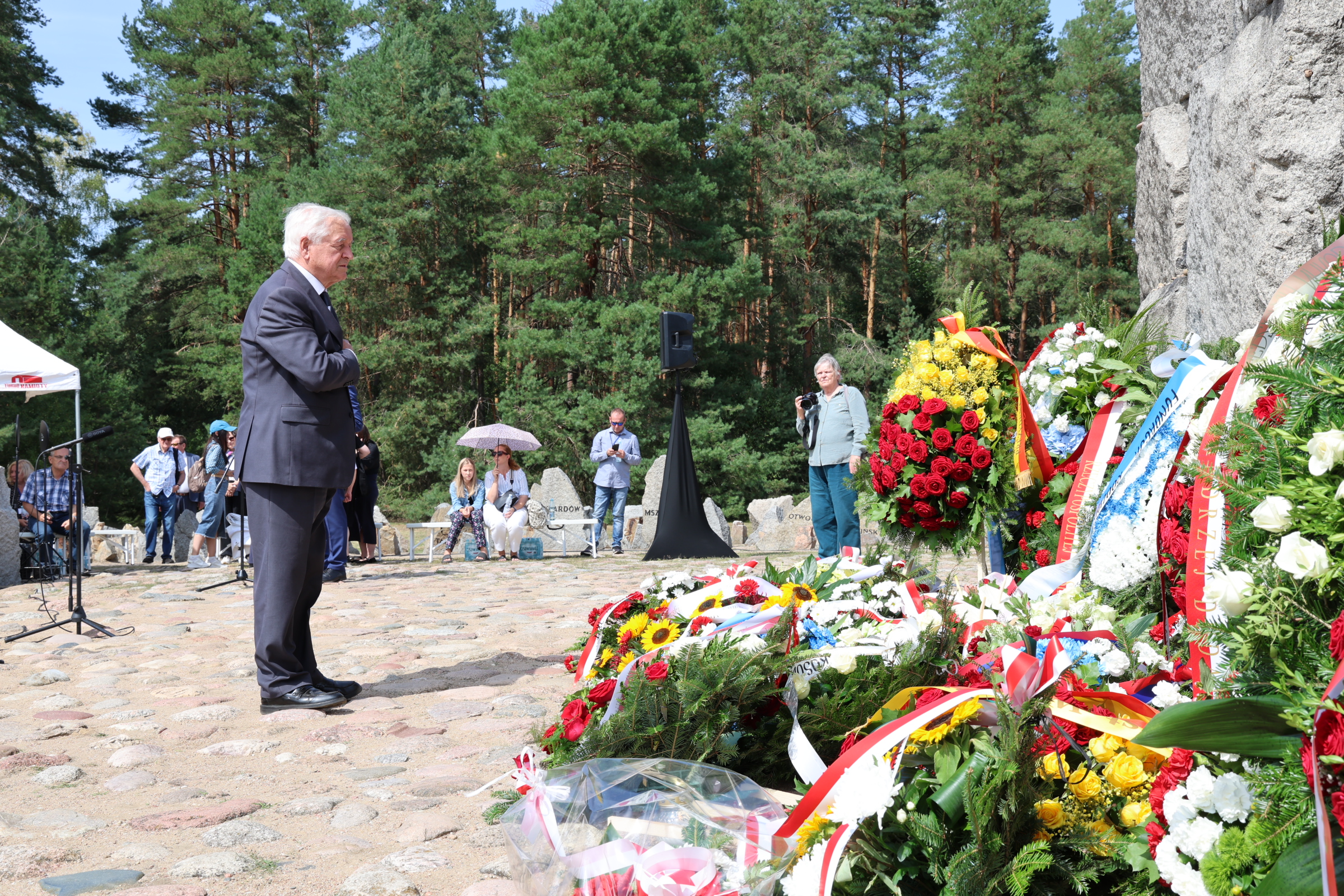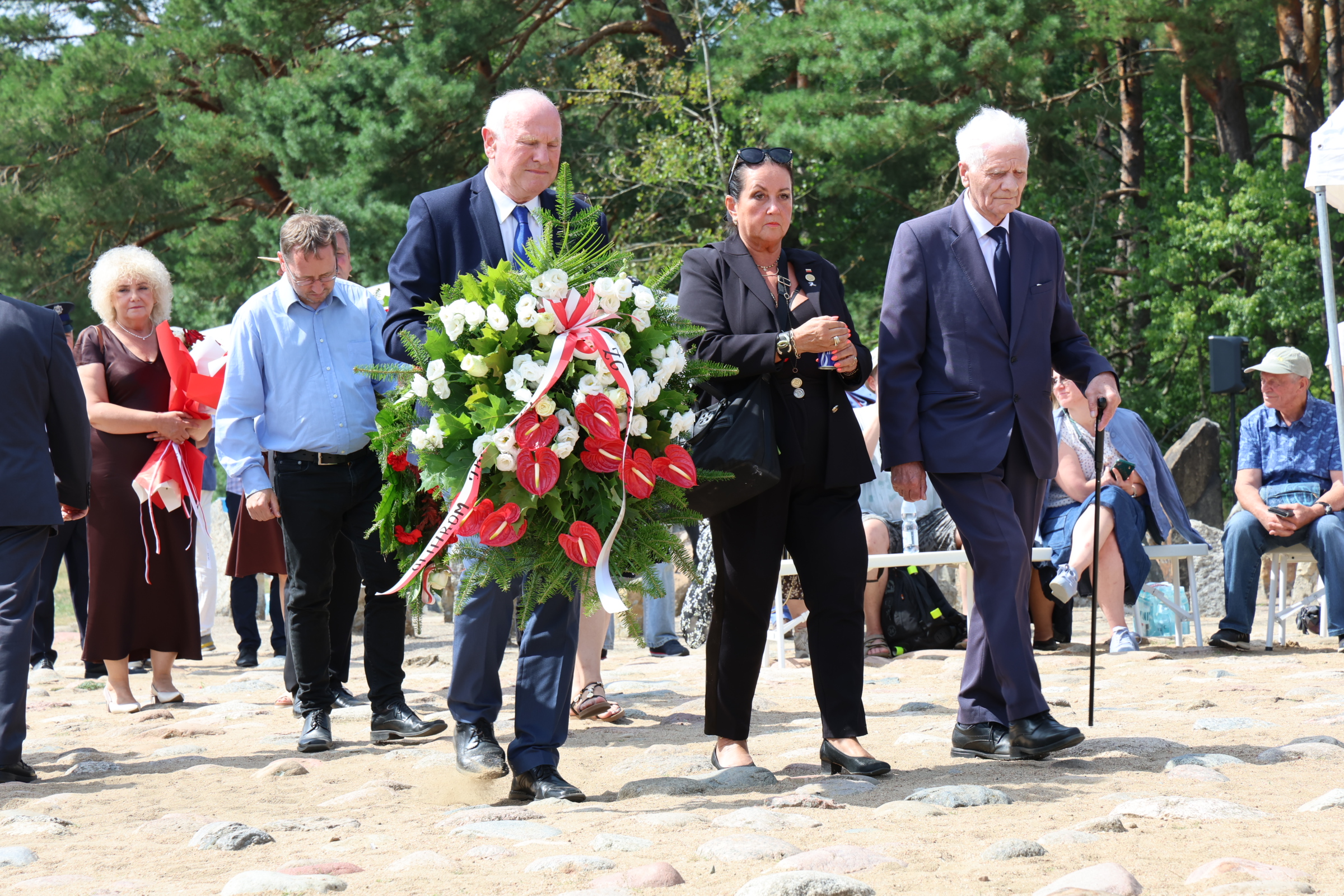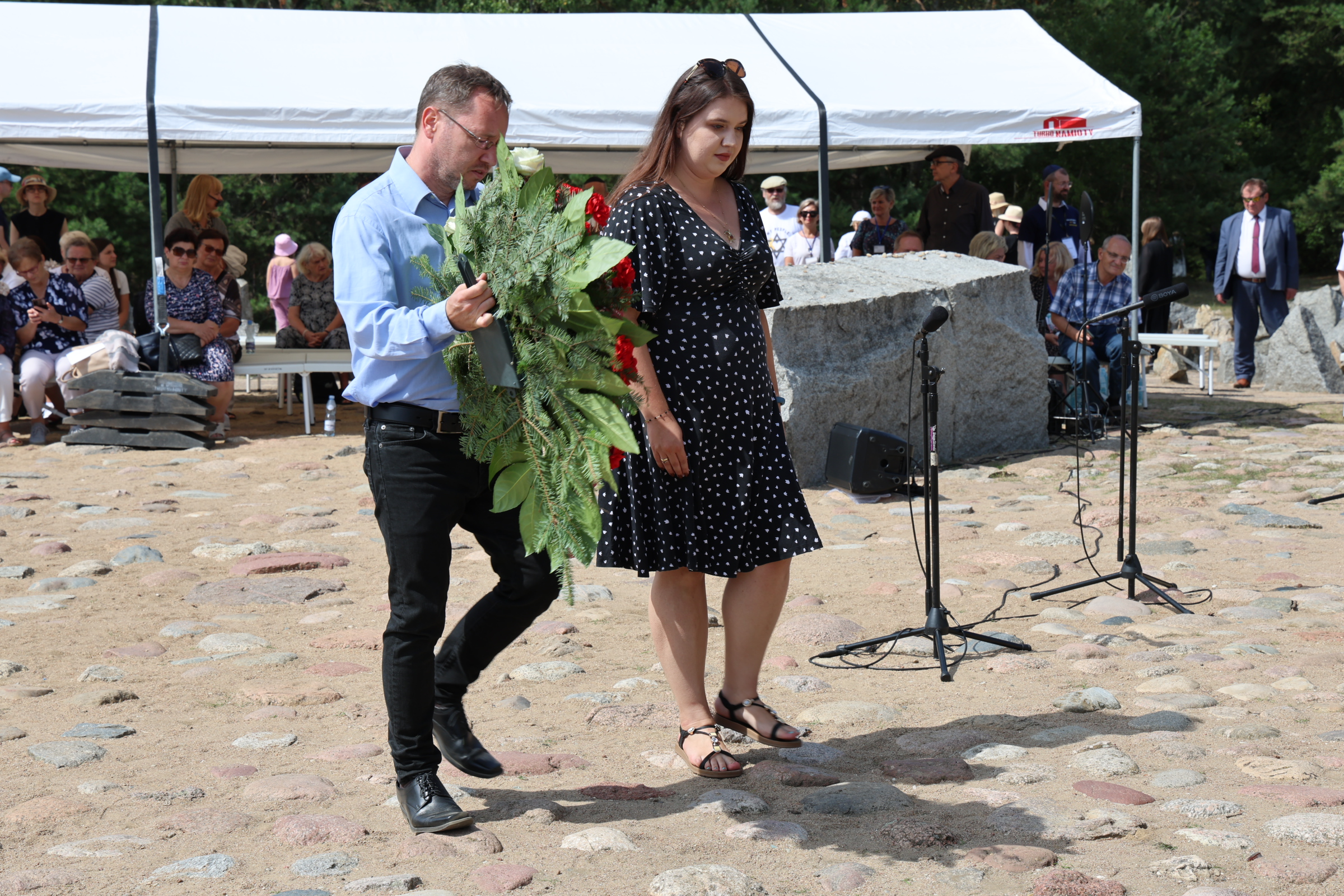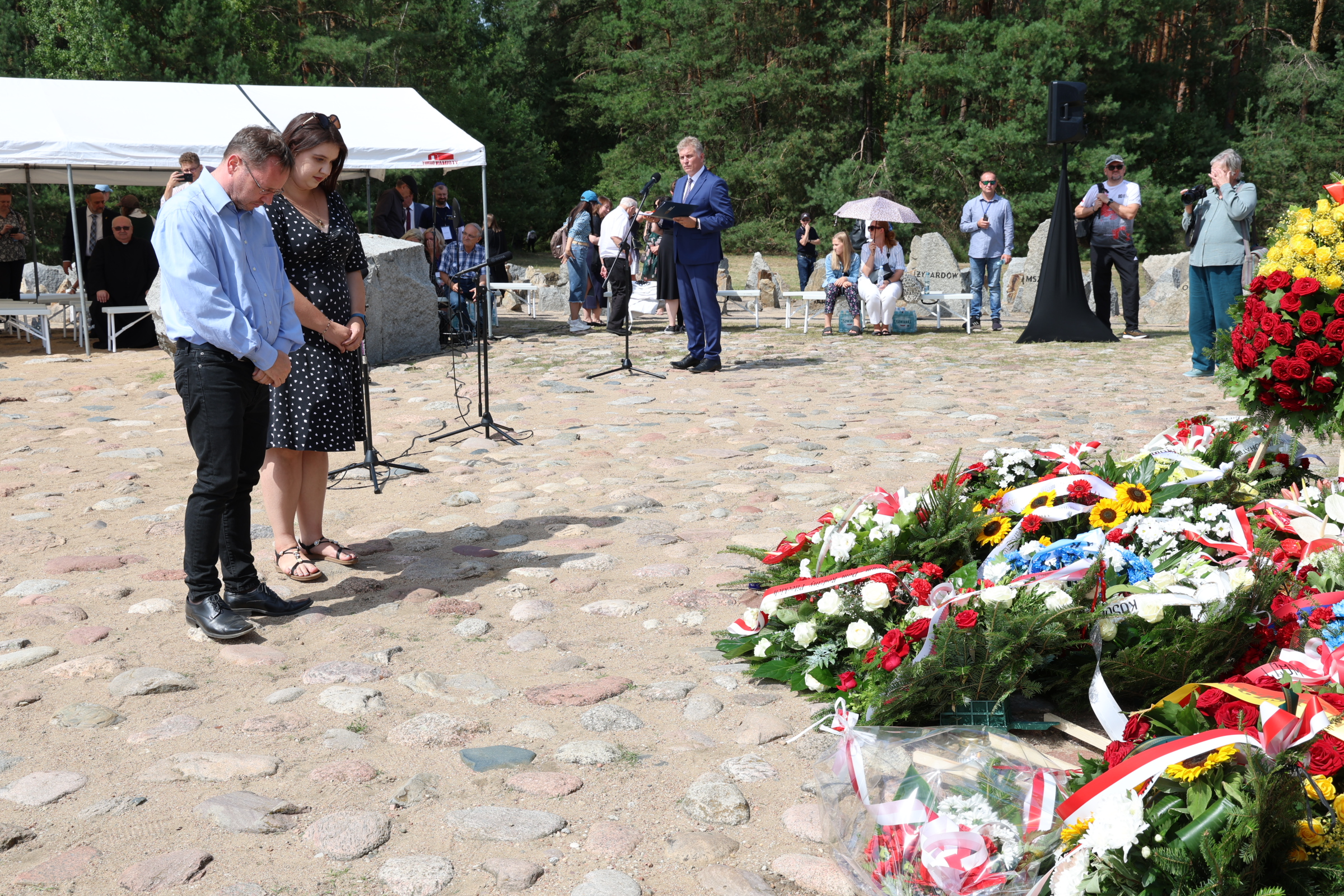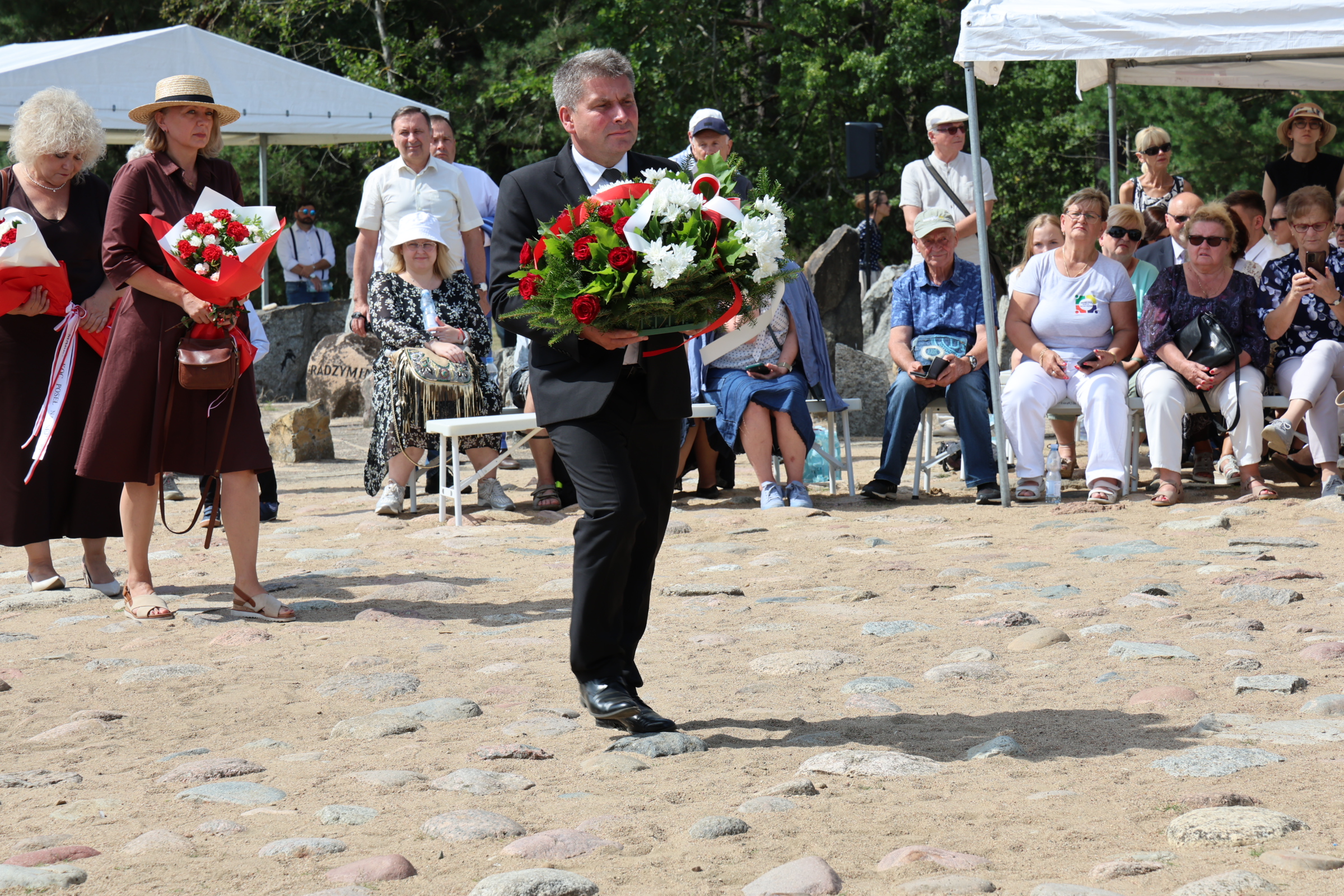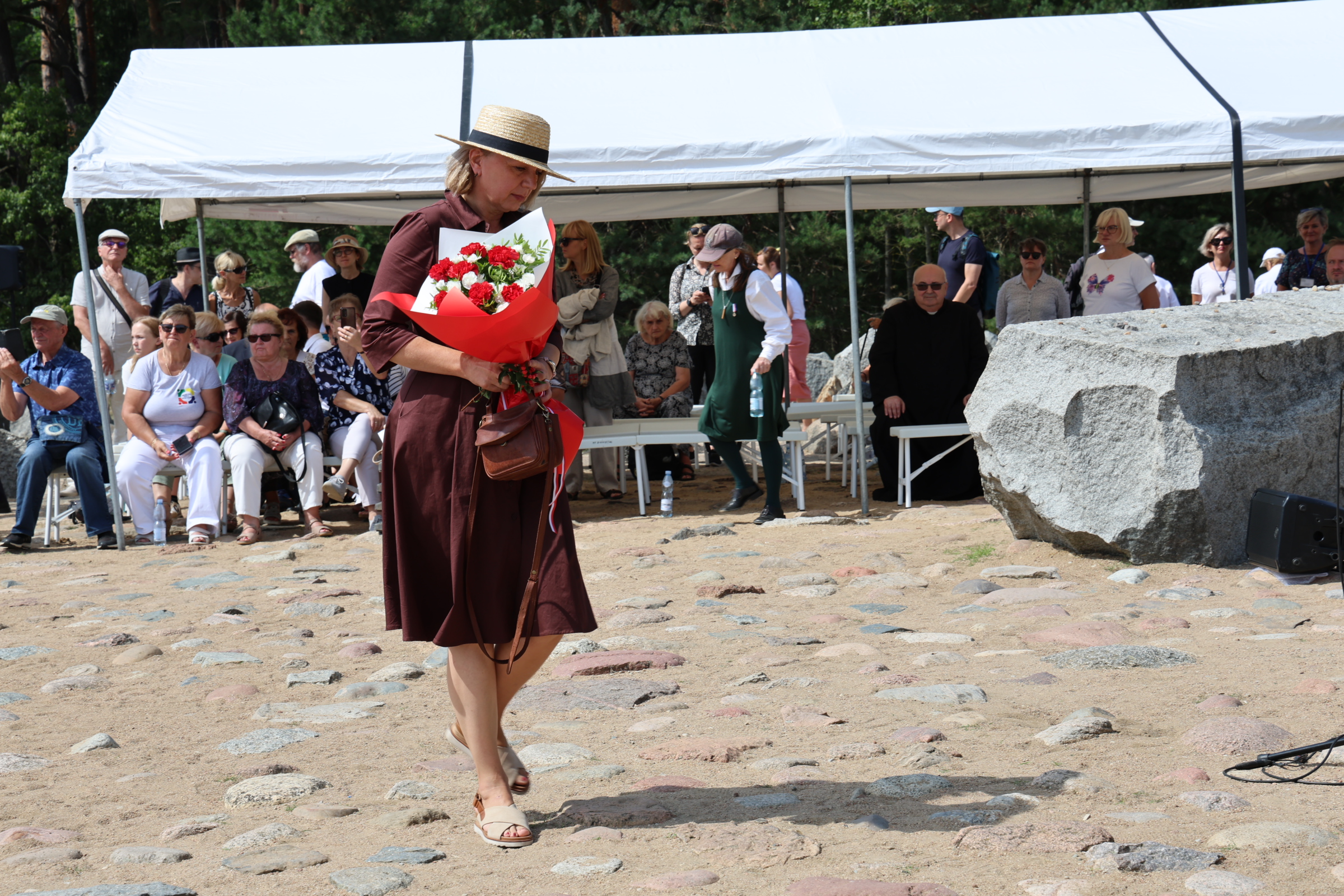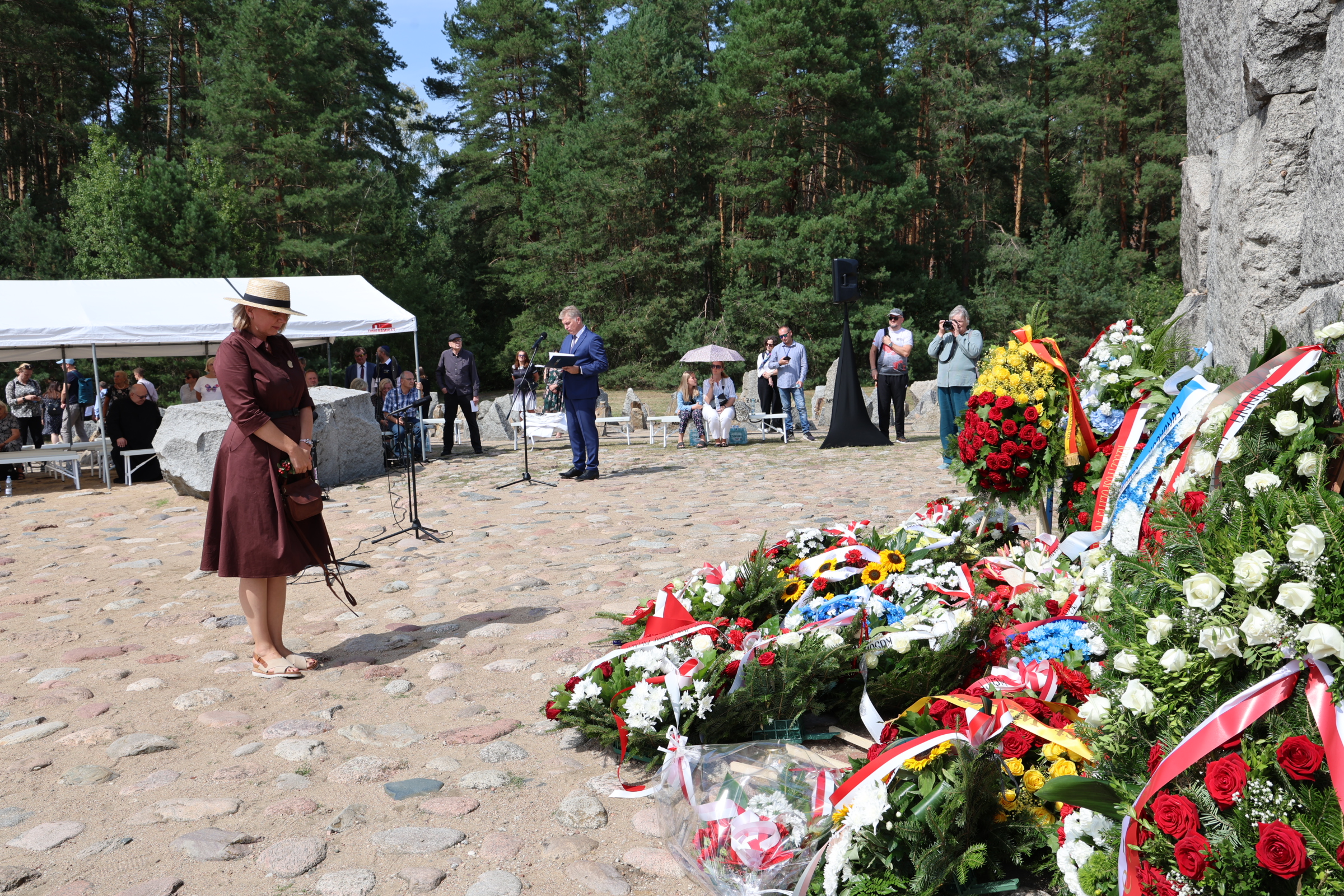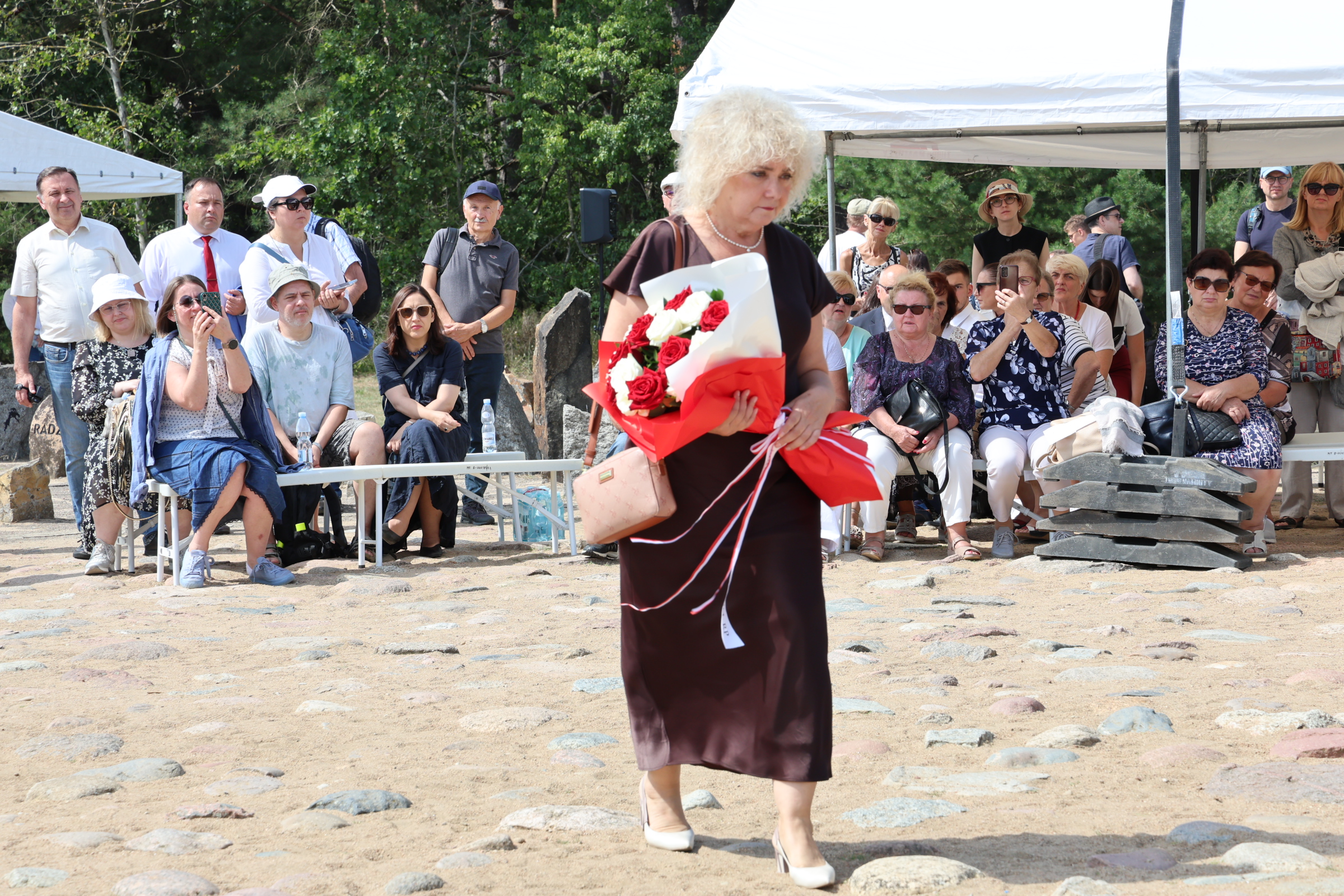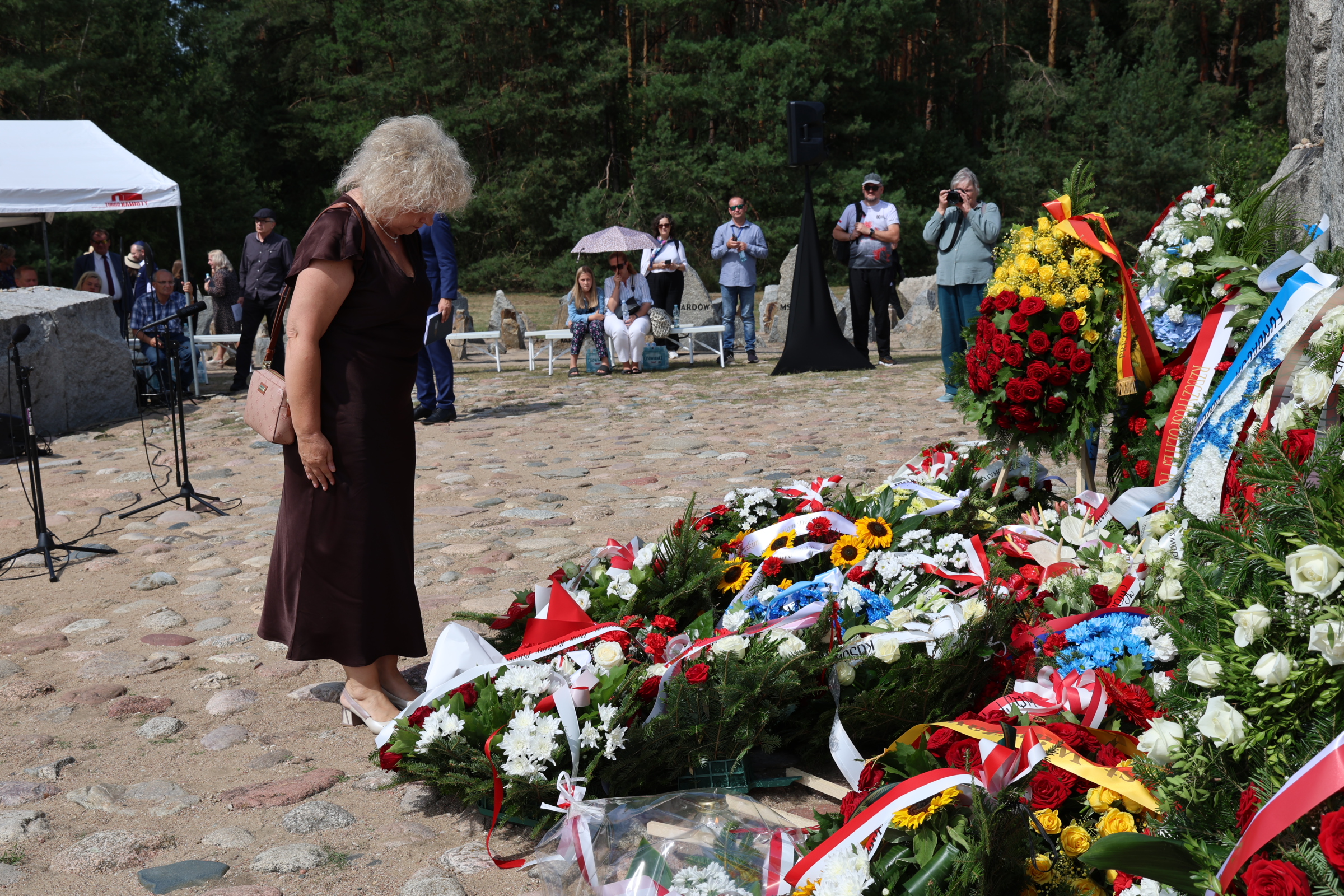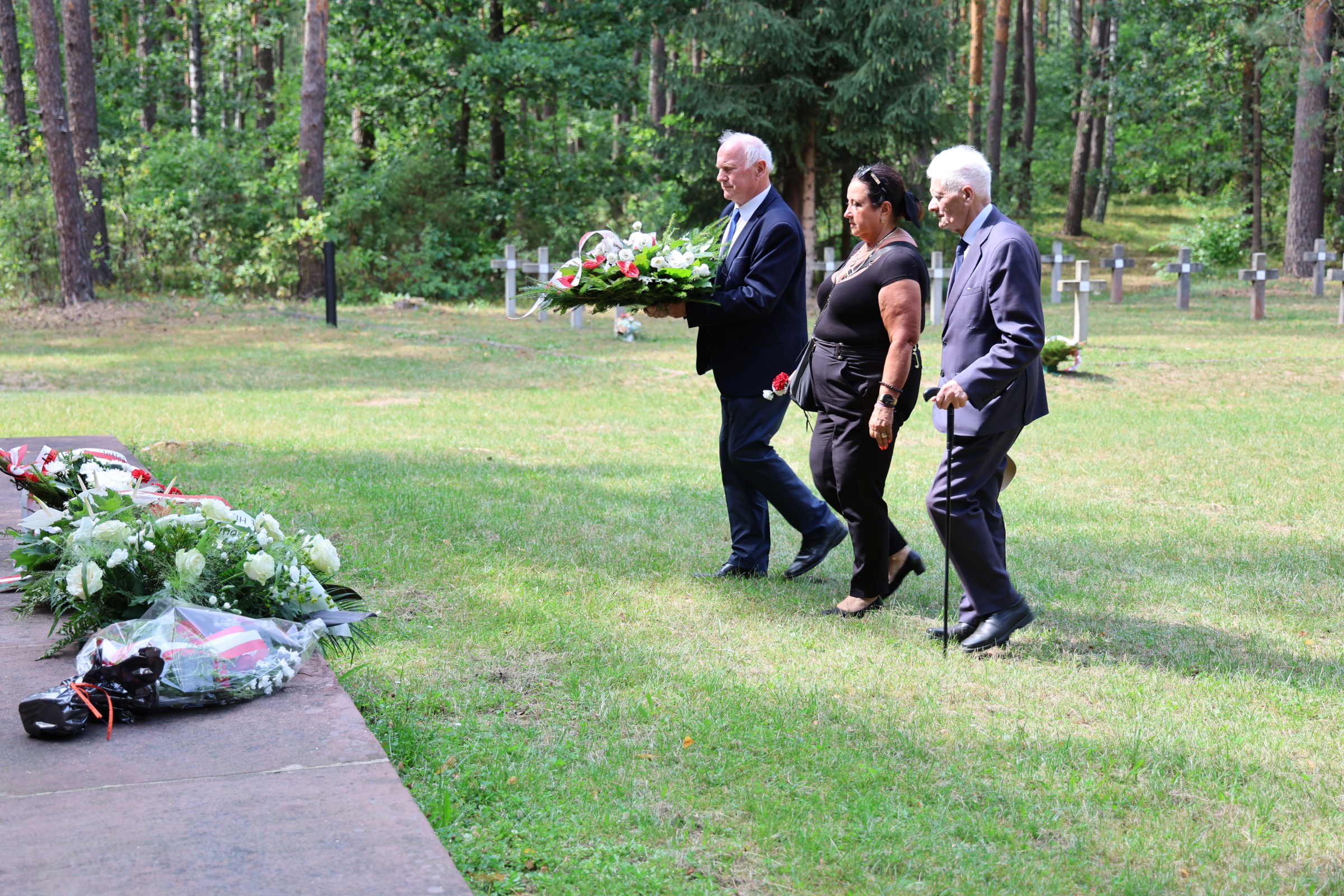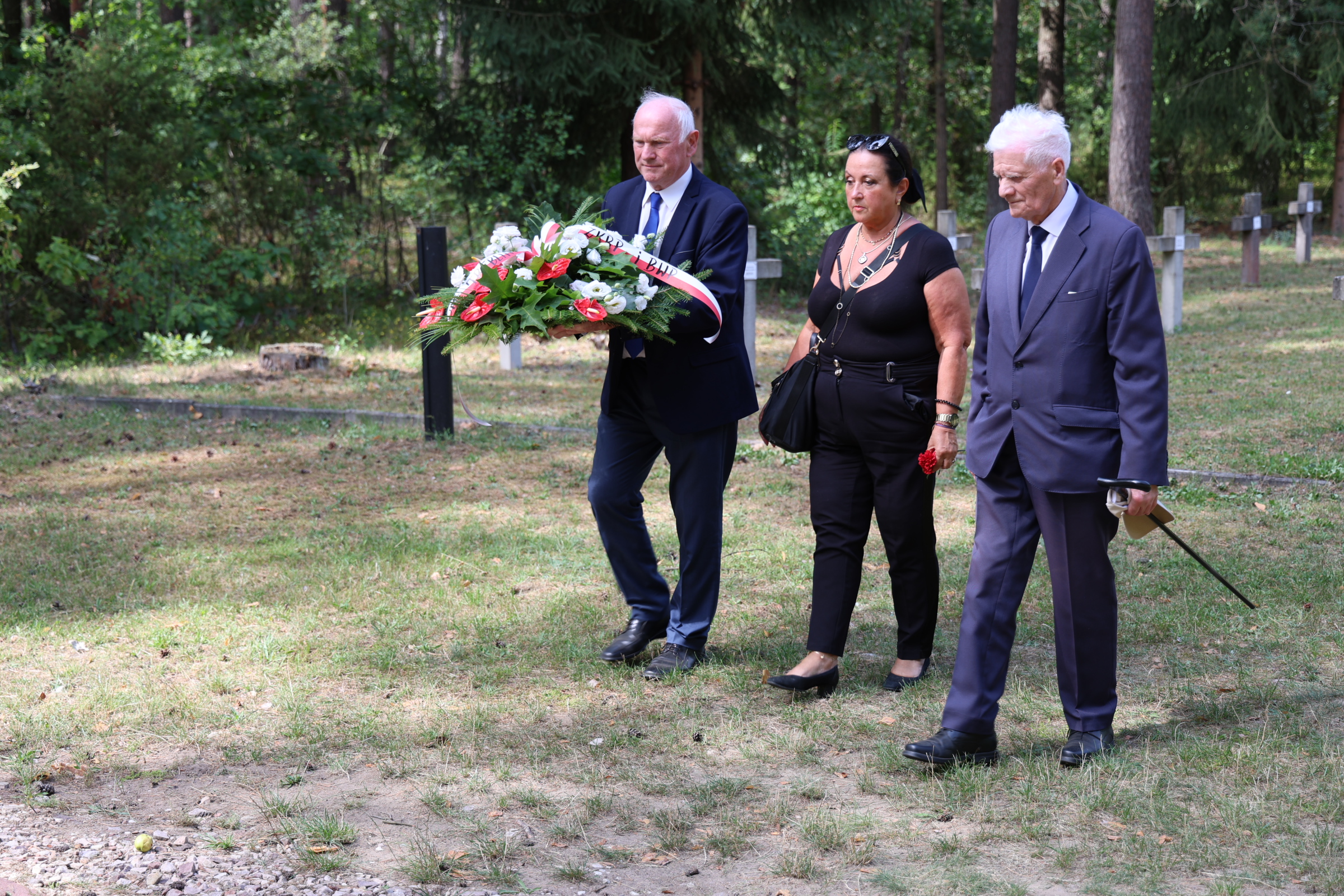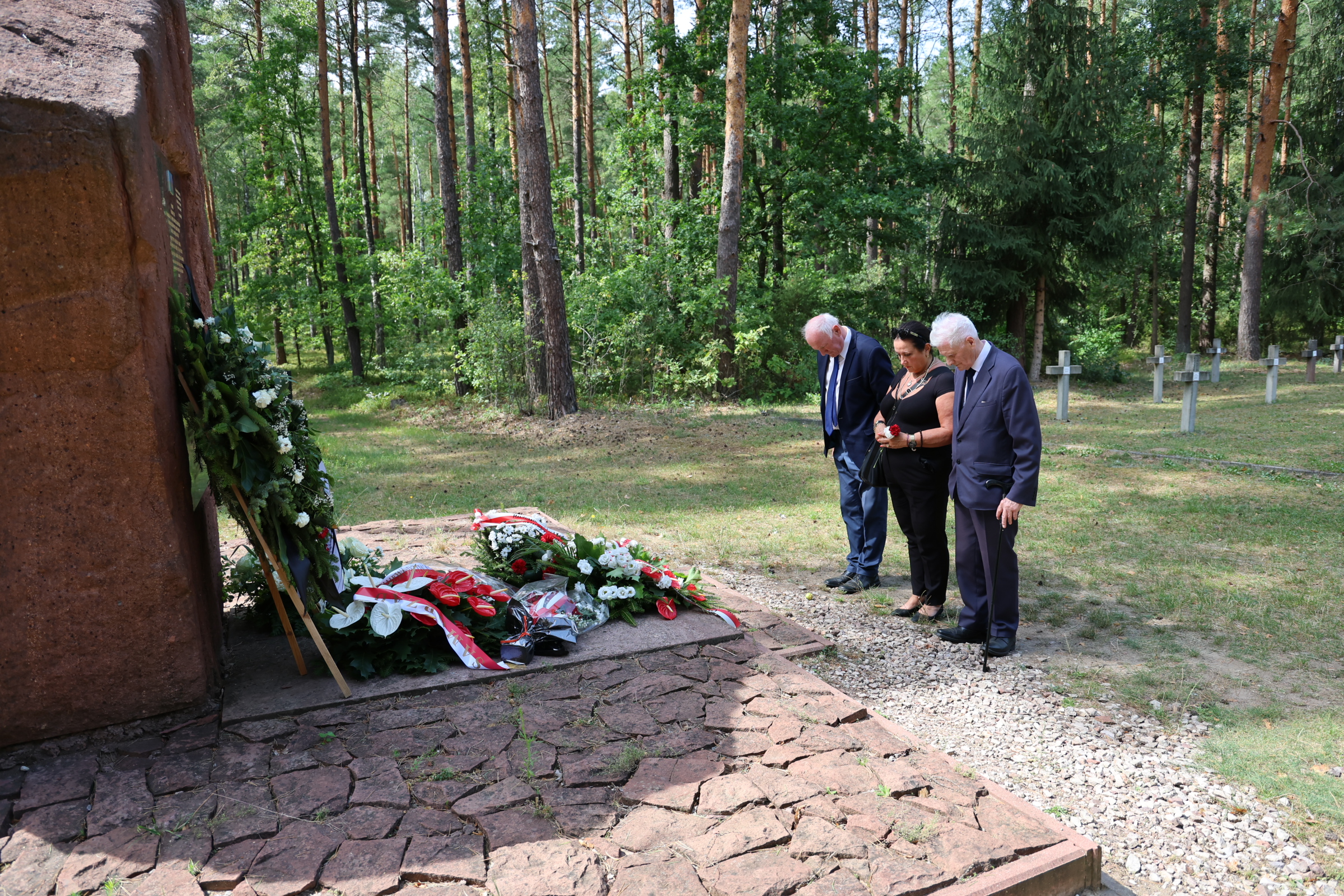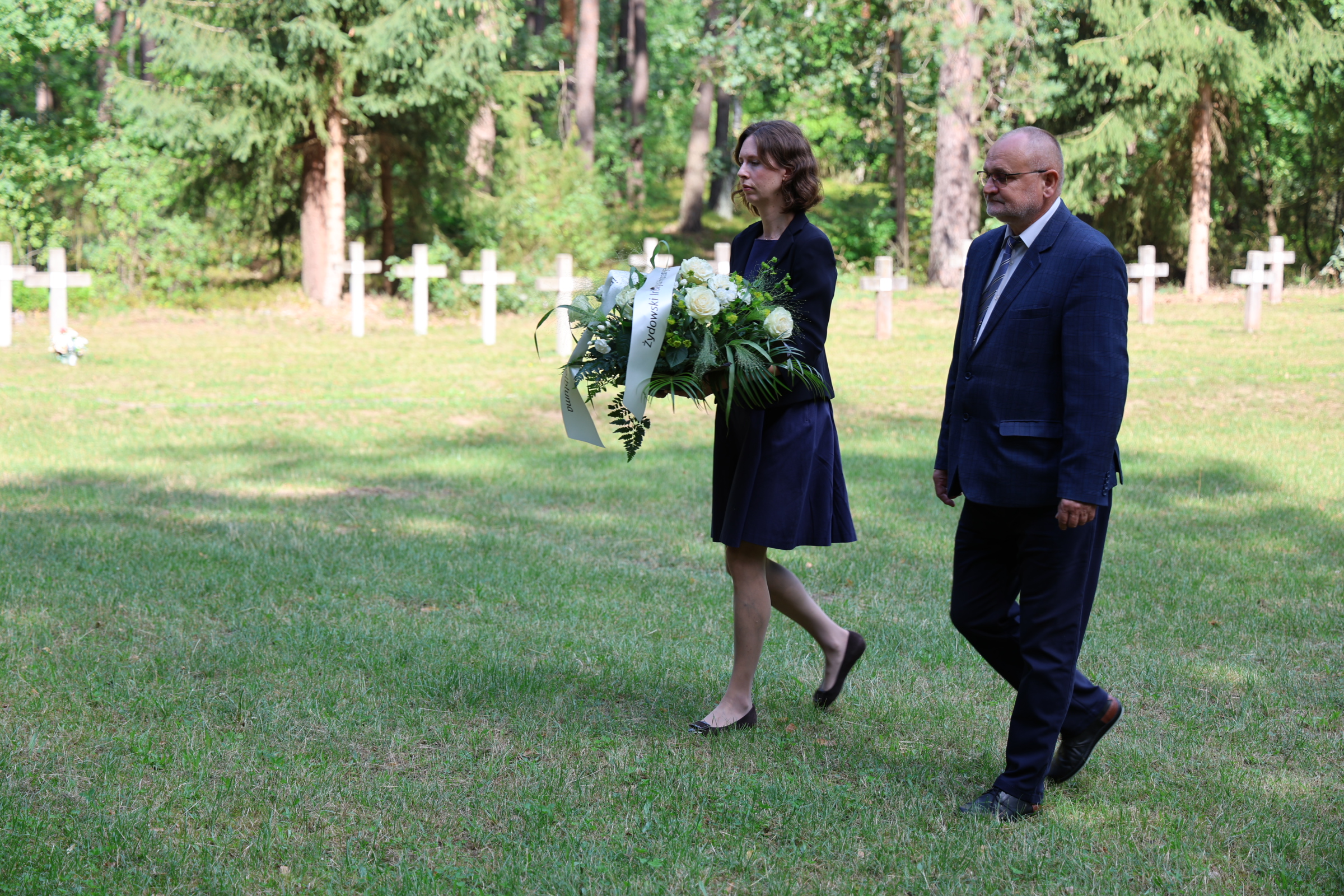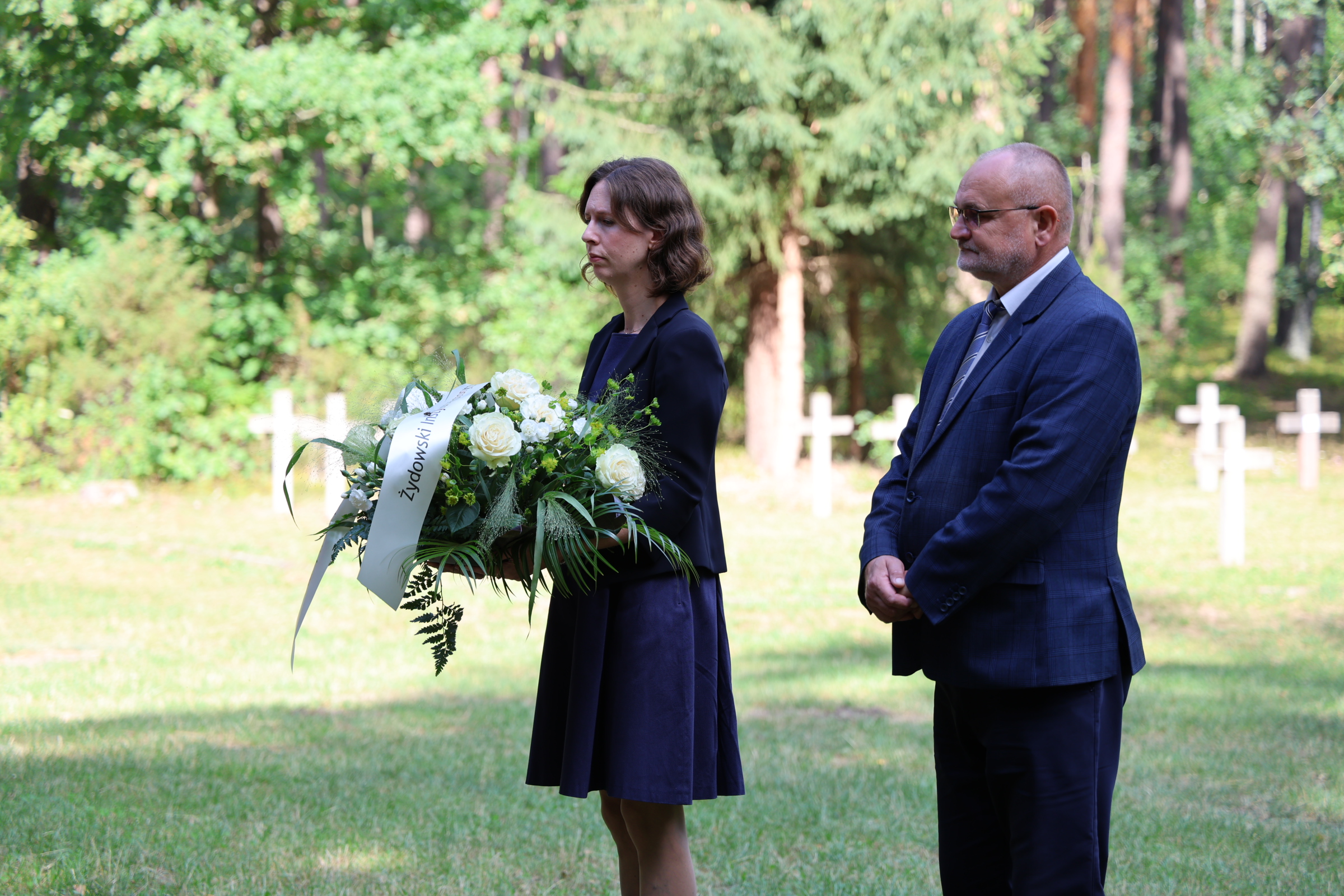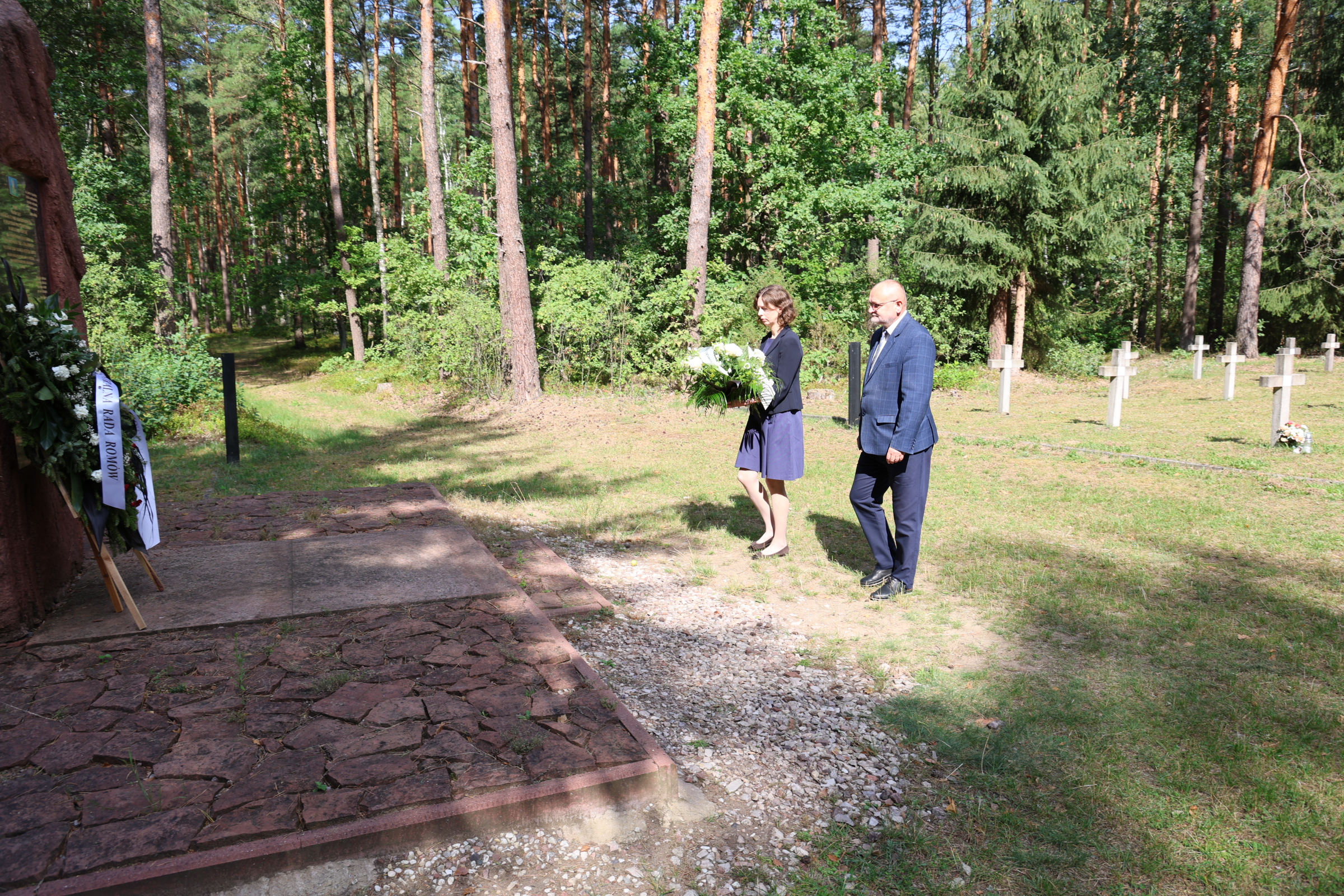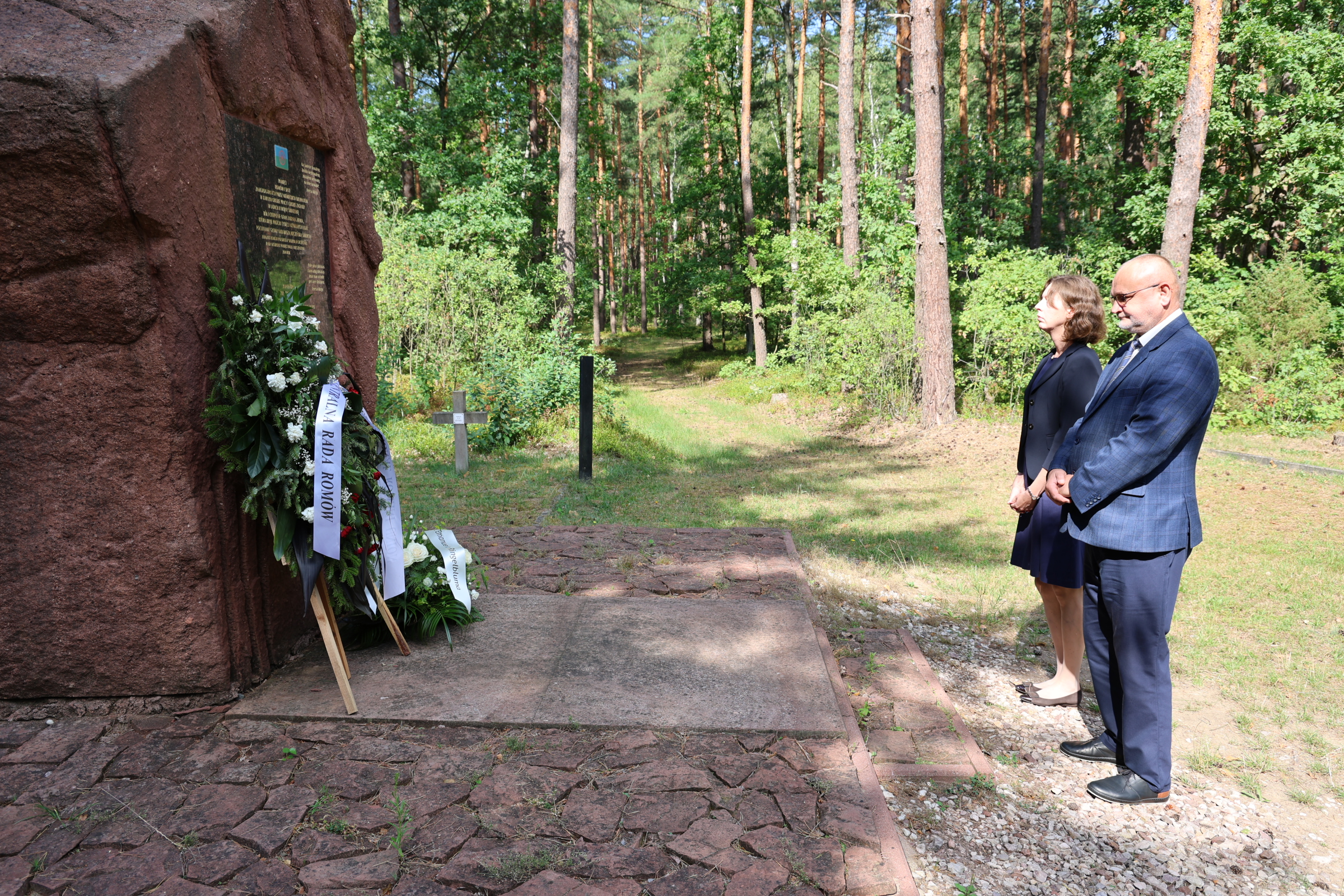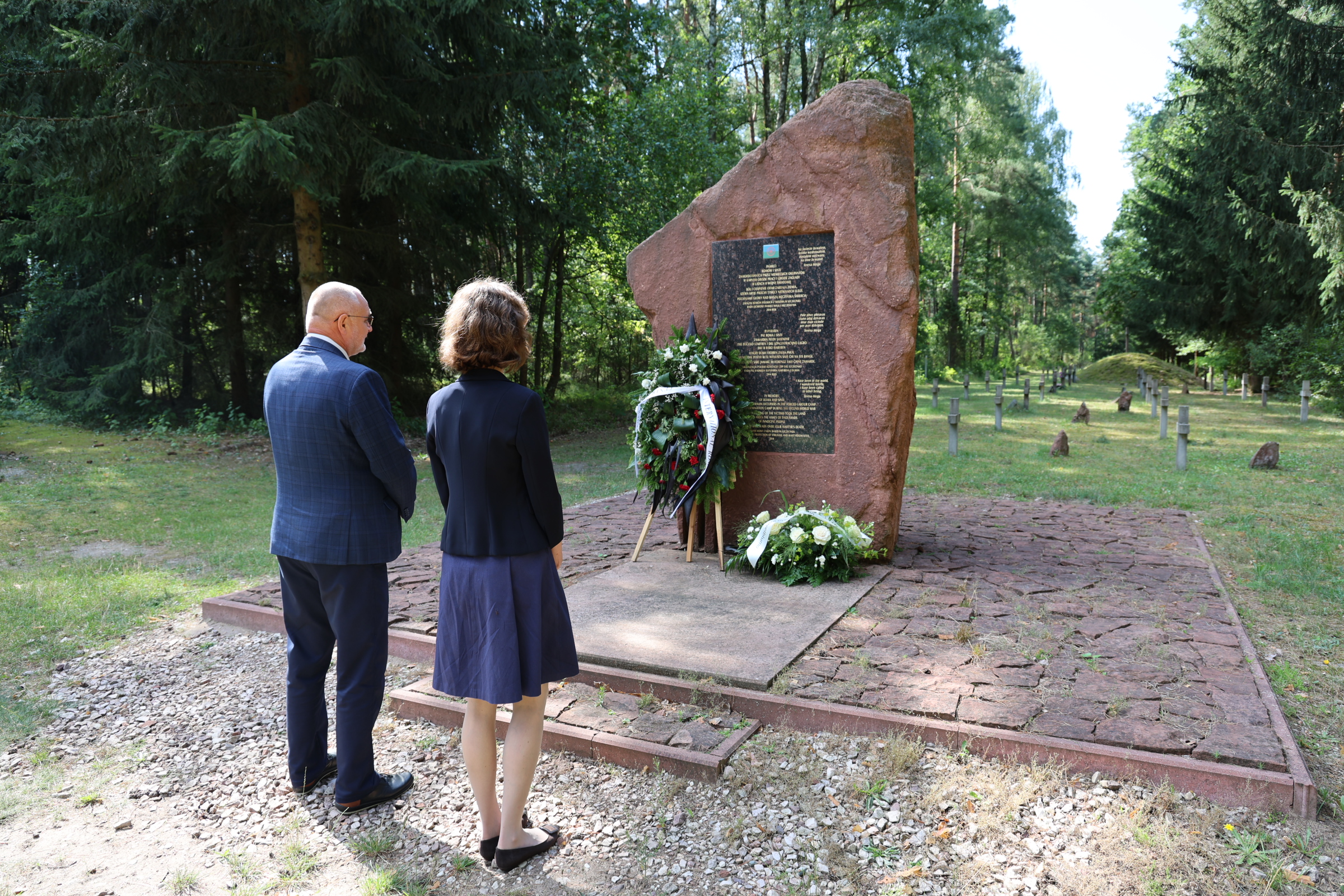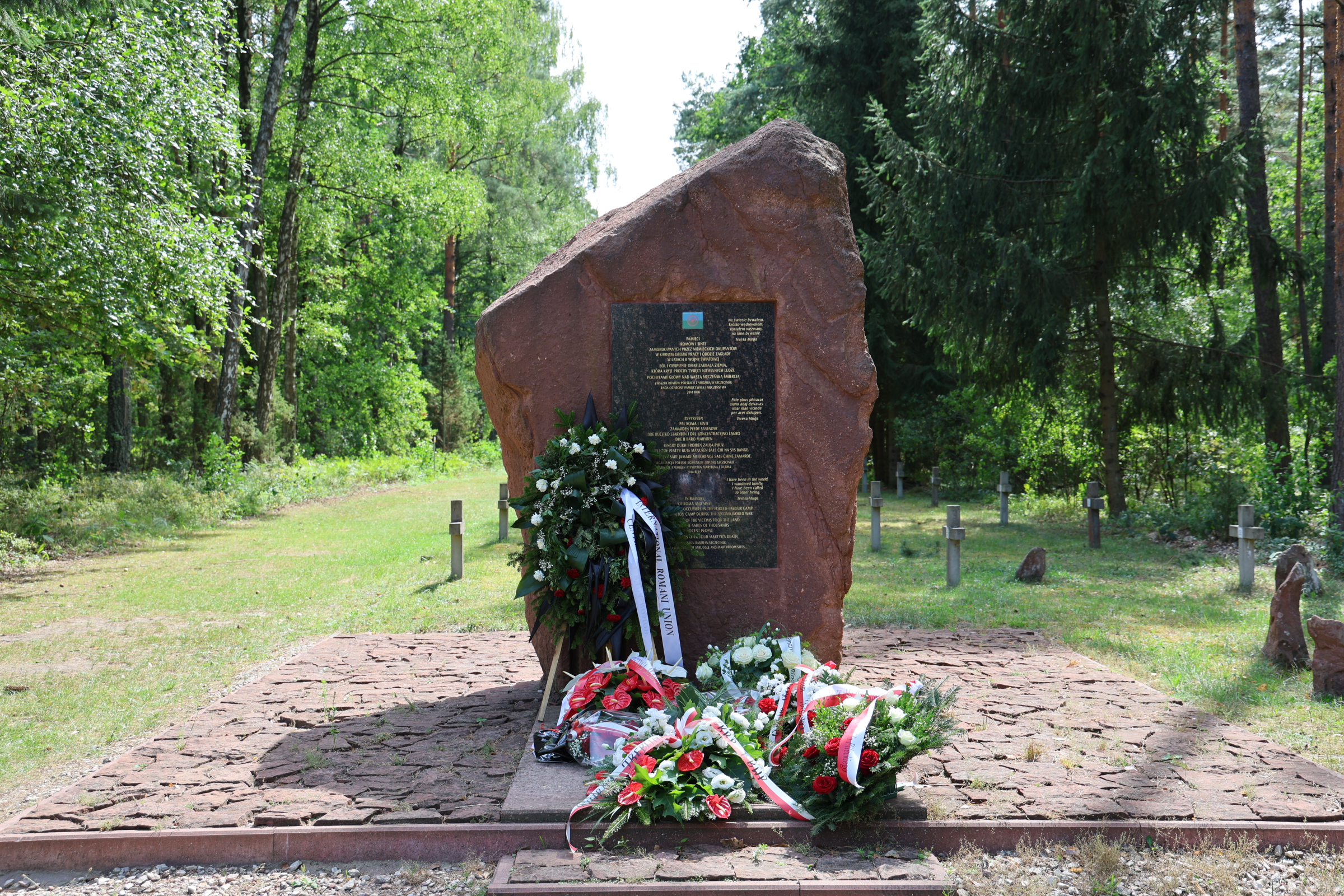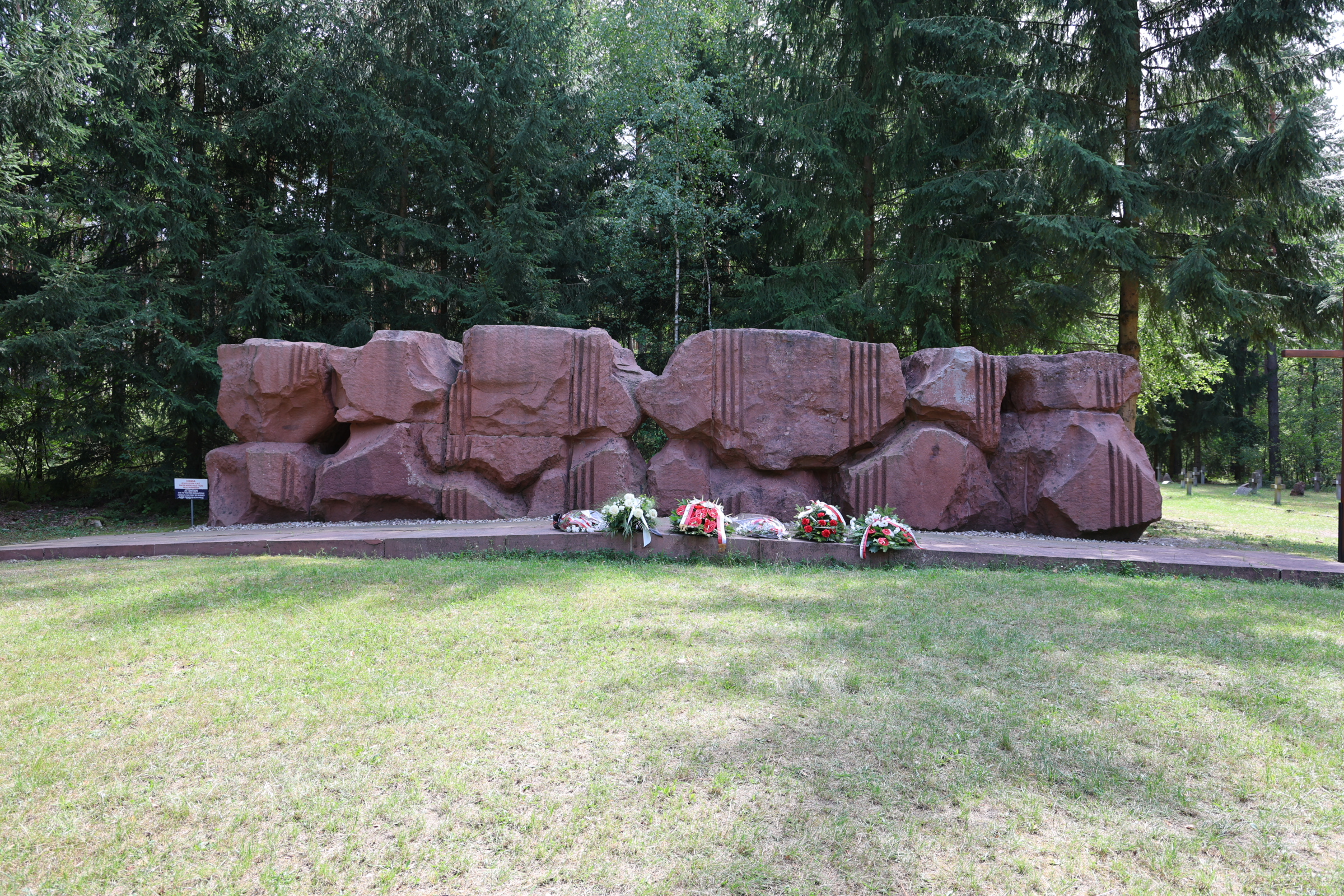On August 2nd, a ceremony was held to commemorate the revolt at the Treblinka Extermination Camp. The event was organized by the Emanuel Ringelblum Jewish Historical Institute in collaboration with the Treblinka Museum. On August 2, 1943, shortly before 4:00 PM, the revolt began in the Extermination Camp. At that time, there were 840 prisoners in the camp, of which 105 did not participate in the revolt. These were people who were mentally exhausted and resigned.
Samuel Willenberg described the atmosphere before the revolt:
“It was August 2, 1943, a date I shall never forget. […] It was a singular and unique day, one which we anticipated and hoped for. Our hearts pounded with the hope that maybe, just maybe, our long-nurtured dream would come true. We harbored no thoughts of ourselves and our lives. Our only desire was to obliterate the death factory which had become our home. We rose from our bench/beds, excited, tense, anticipating.”
Richard Glazar described the moment the revolt began with these words:
“It’s the second of August, nineteen hundred and forty-three. Out front, somewhere in the vicinity of our living quarters, a shot rings out. Afterward silence. Then the first hand grenade explodes, followed immediately by the second. I see the third one detonate on the asphalt lane. […] “Hurrah!” You hear it here and there, timidly at first. It sticks in my chest and catches in my throat until I can finally scream: “Hurrah!” The yelling gets louder and rises over the entire Treblinka complex.”
The ceremony at the central monument were initiated by Dr. Michał Trębacz, Director of the Emanuel Ringelblum Jewish Historical Institute. In his speech, he reminded:
“We gather today not only to remember the heroic revolt but also to testify to our memory of all the victims of the Treblinka Extermination Camp. About 800,000 men, women, and children were murdered here.”
Next, Ada Willenberg, a Holocaust survivor and widow of Samuel Willenberg, a prisoner of the Treblinka Extermination Camp, addressed the audience. She thanked those present for attending and emphasized that Treblinka is a family cemetery for her, where her closest relatives were murdered.
Following her, speeches were given by:
- Secretary of State in the Chancellery of the President of the Republic of Poland, Andrzej Dera, who read a letter from the President of the Republic of Poland, Andrzej Duda.
- Deputy Marshal of the Senate, Maciej Żywno, who read a letter from the Marshal of the Senate, Małgorzata Kidawa-Błońska.
- Marta Cienkowska, Deputy Secretary of State at the Ministry of Culture and National Heritage, who read a letter from the Minister of Culture and National Heritage, Hanna Wróblewska, thanking the Treblinka Museum for its intensive work to preserve memory and its involvement in the new investment—the construction of the exhibition and educational builiding.
- Martin Baxa, Minister of Culture of the Czech Republic.
- Shani Tayar, Deputy Ambassador of the State of Israel.
- Dr. Lorenz Barth, Director of the Culture Department at the German Embassy.
- Aldona Machnowska-Góra, Deputy Mayor of Warsaw.
- Dr. Karol Polejowski, Deputy President of the Institute of National Remembrance.
Also present at the ceremony were:
- Zuzanna Schnepf-Kołacz, Deputy Director for Program Affairs at the Jewish Historical Institute, along with Monika Iwanicka and Anna Ekielska.
- Monika Taras, Deputy Director for Program Collections at the Jewish Historical Institute.
- Lucia Zachar Ninčák, Cultural Diplomat from the Slovak Embassy.
- Rik Van Droogenbroeck, Ambassador of Belgium.
- Břetislav Dančák, Ambassador of the Czech Republic to Poland, leading a Czech delegation with Minister of Culture Martin Baxa.
- Vincenzo Spinelli, First Secretary at the Italian Embassy.
- Bosmat Baruch, Director of Public Diplomacy at the Israeli Embassy.
- A delegation from the Association of Veterans of the Republic of Poland and Former Political Prisoners: Waldemar Baranowski, President of the Mazowiecki Provincial Board, Marta Kościelecka, Member of the Presidium of the Mazowiecki Provincial Board, Józef Maliński, Treasurer of the Main Board.
- Representatives of the families of the Righteous Among the Nations: Aleksandra Kuriata and Adam Dudziński.
- Stanisław Stankiewicz, President of the Central Council of Roma.
- Piotr Rypson, Director of the Department of Cultural Heritage at the Ministry of Culture and National Heritage.
- Paweł Cukrowski, Director of the Department of Culture, Promotion, and Tourism at the Marshal’s Office.
- Alicja Cichoń, Head of the Delegation of the Mazowieckie Voivodeship Office in Siedlce.
- Beata Michalec, Councilor of Warsaw.
- Piotr Kruze, Department of Jewish Diaspora Relations in the Department of Public and Cultural Diplomacy at the Polish Ministry of Foreign Affairs.
- Janusz Tomczak, President of the Congress of Polish Canadians.
- Gideon Nissenbaum, President of the Nissenbaum Family Foundation, along with his wife Jelena Nissenbaum, Renata Wójtiuk-Janusz, Member of the Board of the Nissenbaum Family Foundation, Wojciech Łygaś, Assistant to the Board of the Nissenbaum Family Foundation.
- Anna Dulczyk-Szulc, Deputy Director for Collections and Development at the Warsaw Museum.
- Dr. Katarzyna Person, Deputy Director for Scientific and Exhibition Affairs at the Warsaw Ghetto Museum.
- Eliza Czapska, Director of the Armory Museum at Liw Castle.
- Kinga Biedrzycka from the Pawiak Prison Museum, a branch of the Independence Museum.
- A delegation from the Pilecki Family House Museum in Ostrów Mazowiecka: Sergiusz Kazimierczuk and Katarzyna Lubczyńska.
- Adam Góral, Starosta of Sokołów County.
- Marek Renik, Deputy Starosta of Węgrów County.
- Bartłomiej Tomasz Pieńkowski, Deputy Staroste of Ostrów Mazowiecka District.
- Jan Słomiak, Mayor of the City and Commune of Kosów Lacki.
- Zbigniew Kłusek, Wójt of Stoczek Commune.
- Marianna Kobylińska, Wójt of Sterdyń Commune.
- Monika Banaszek, Head in the City of Marki Commune.
- Sylwester Rytel-Andrianik, Councilor of Sokołów County.
- Barbara Janina Sochal, President of the Janusz Korczak Association of Poland.
- Zbigniew Niziński, President and Founder of the “Pamięć, która trwa” Foundation.
- Ewa Teleżyńska-Sawicka and Paweł Sawicki from the Memory of Treblinka Foundation.
- Zofia Chyra-Rolicz, Member of the Museum Council at the Treblinka Museum.
- Małgorzata Iwańska-Kania, Director of the Municipal Public Library in Sokołów Podlaski.
- A delegation from the Sokołów Podlaski Cultural Center: Grzegorz Gil, Head of the SOK Education Department, and Aleksandra Maksymiak.
- Tomasz Nowak, University of Siedlce.
- Henryk Kosieradzki, Architect from Siedlce.
- Ewa Siwek, Director of the Community Center for Culture and Sports in Małkinia Górna.
- Hanna Przesmycka, Director of the School Complex in Kosów Lacki.
- Sylwia Kędzierska-Jasik, Chairwoman of the Board, Grażyna Majer, Member of the Board of the Jewish Religious Community in Warsaw, as well as Magdalena Gudzińska-Adamczyk, Monika Michnowska, Roman Byczuk.
After the speeches, a prayer was led by Michael Schudrich, Chief Rabbi of Poland, and Canon Józef Poskrobko from the Catholic parish in Prostyń.
Guests could also view the outdoor exhibition “The Lost Artistic World. In Memory of the Artists Murdered in the Treblinka Extermination Camp” prepared by the Treblinka Museum. The exhibition will be on display until the end of August. The exhibition is curated by Anna Remiszewska from the Scientific and Publishing Department of the Treblinka Museum.
During the 81st Anniversary of the camp revolt, attendees could listen to “The Song of Treblinka” performed by the Kameleon Choir of the Mokotów District under the baton of Katarzyna M. Boniecka.
On this important day, delegations from the Jewish Historical Institute, the Marshal of the Mazowieckie Voivodeship, the Sokołów Podlaski Starosty, and the Treblinka Museum also paid tribute to the victims of the Treblinka I Labor Camp by laying flowers at the Execution Site.
Quotes sources:
S.Willenberg, Revolt in Treblinka, Żydowski Instytut Historyczny, Warszawa, 1992.
R.Glazar, Trap with a Green Fence, Northwestern University Press, Evanston, Illinois, 1999.






